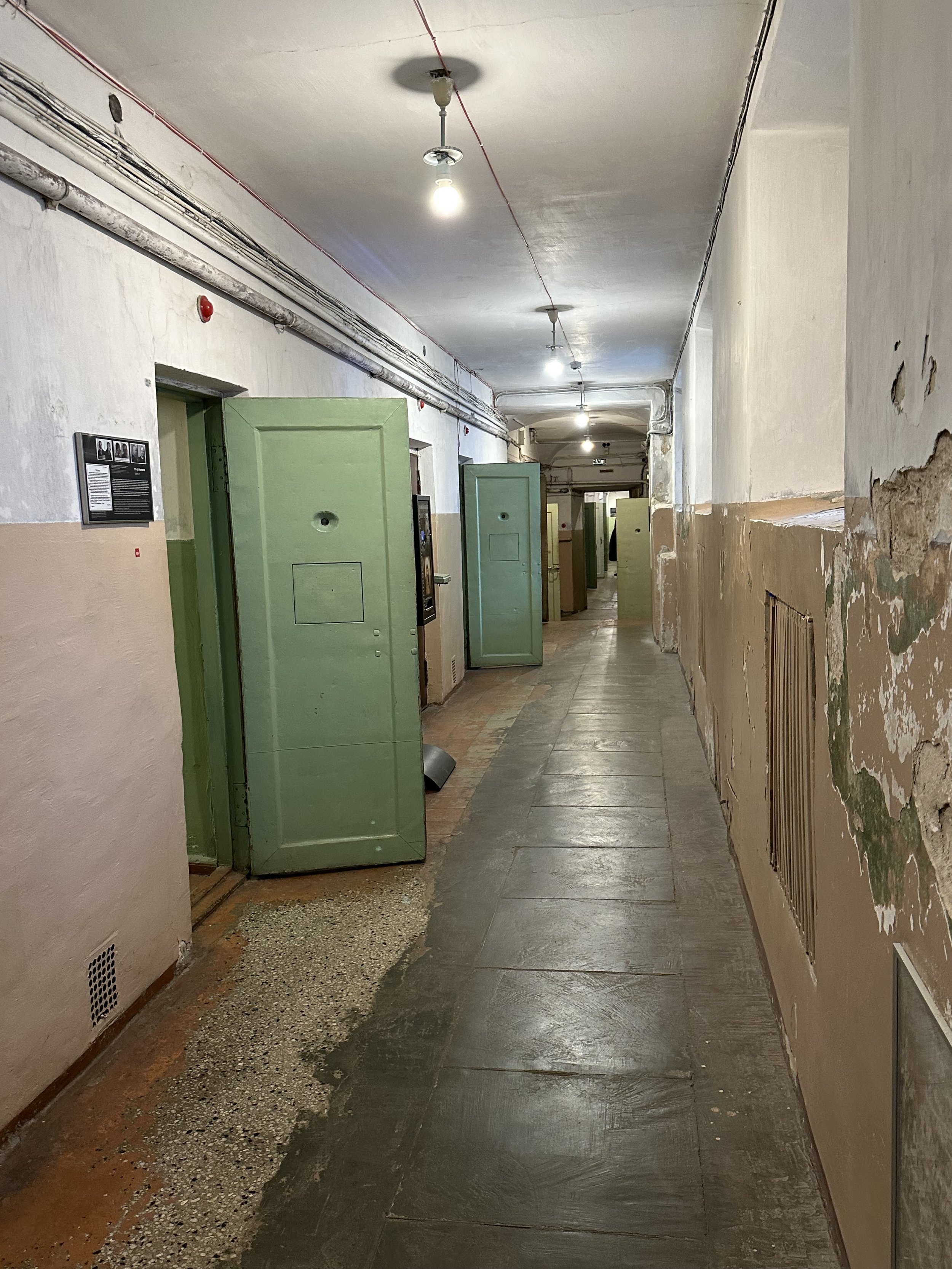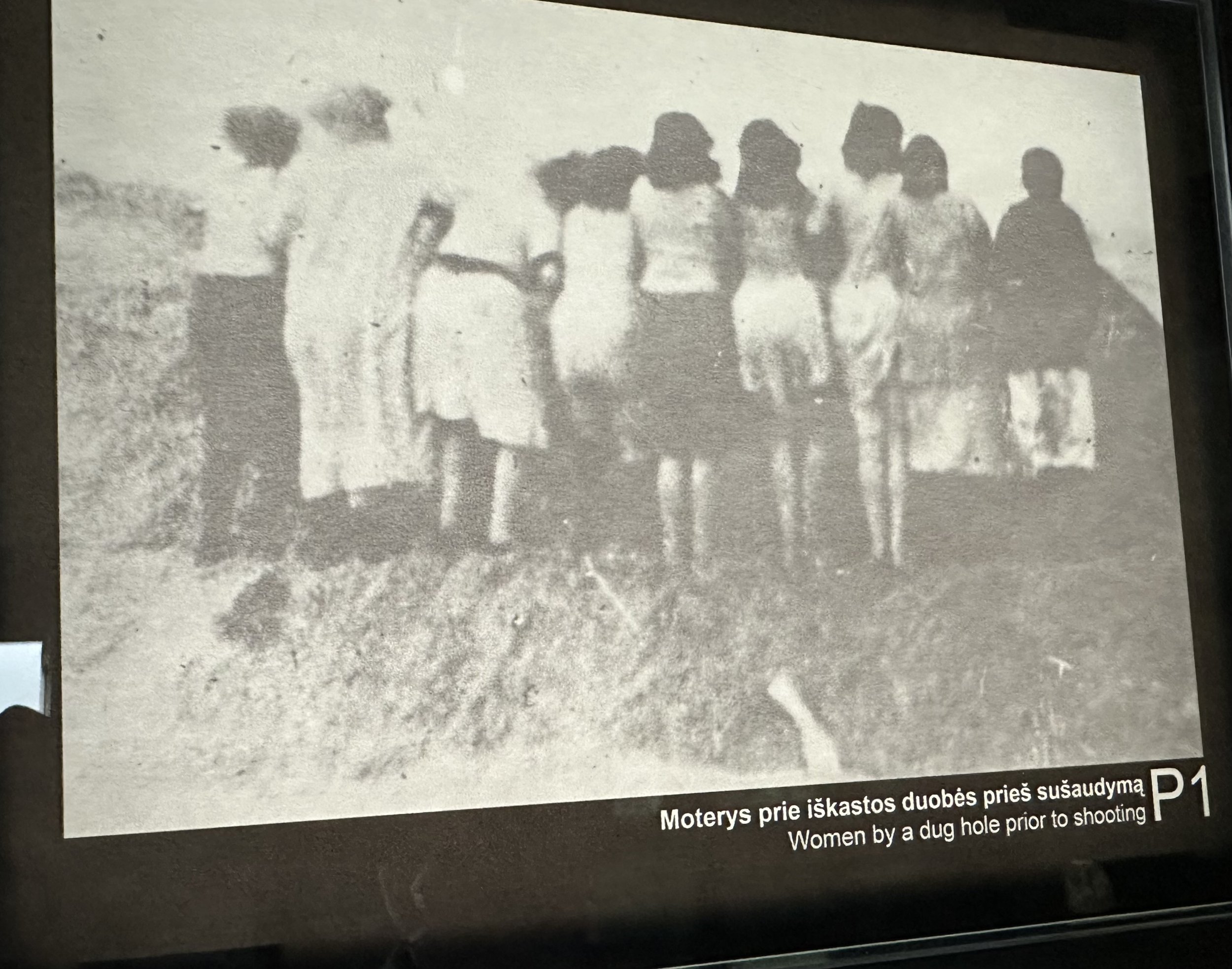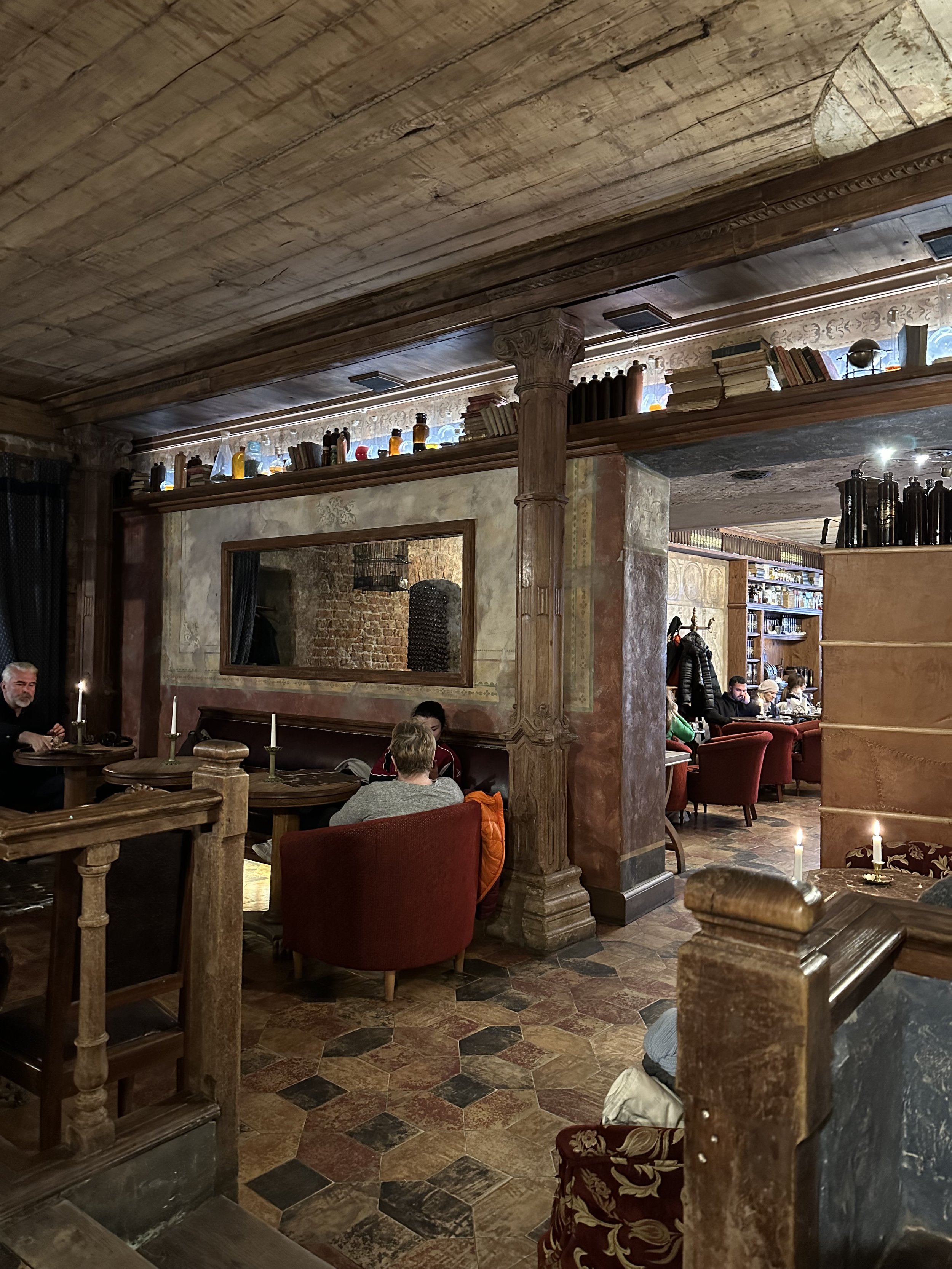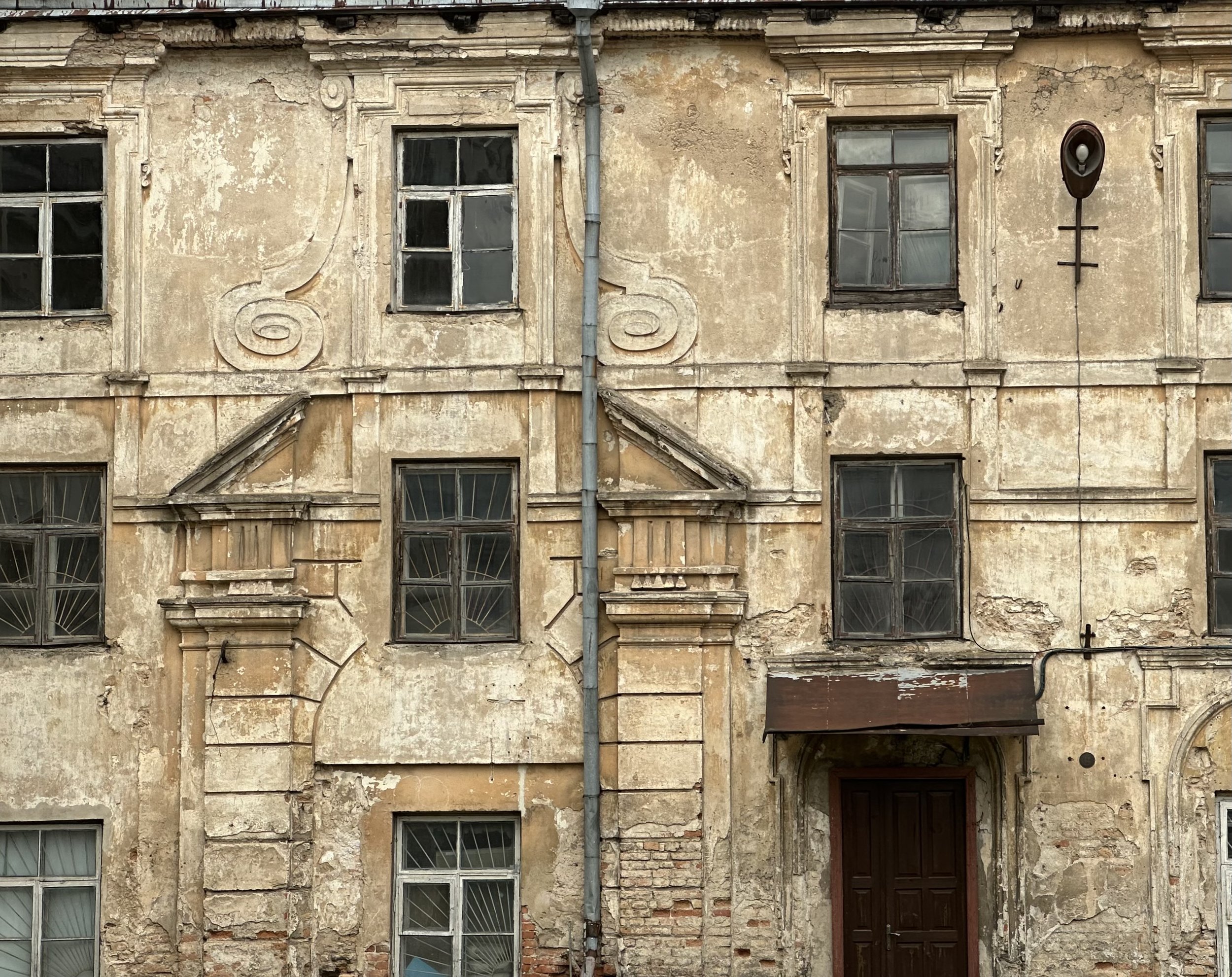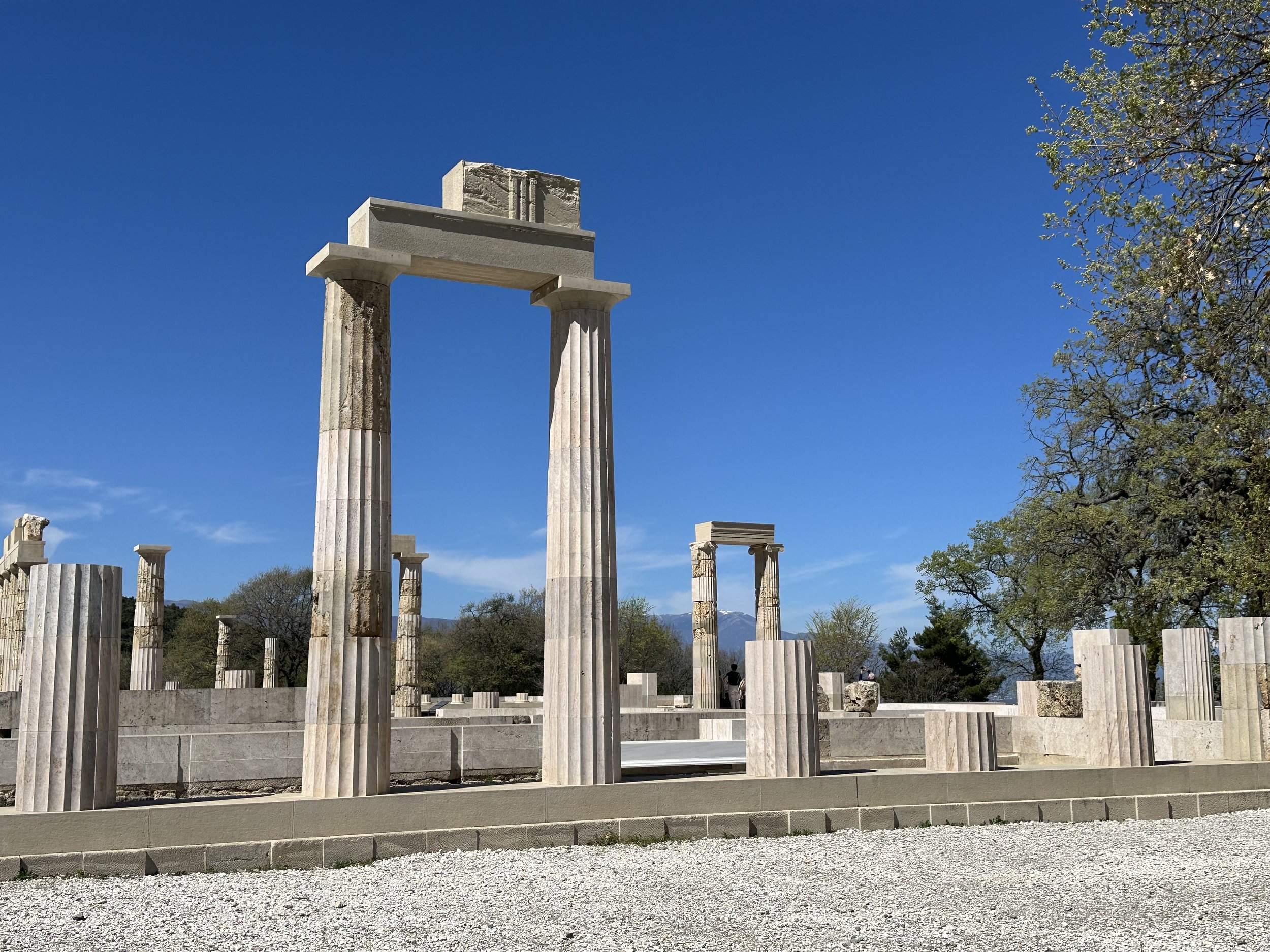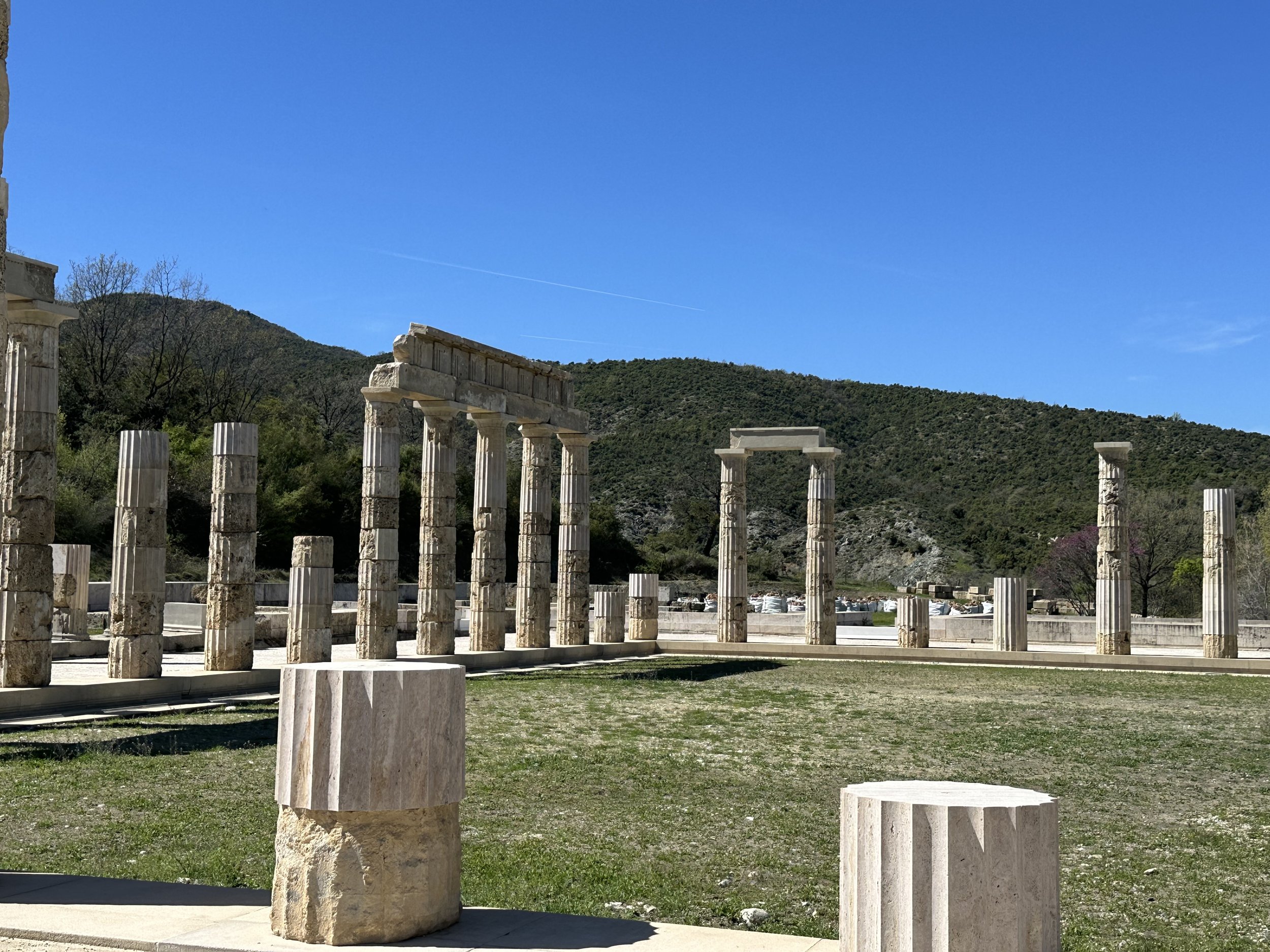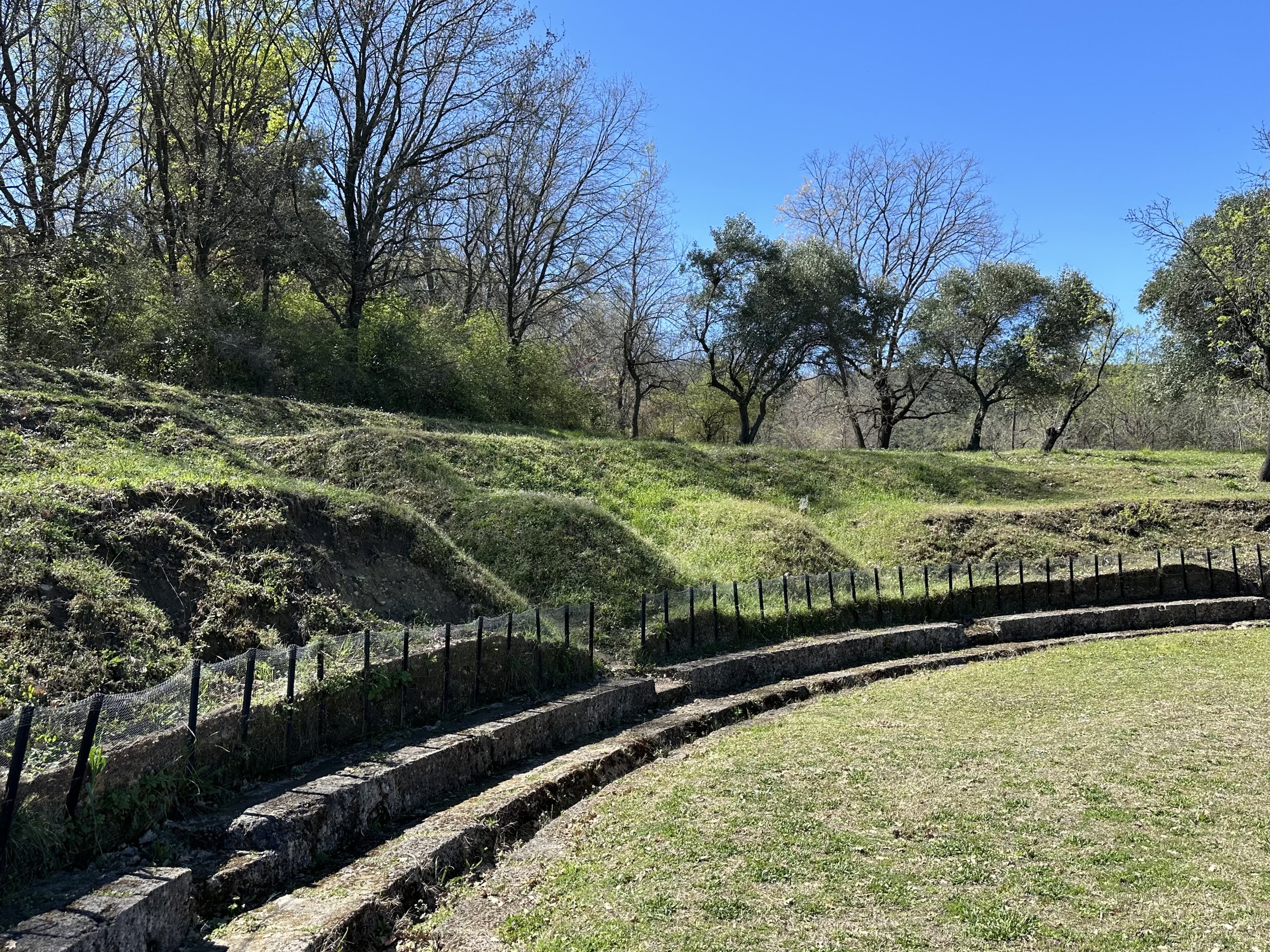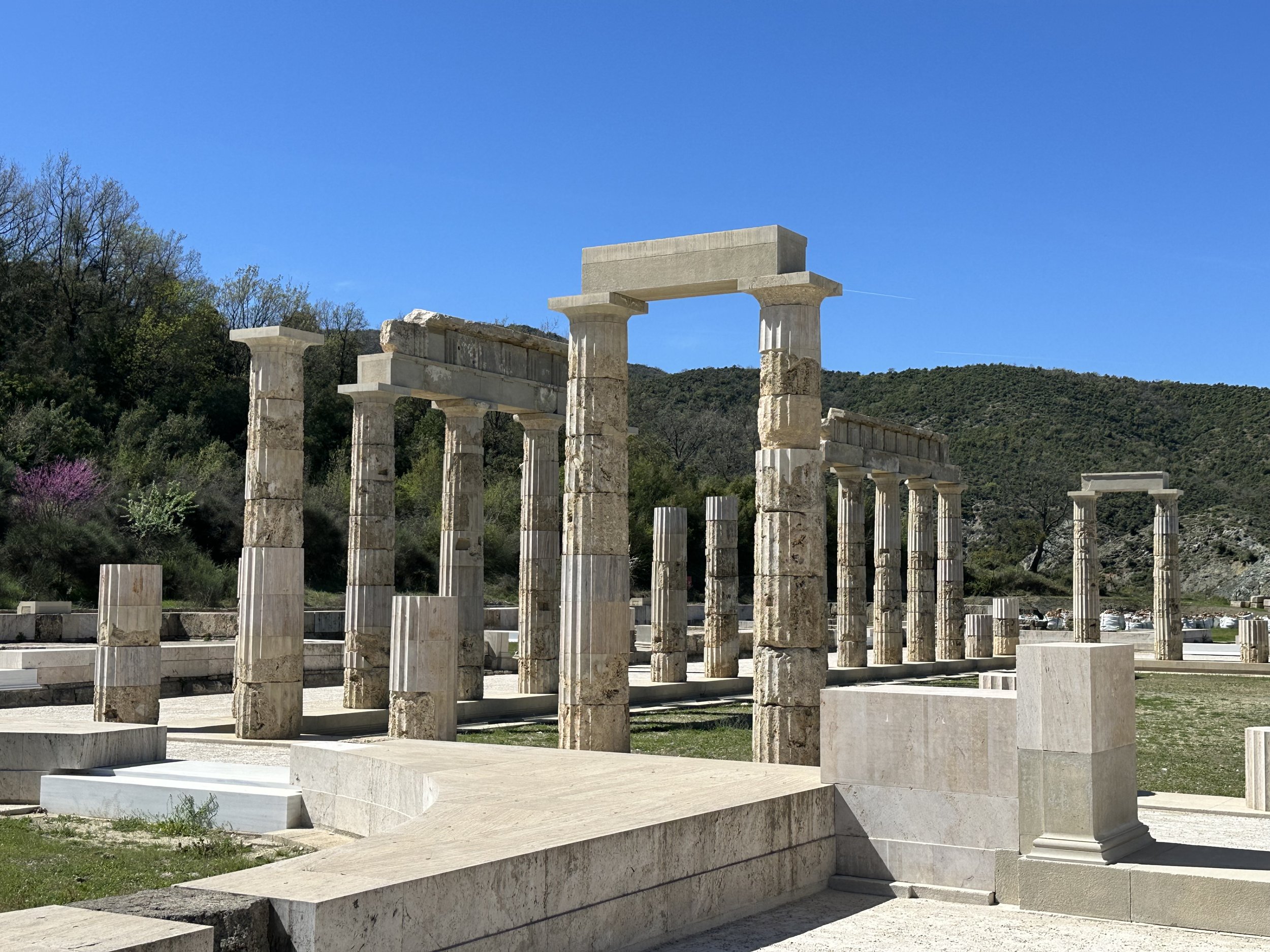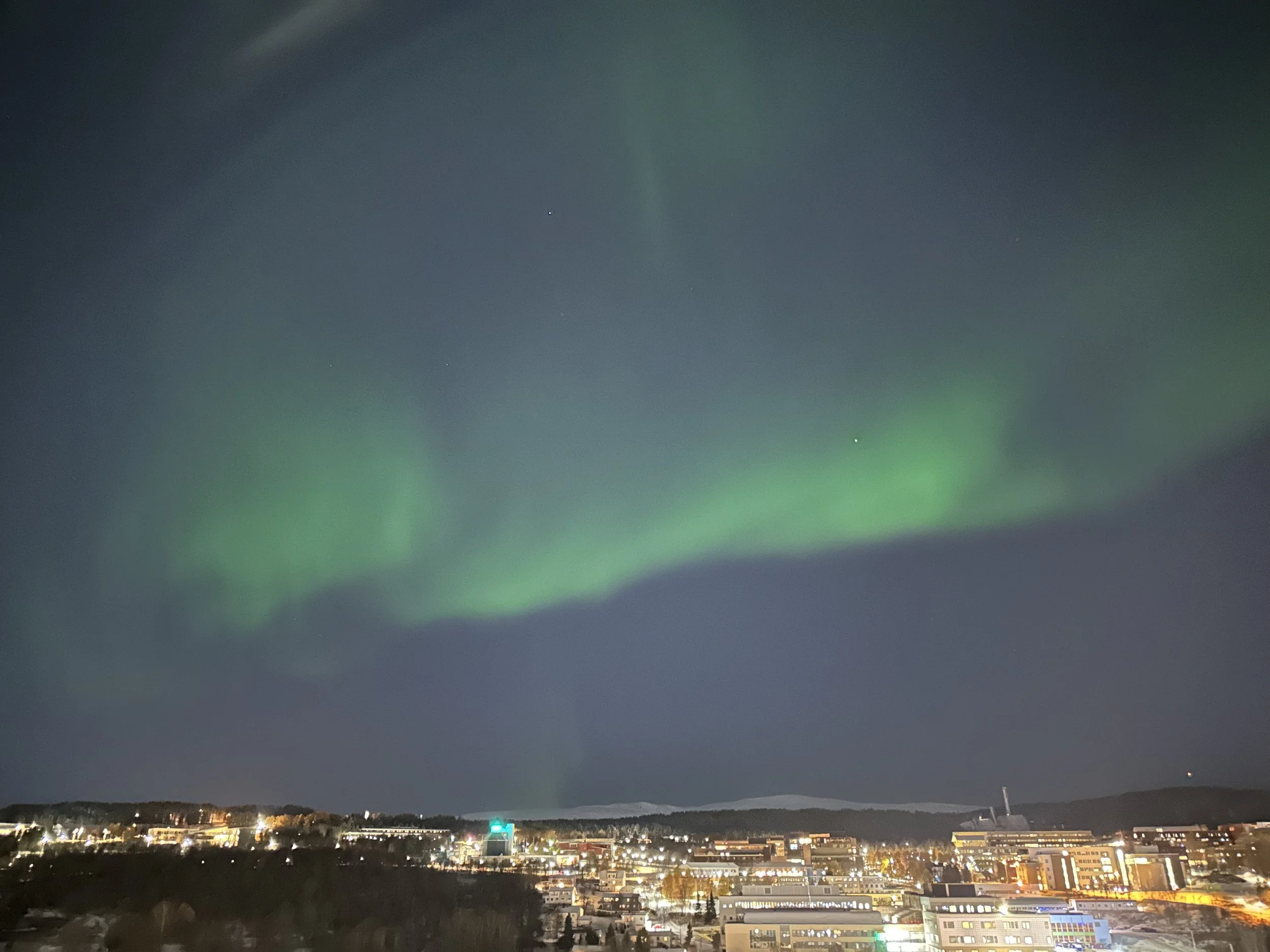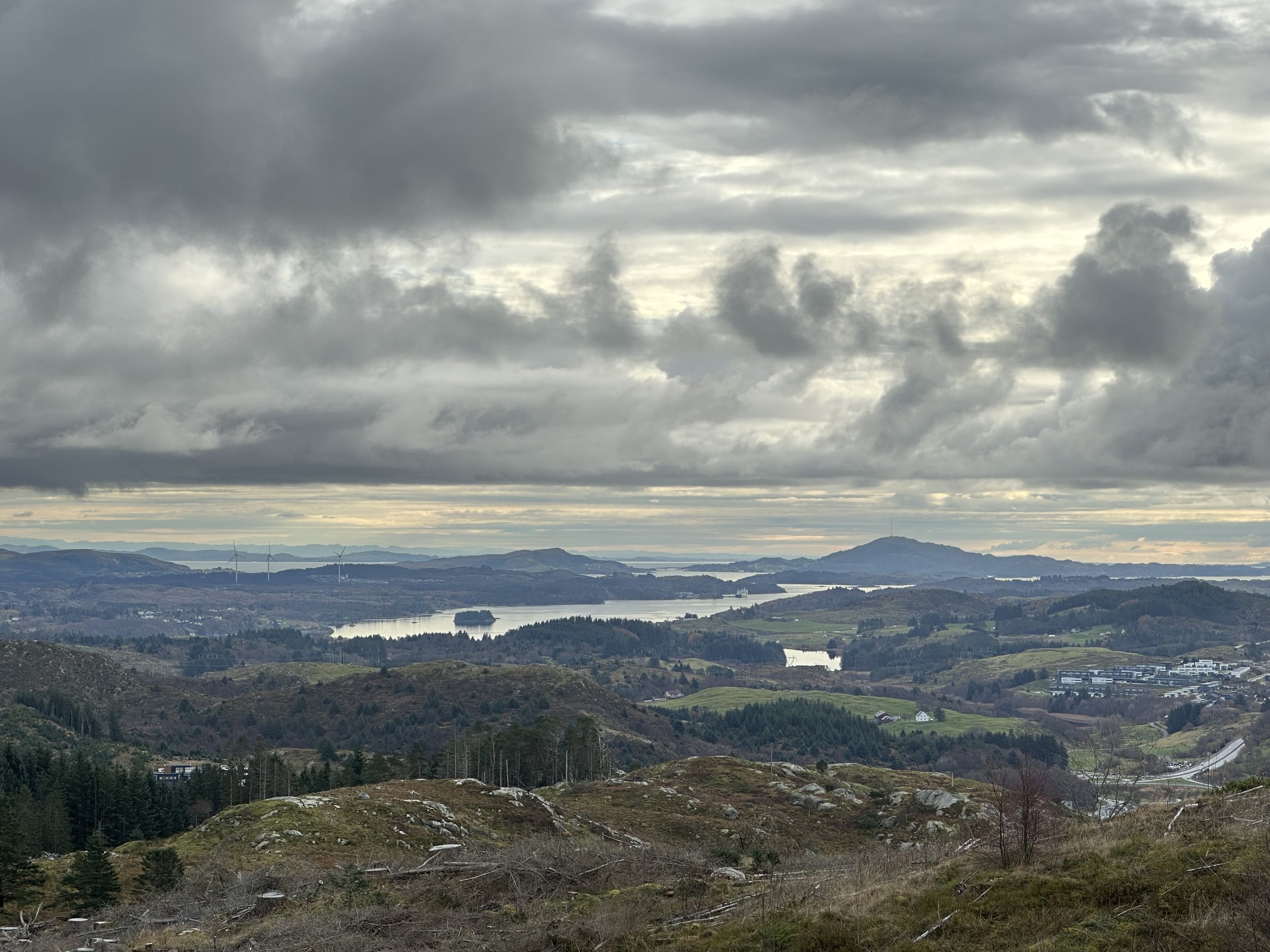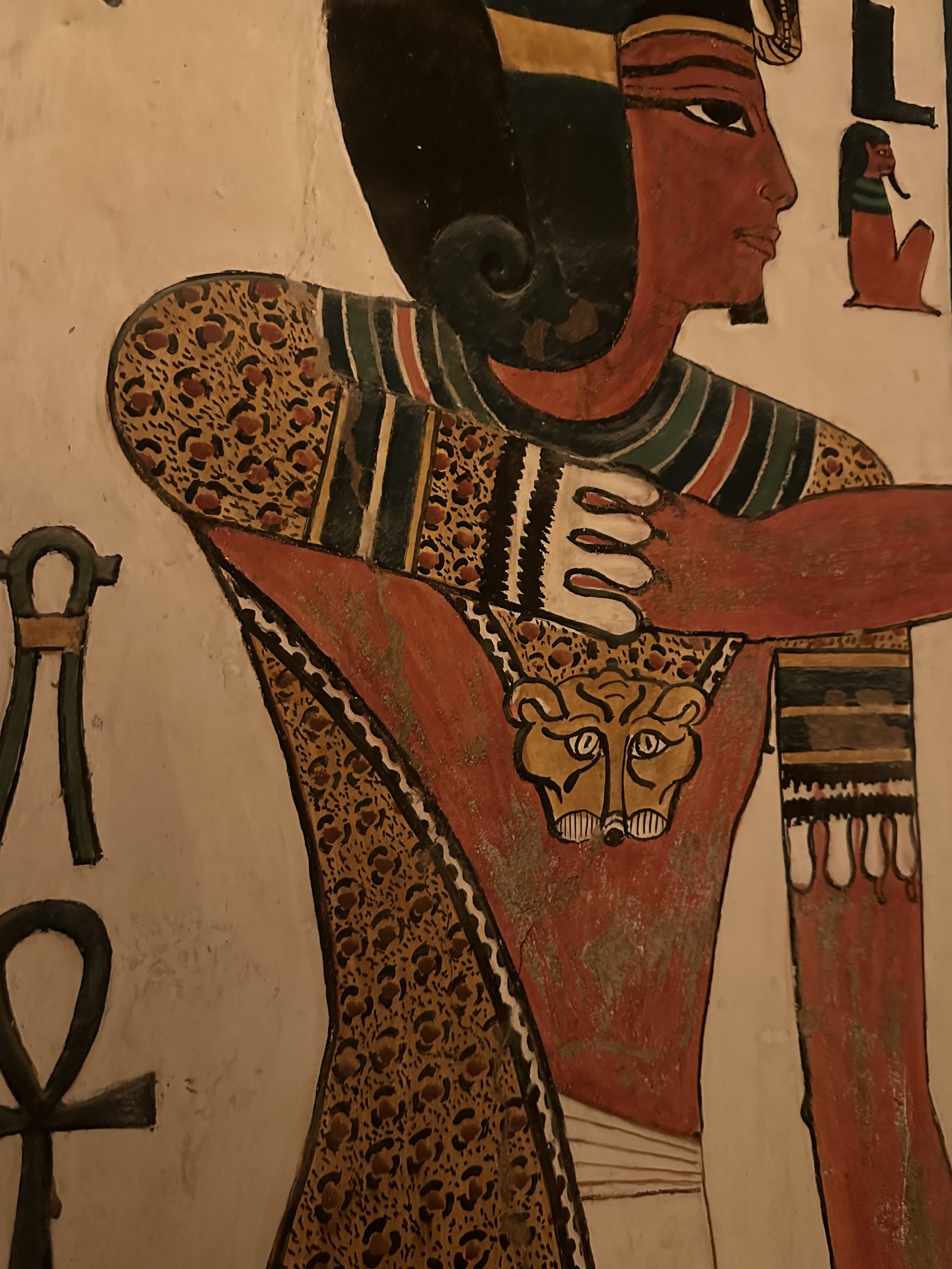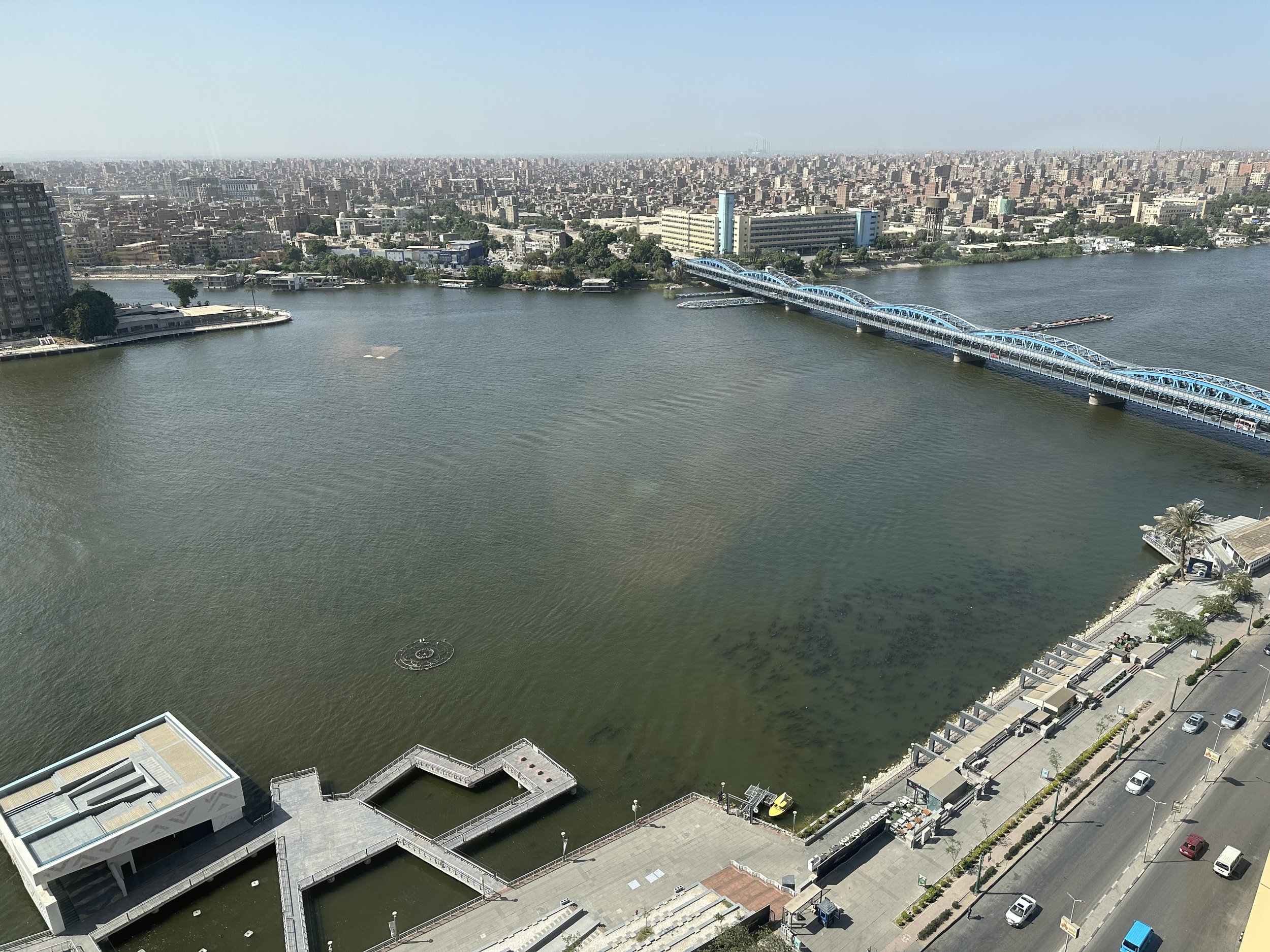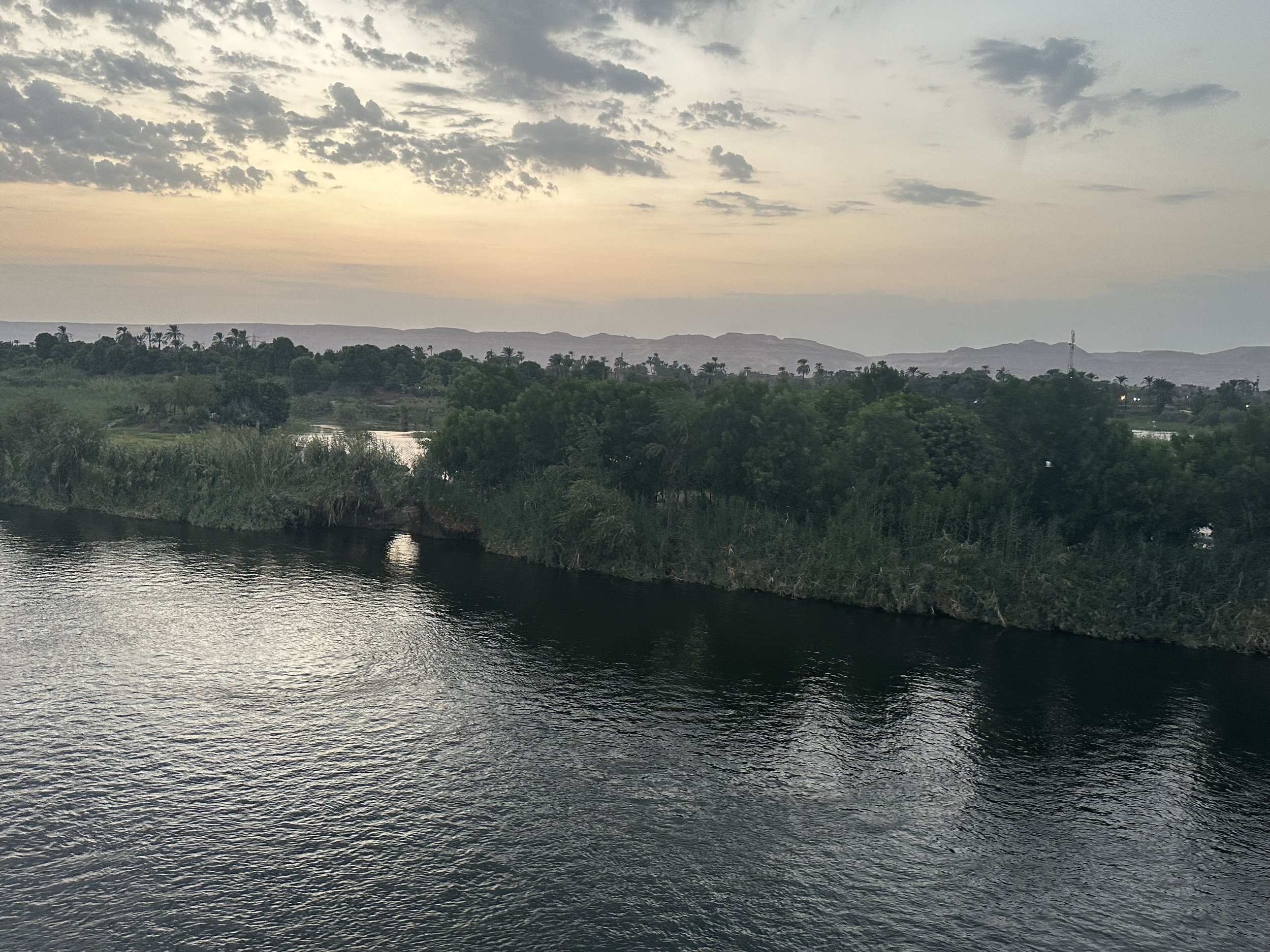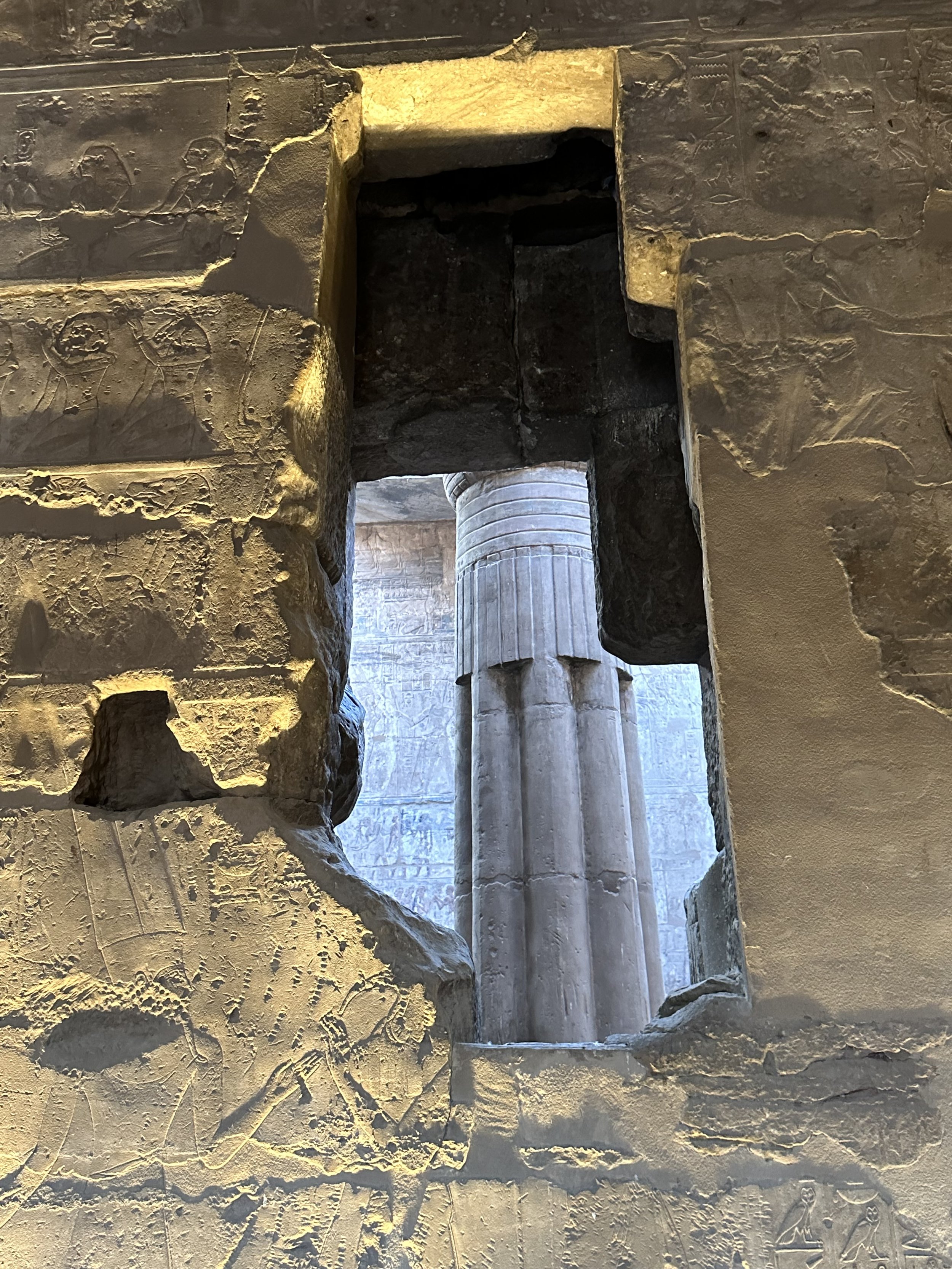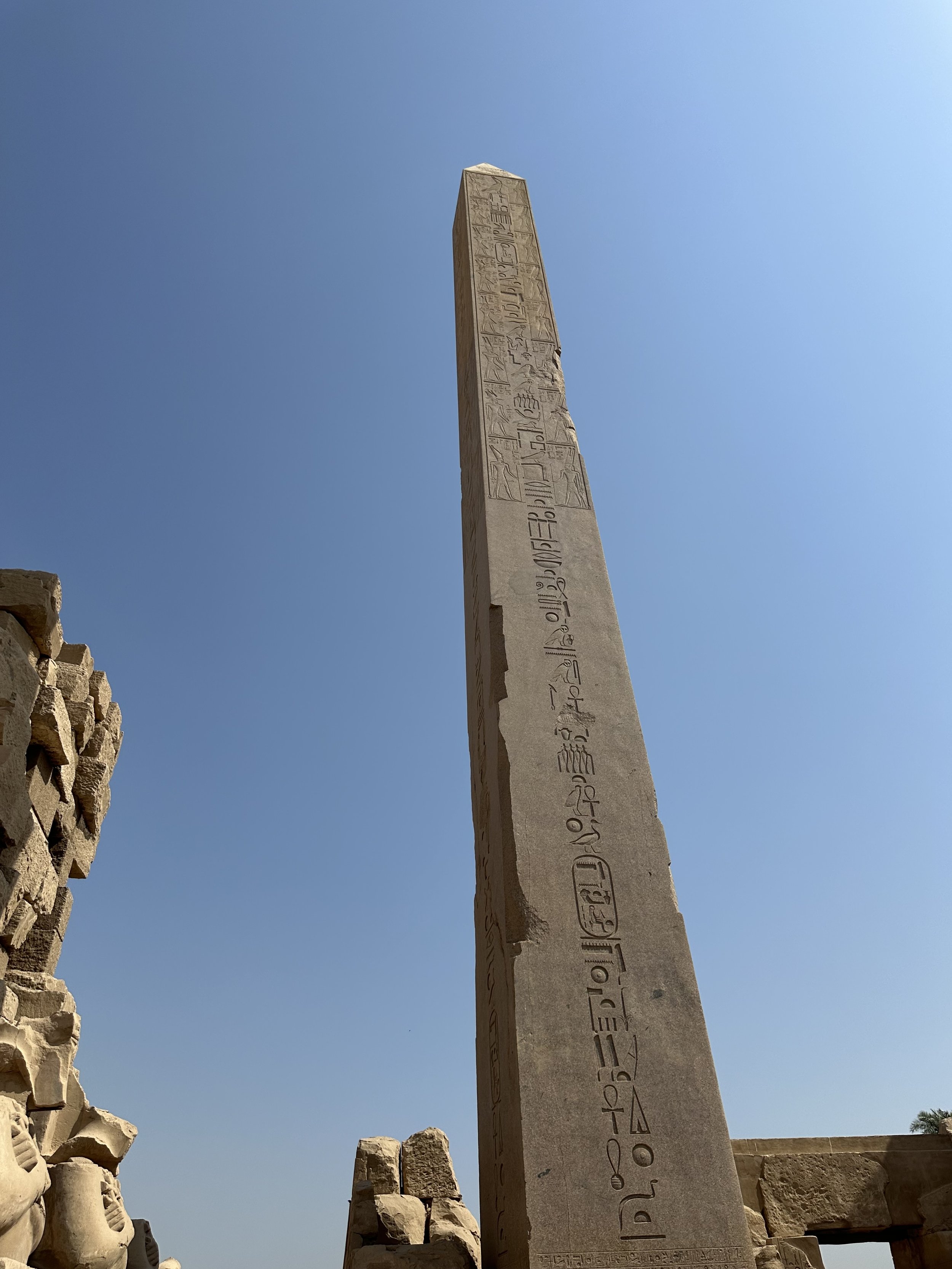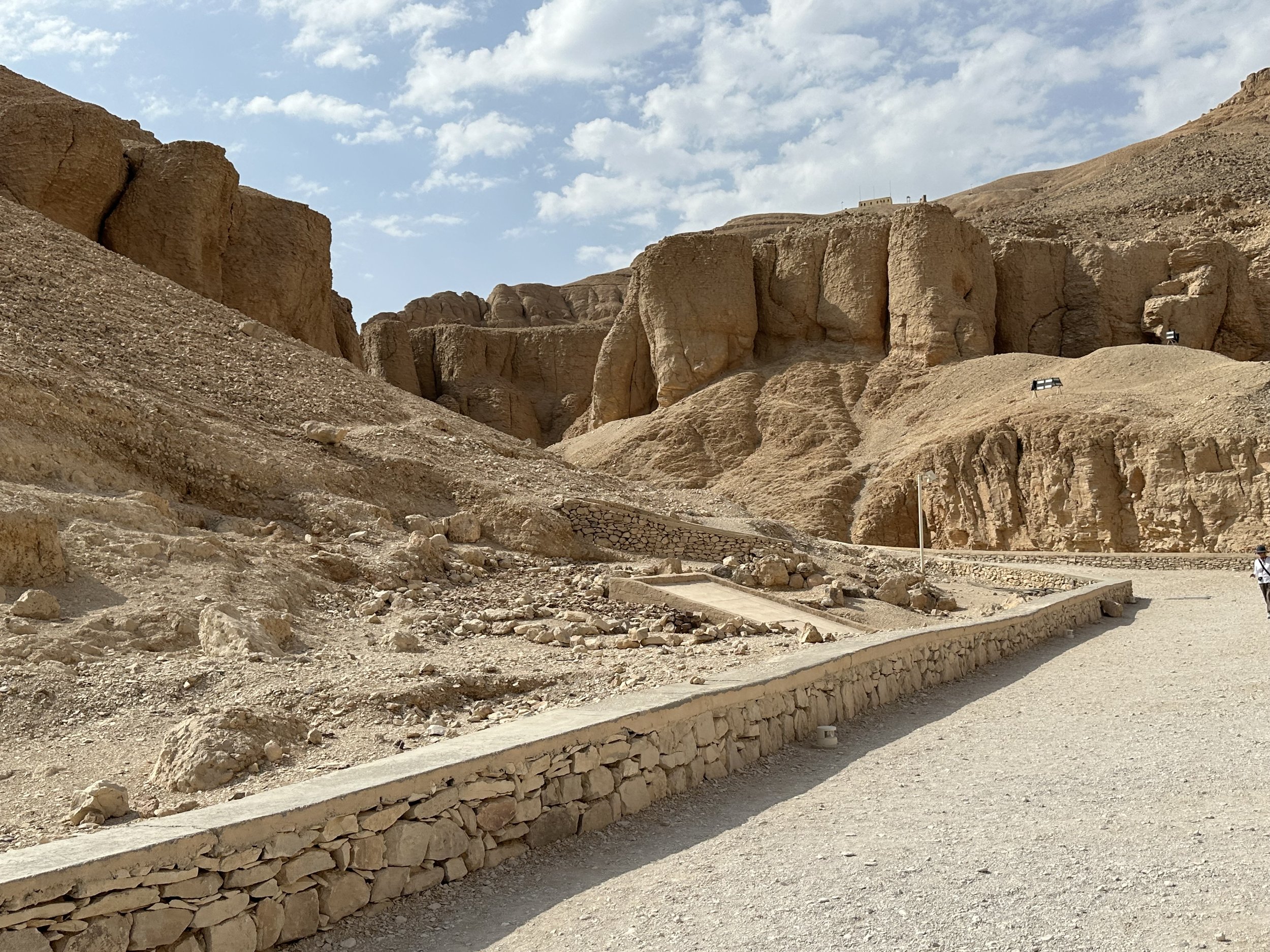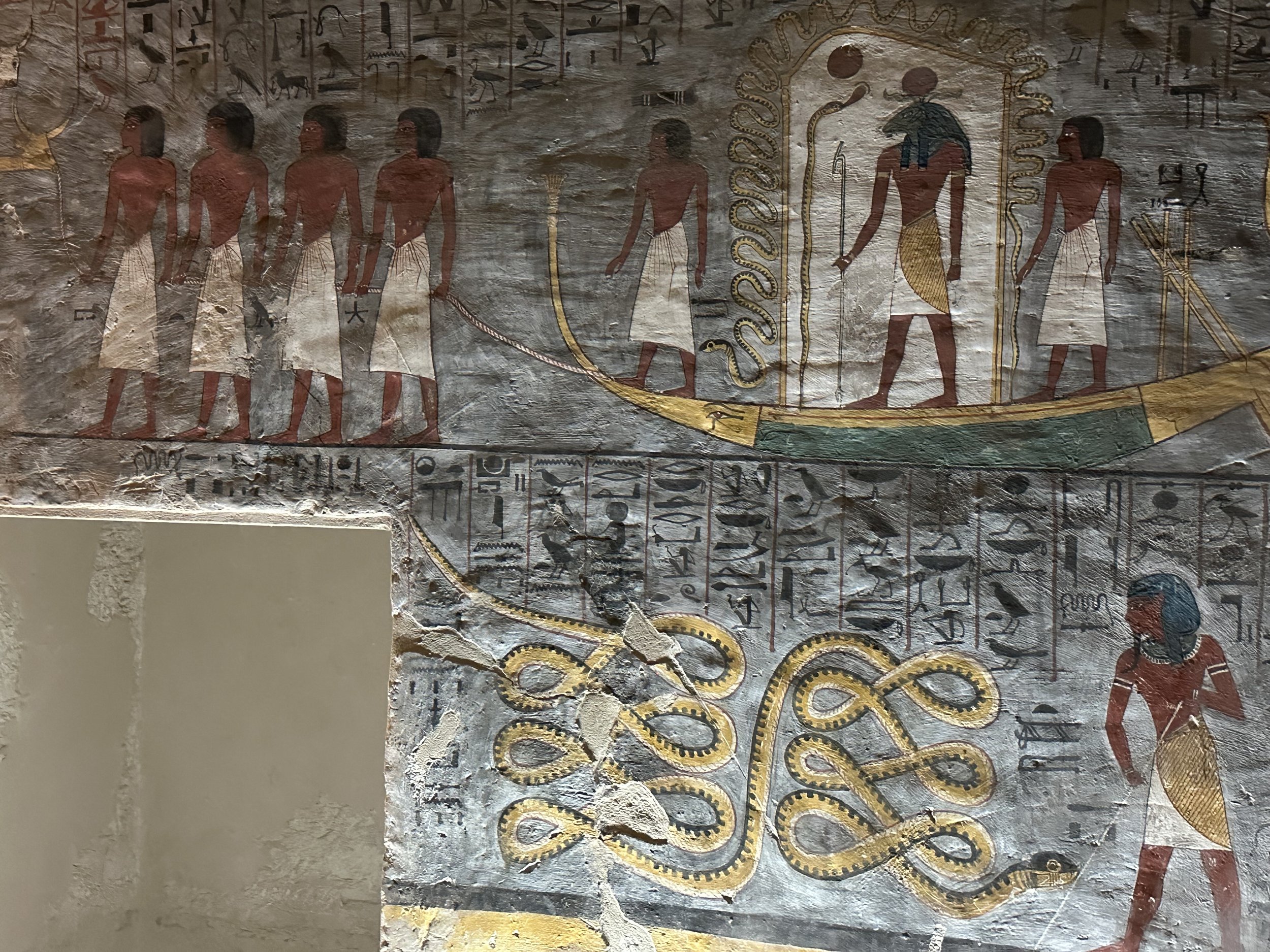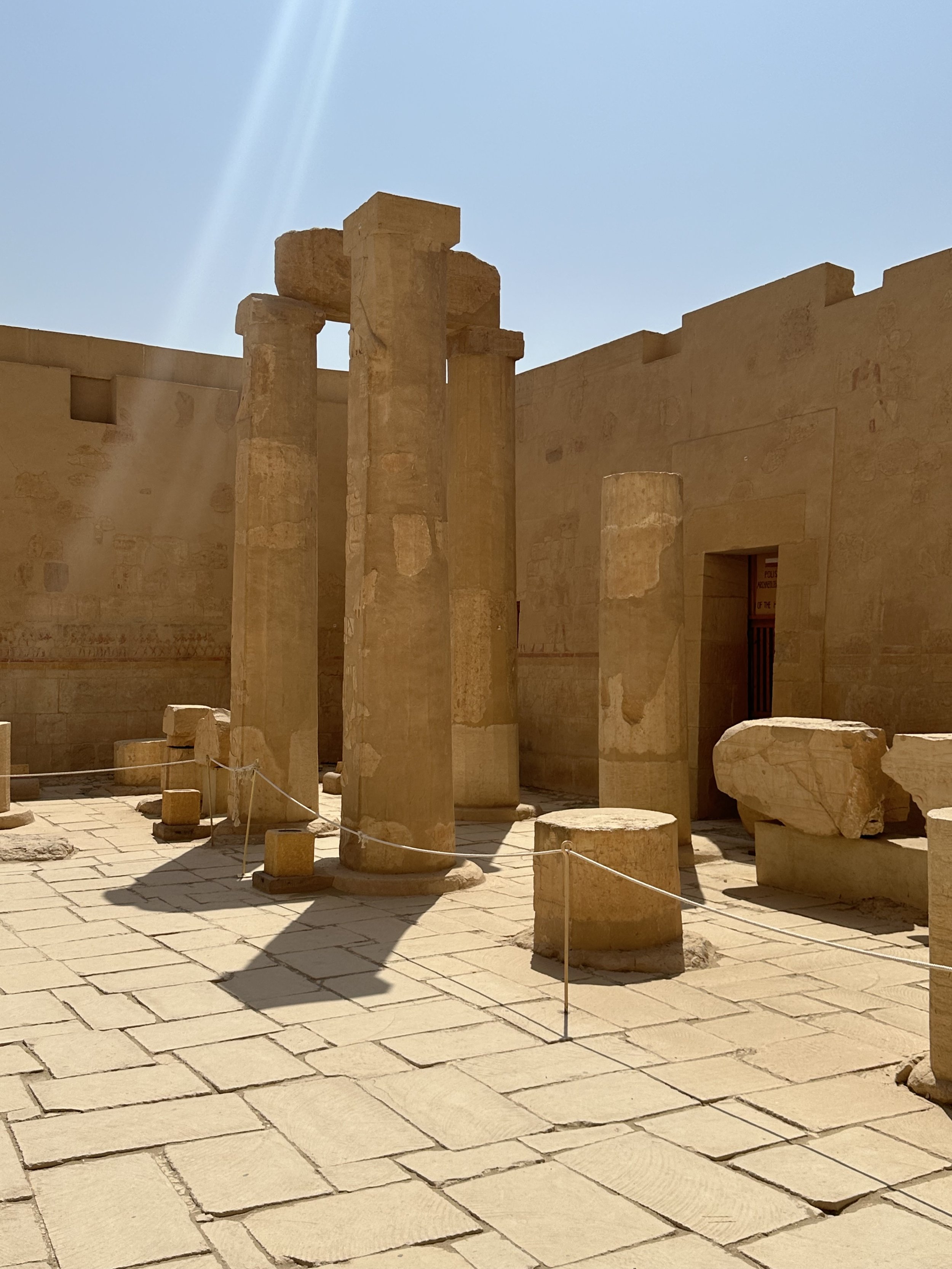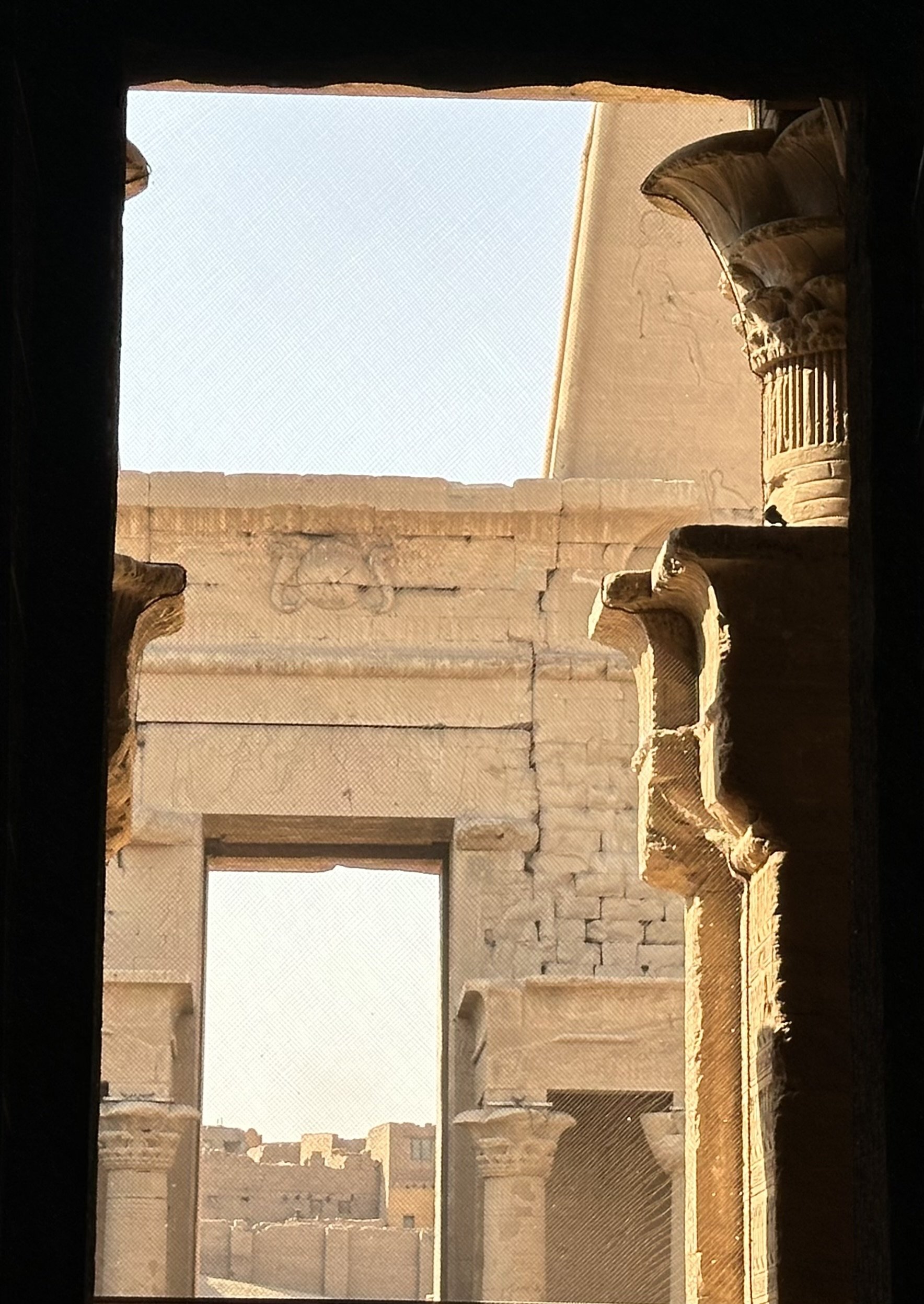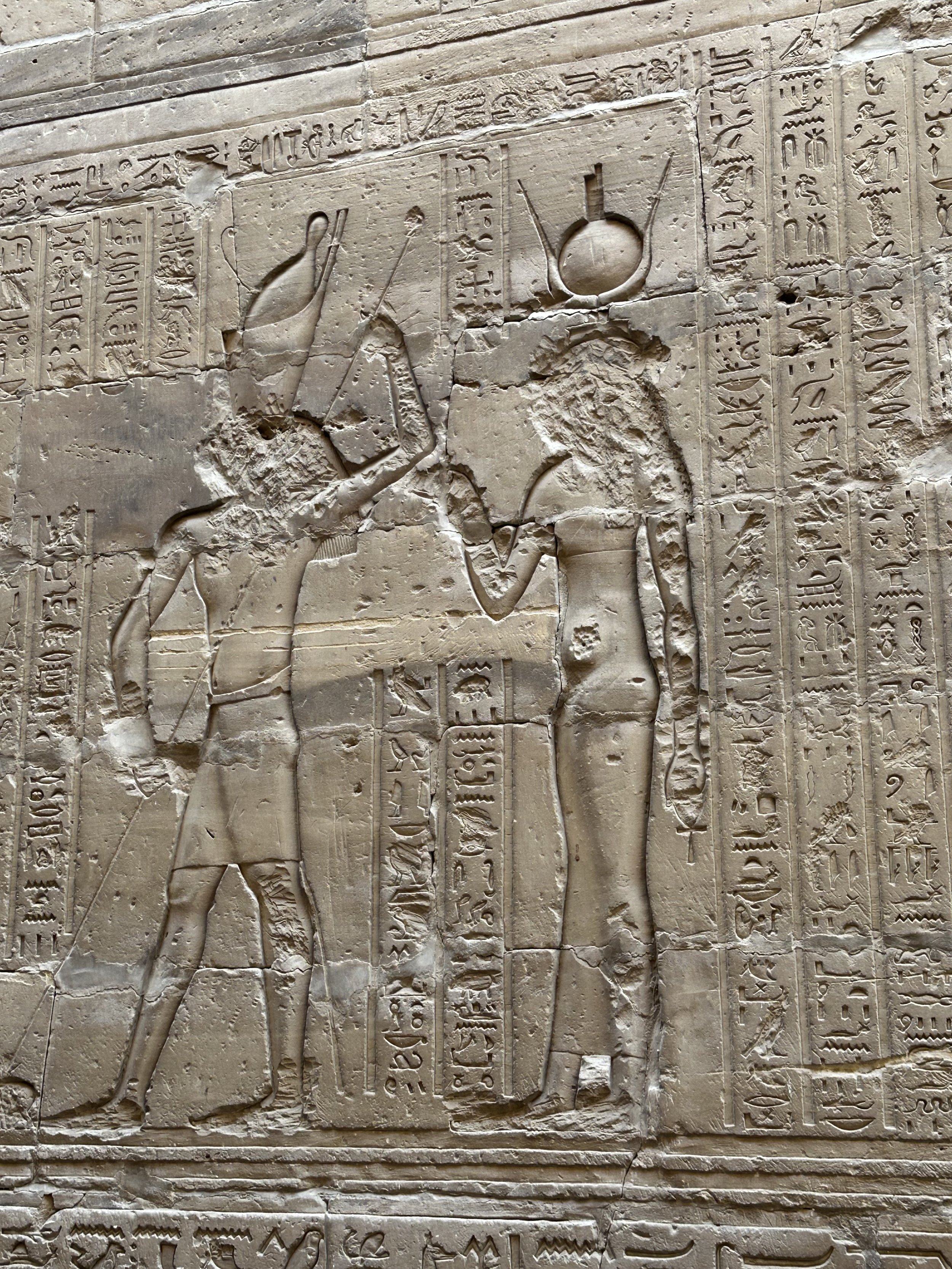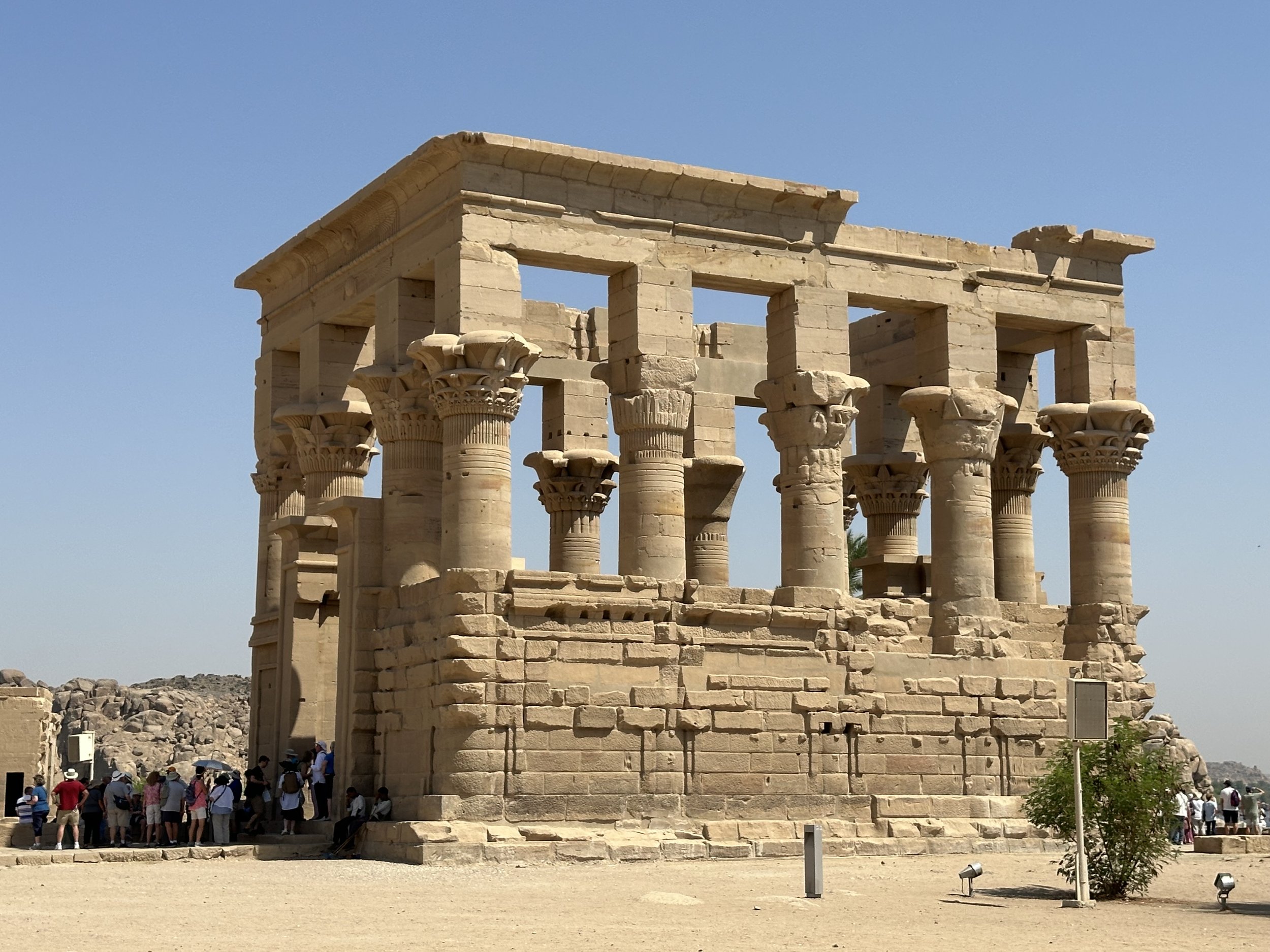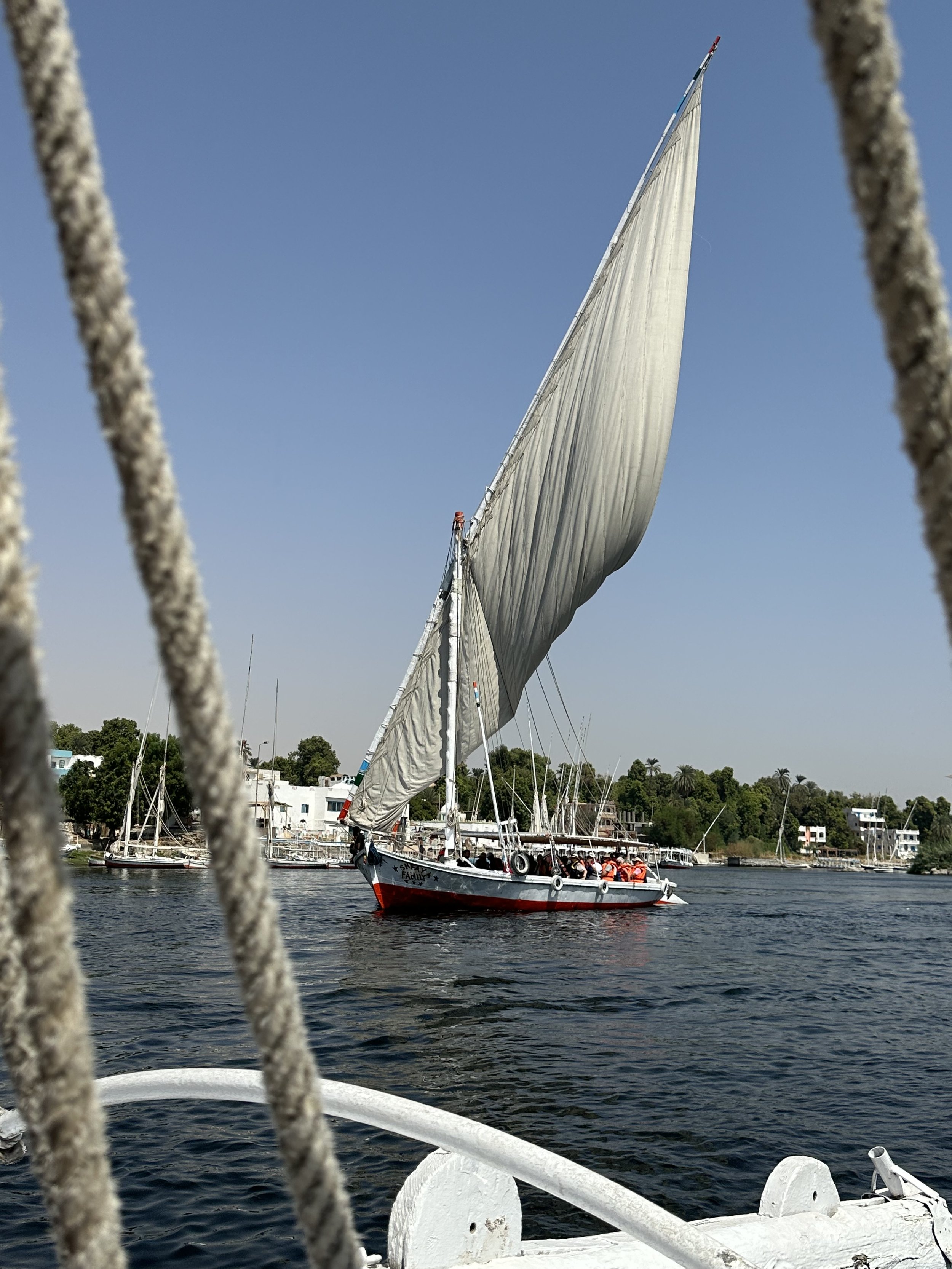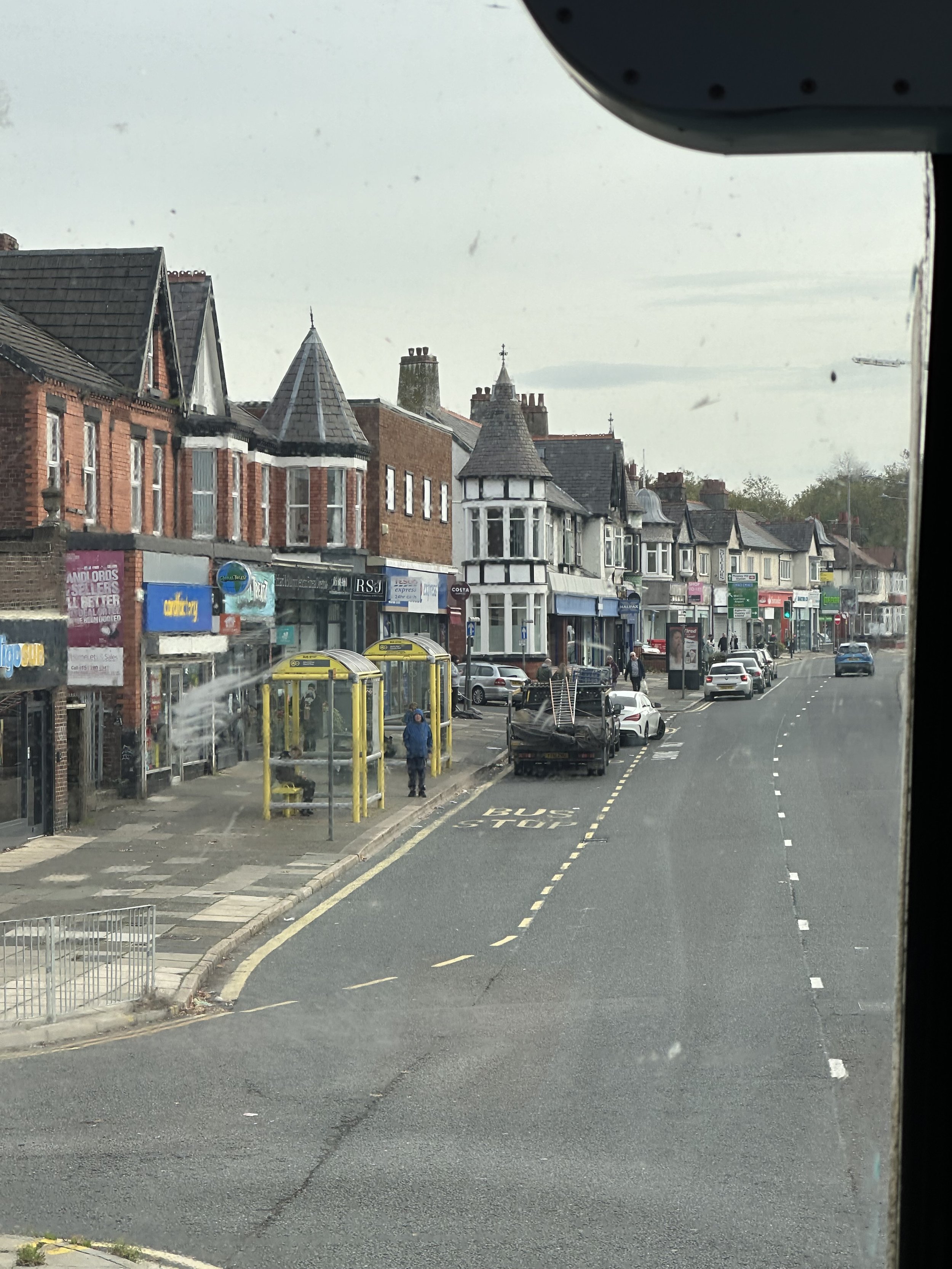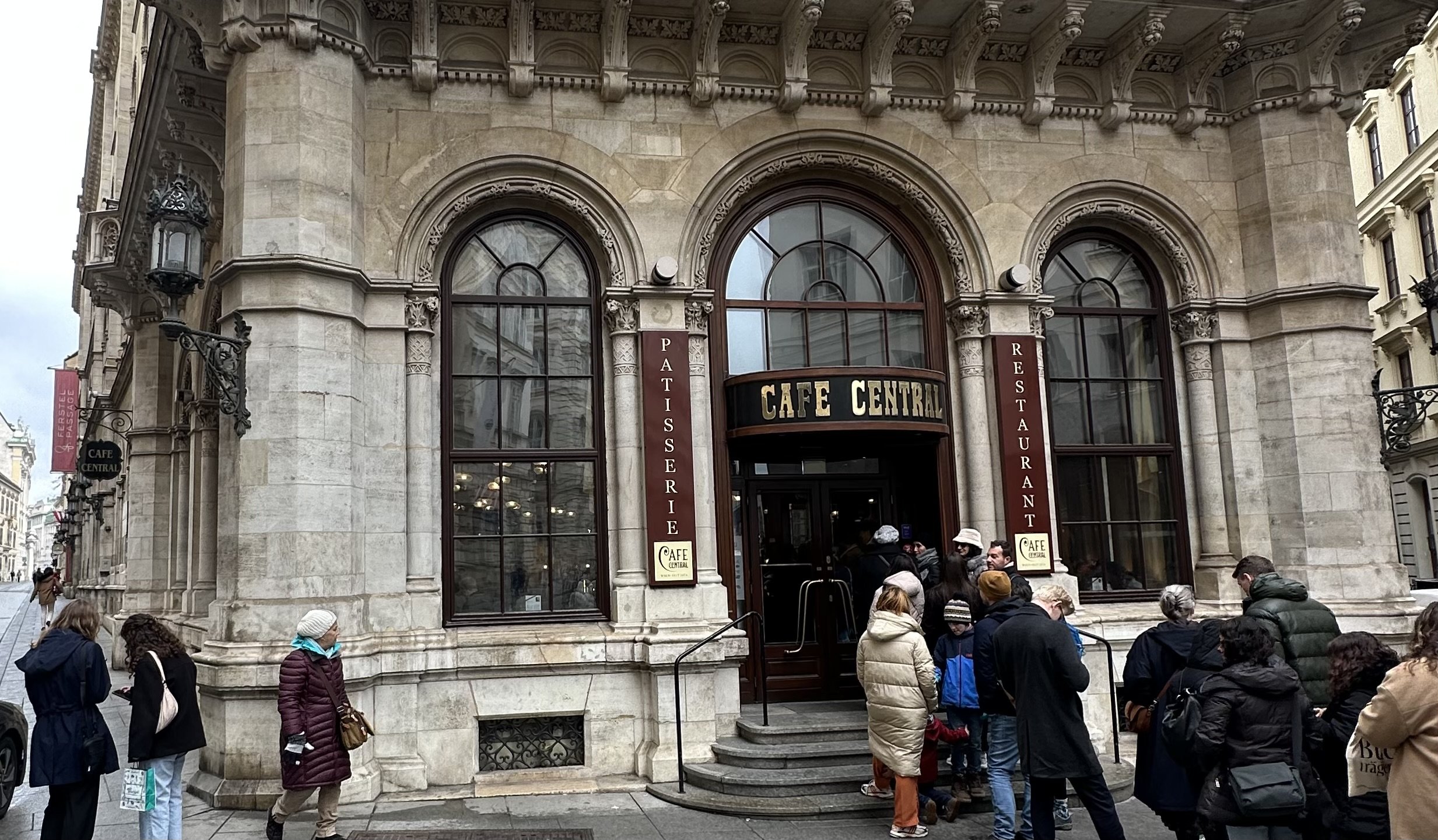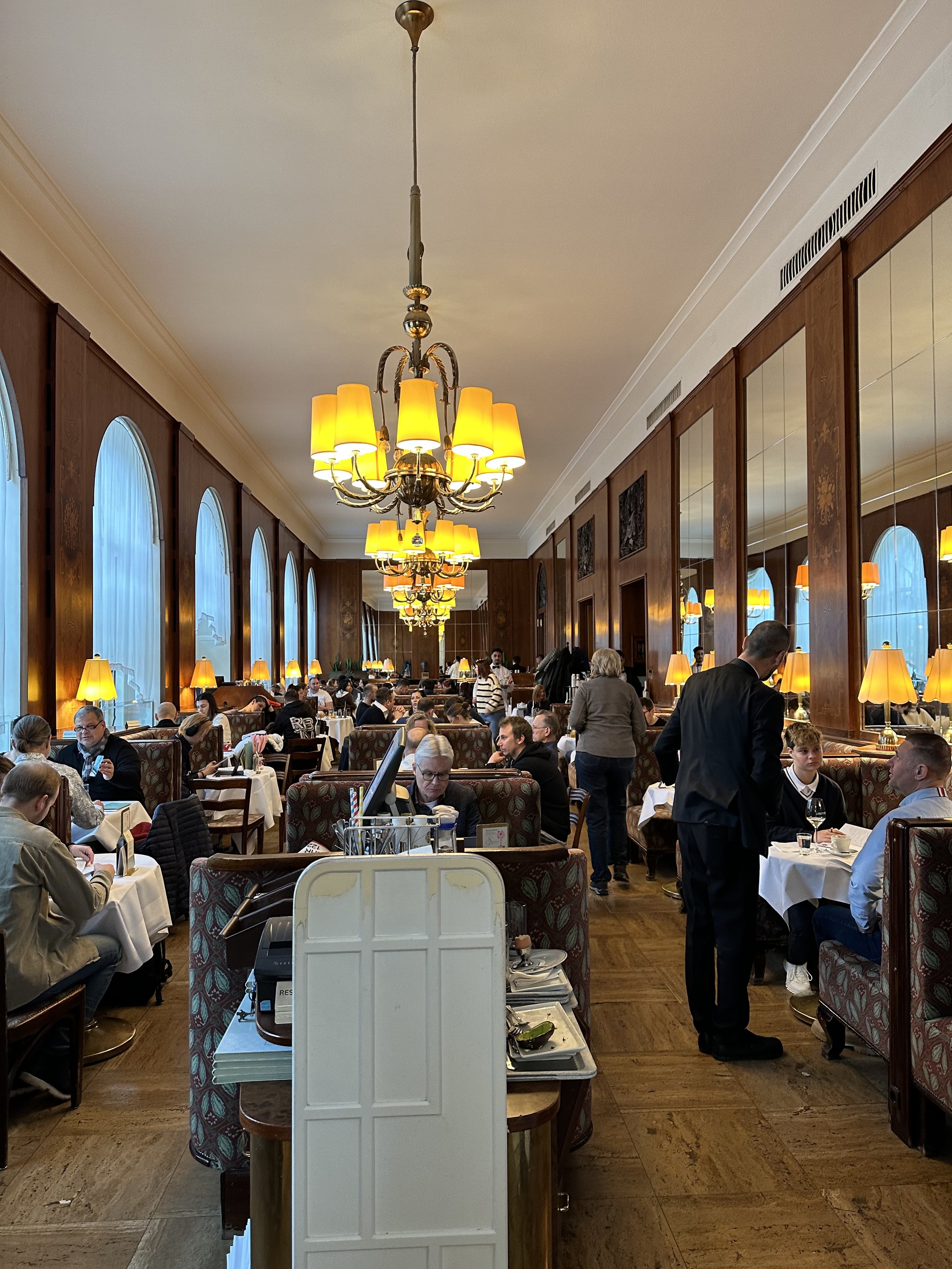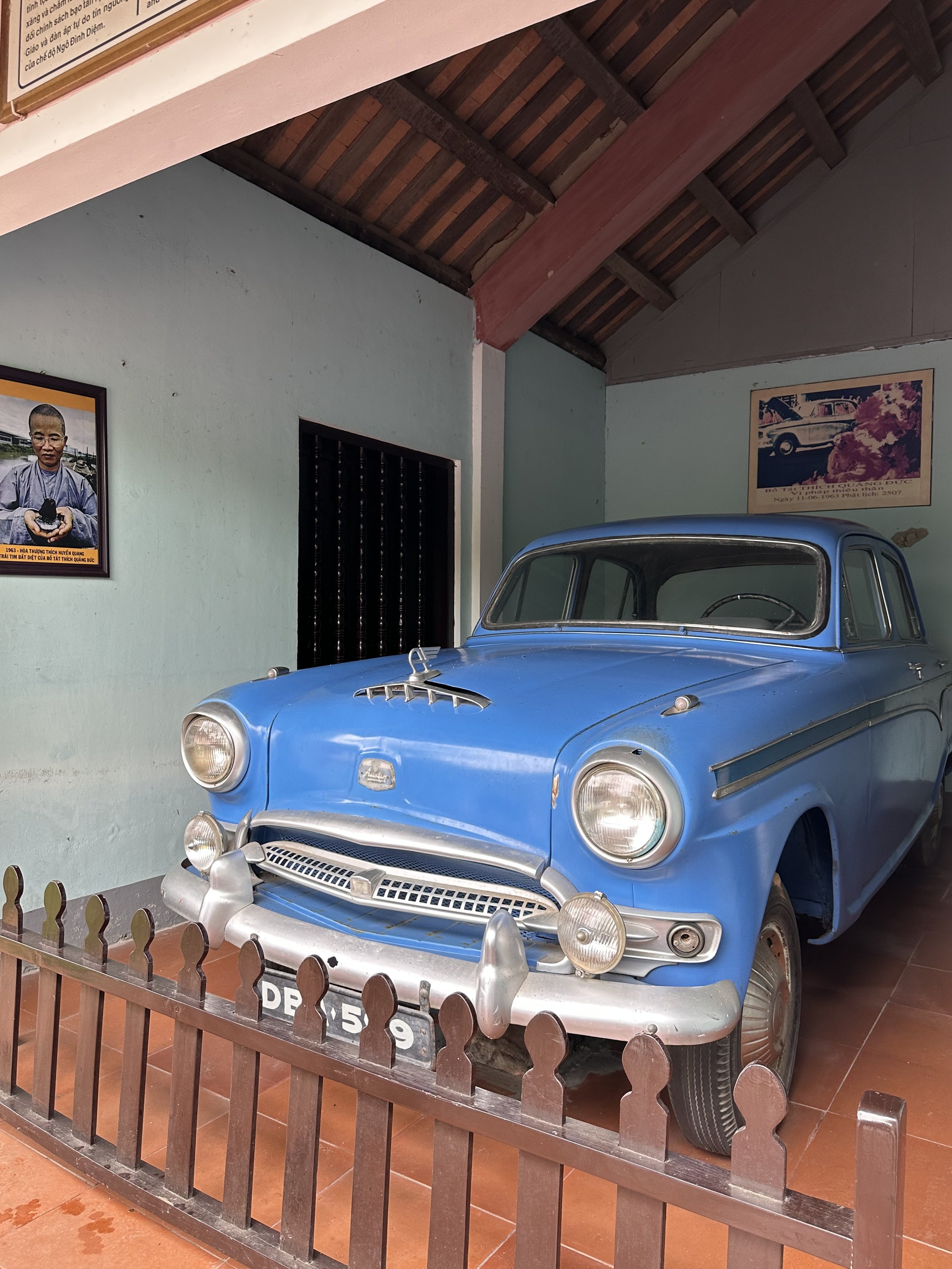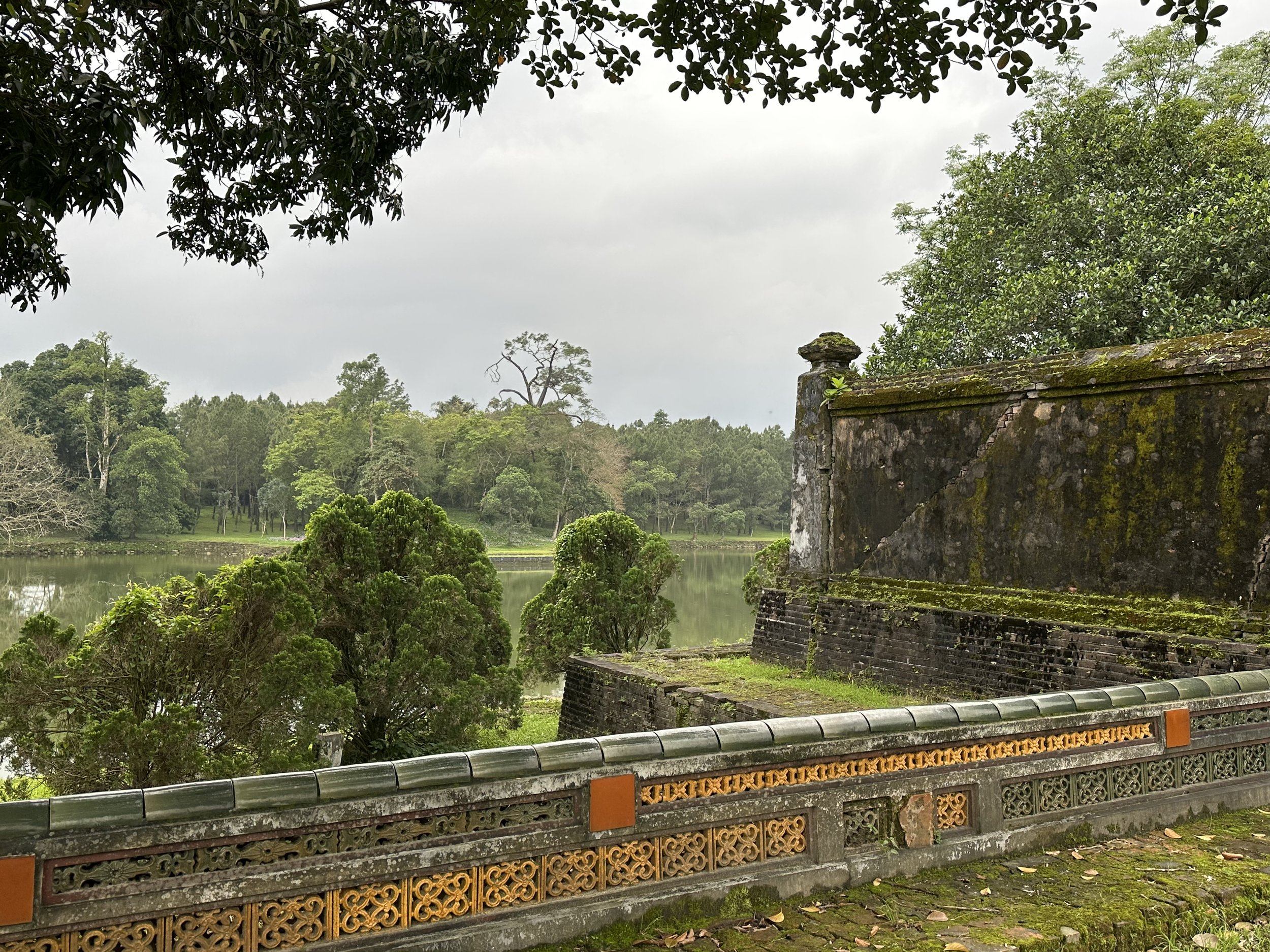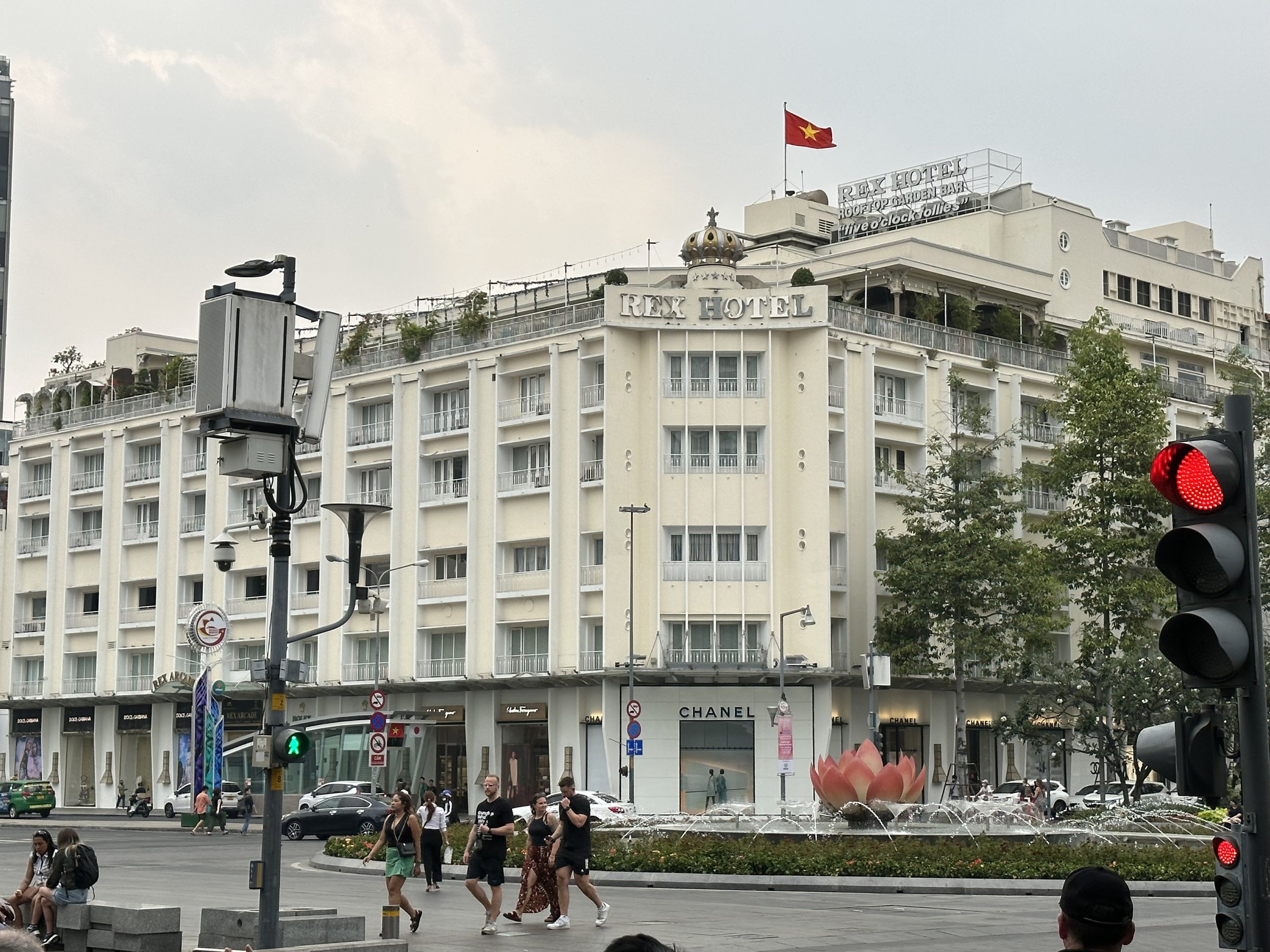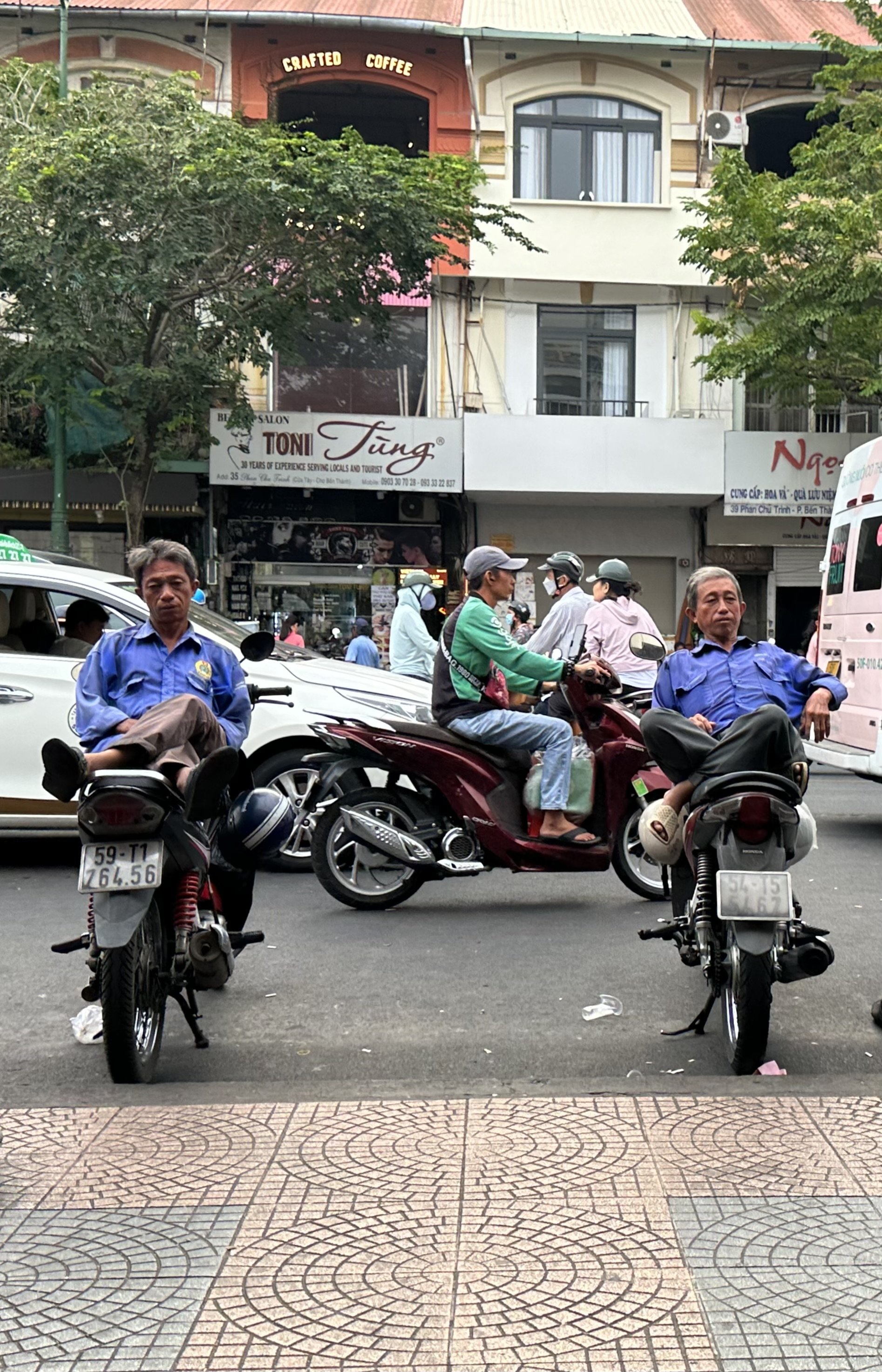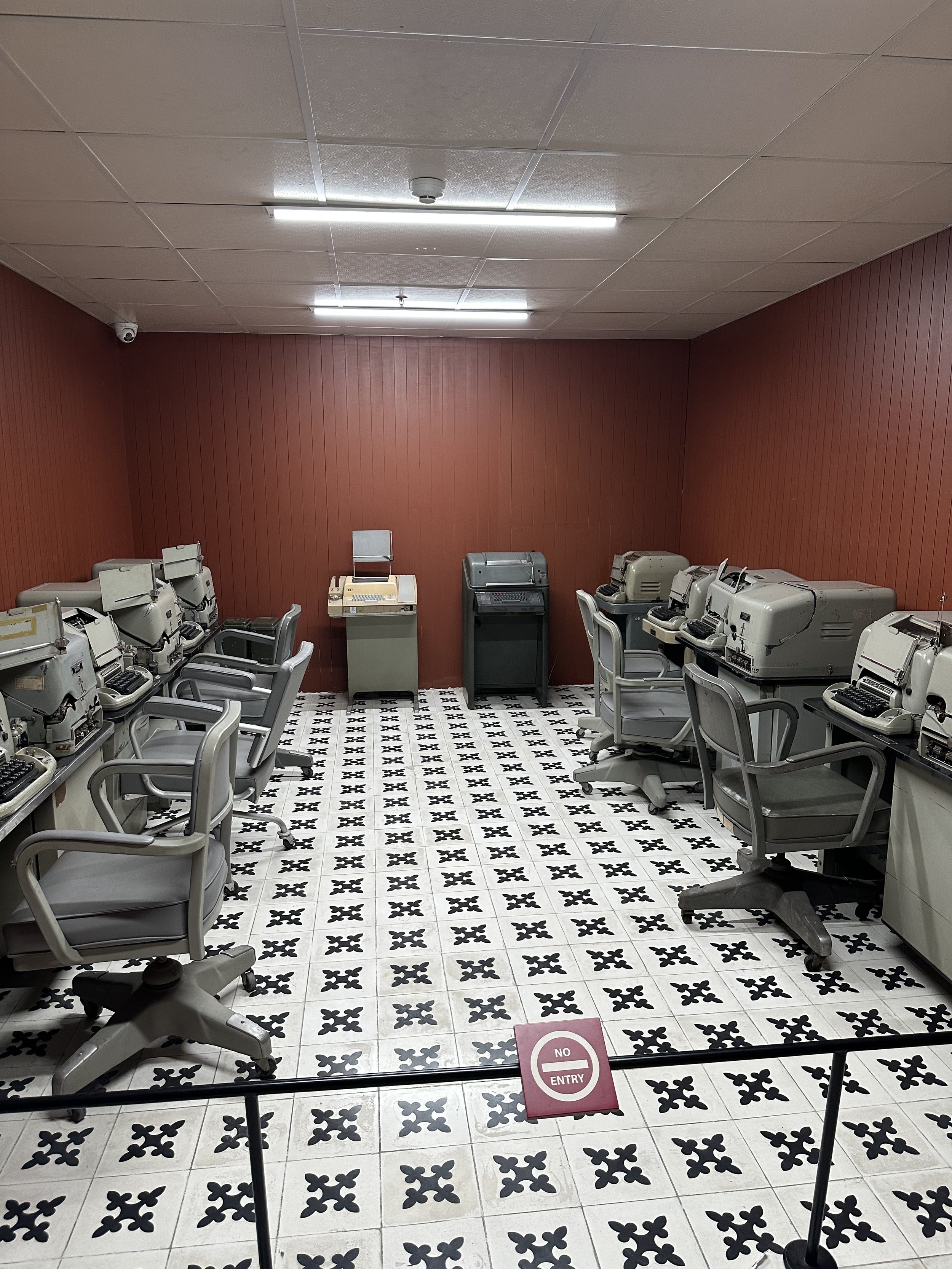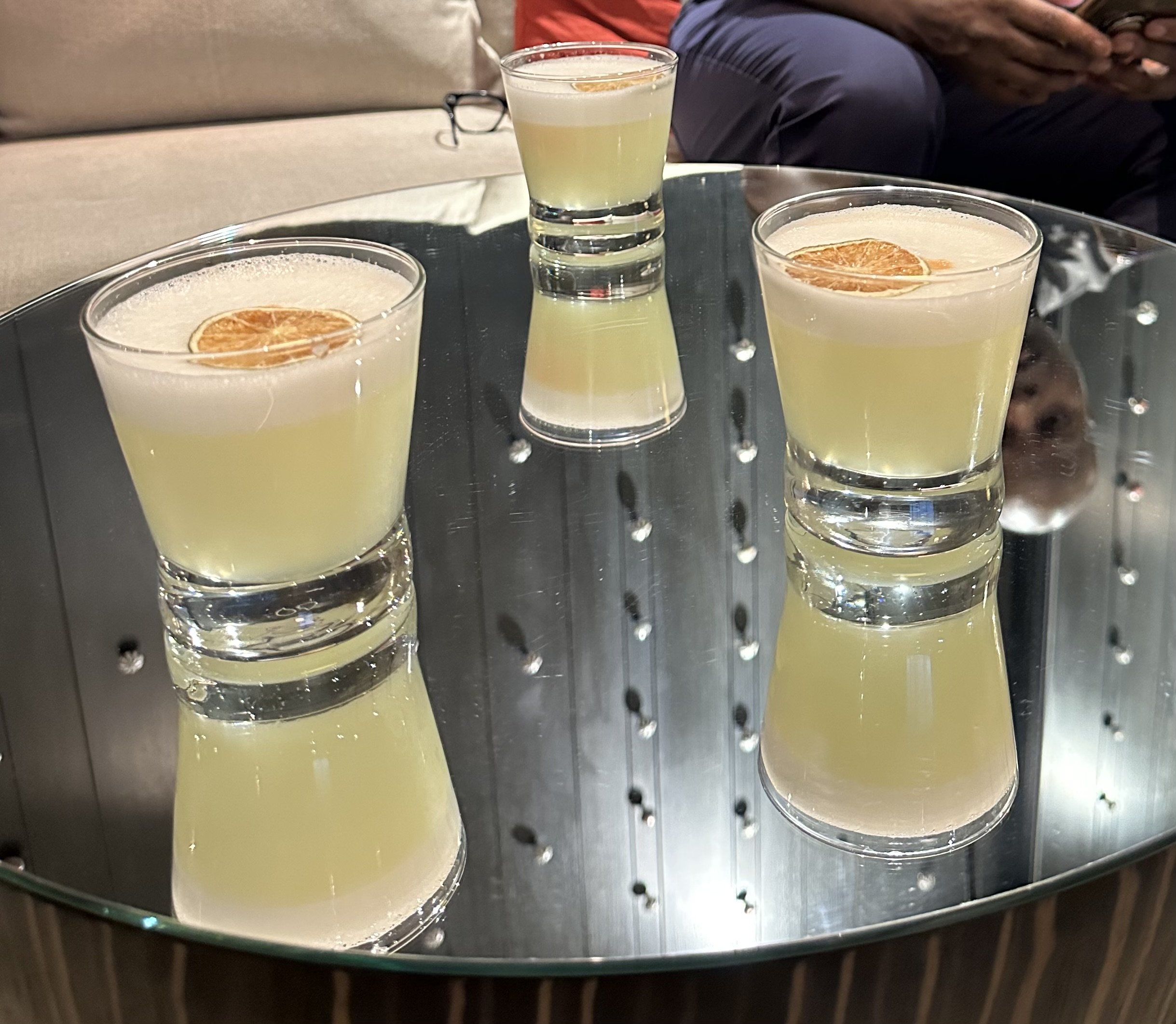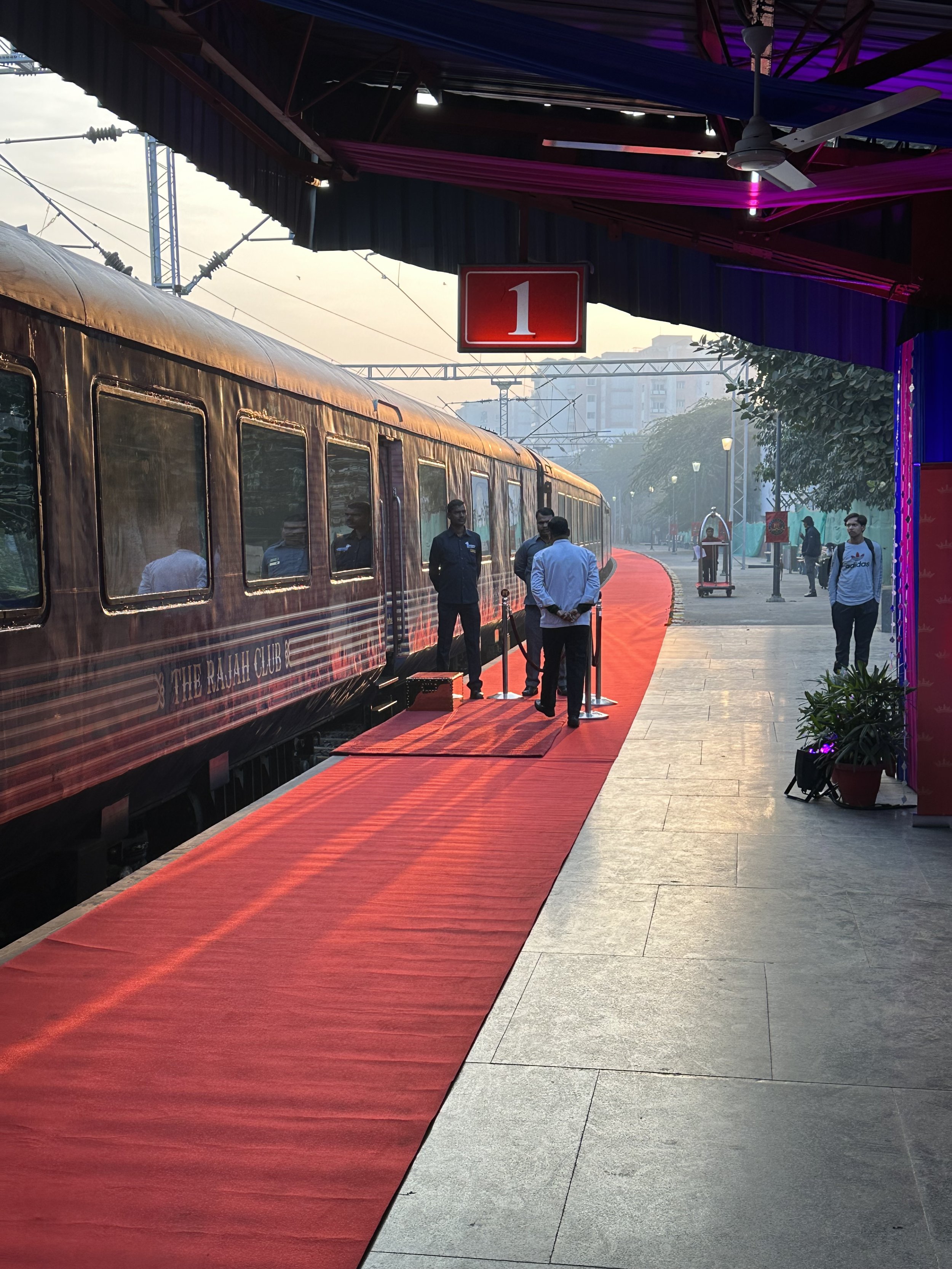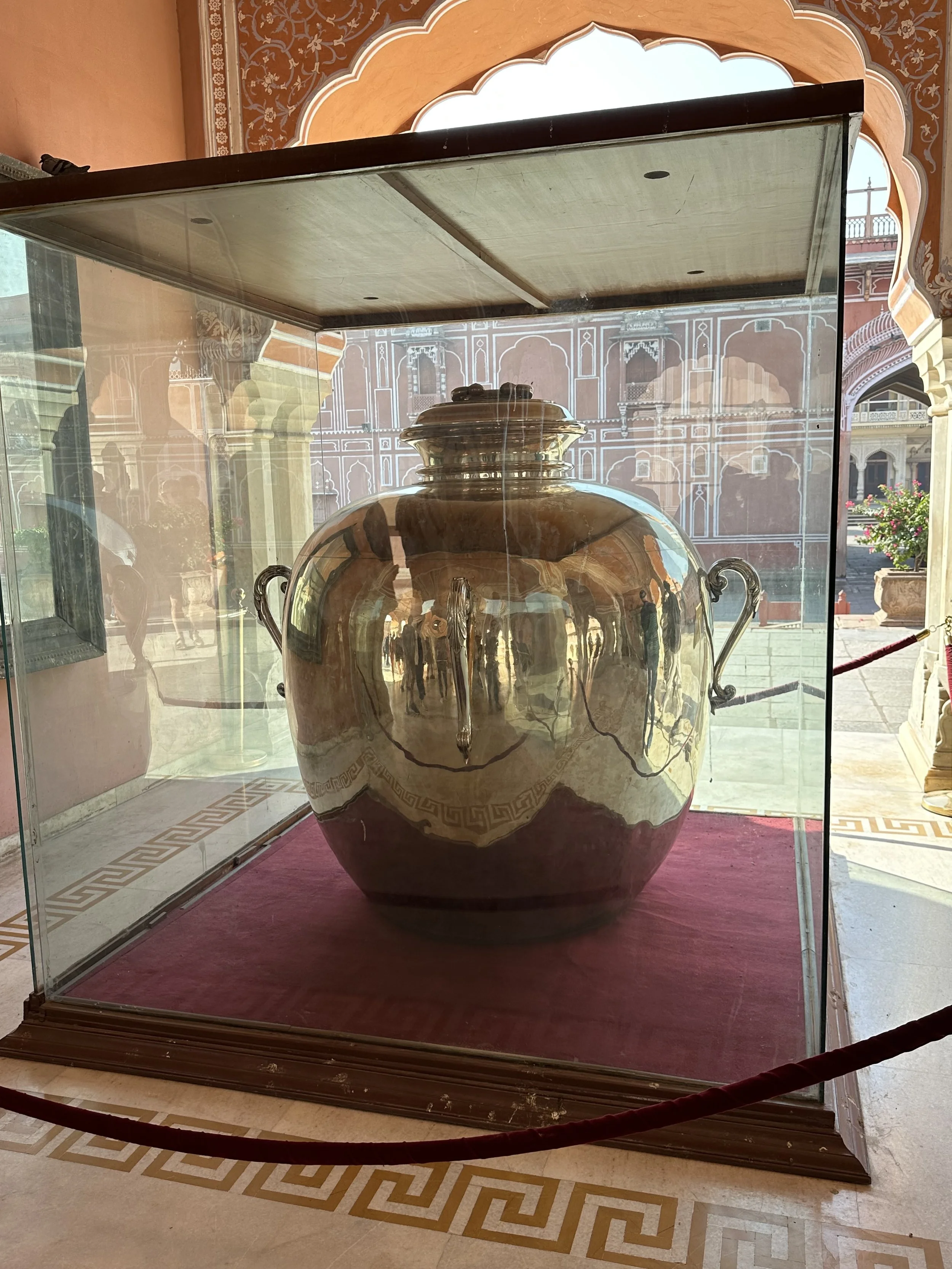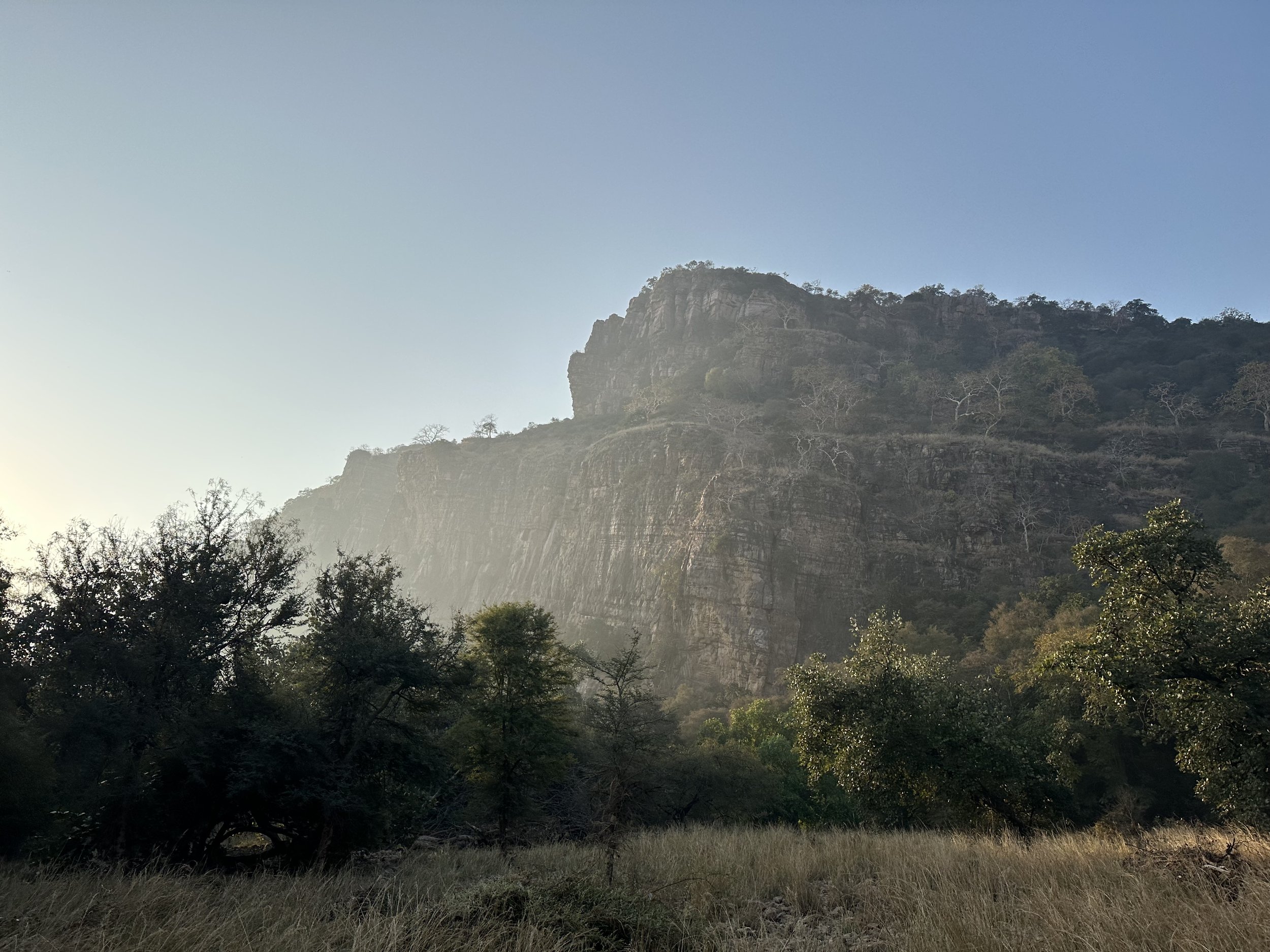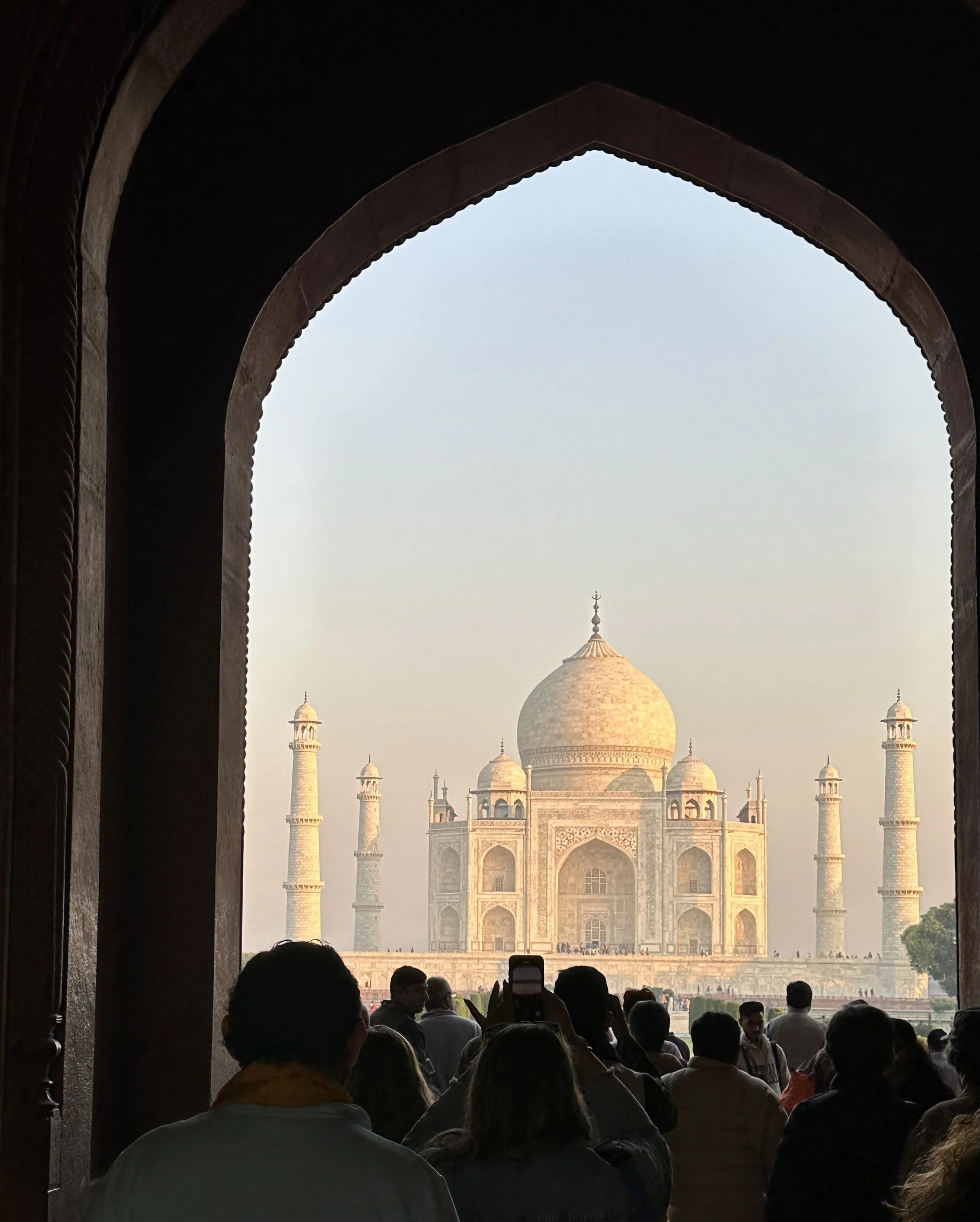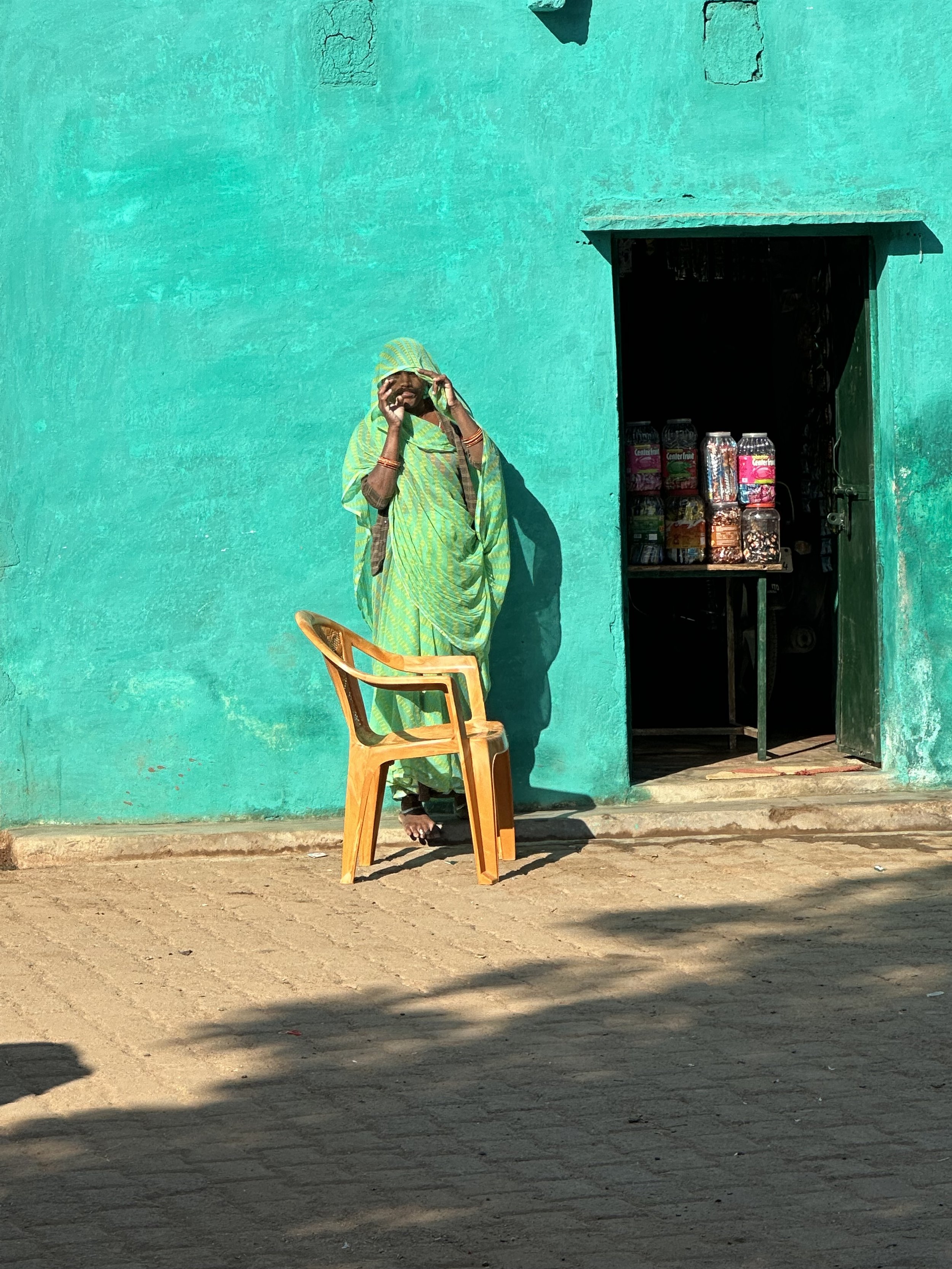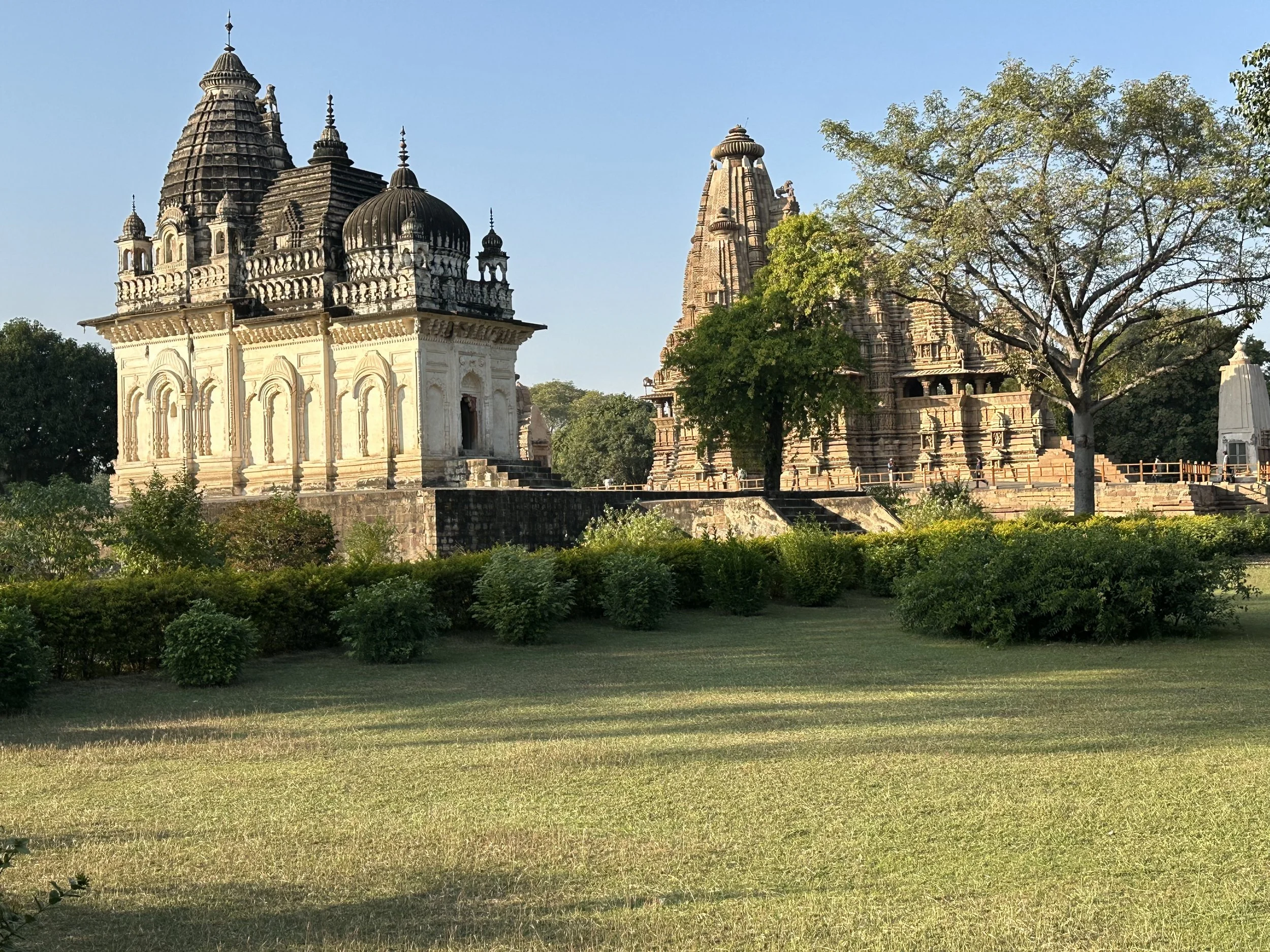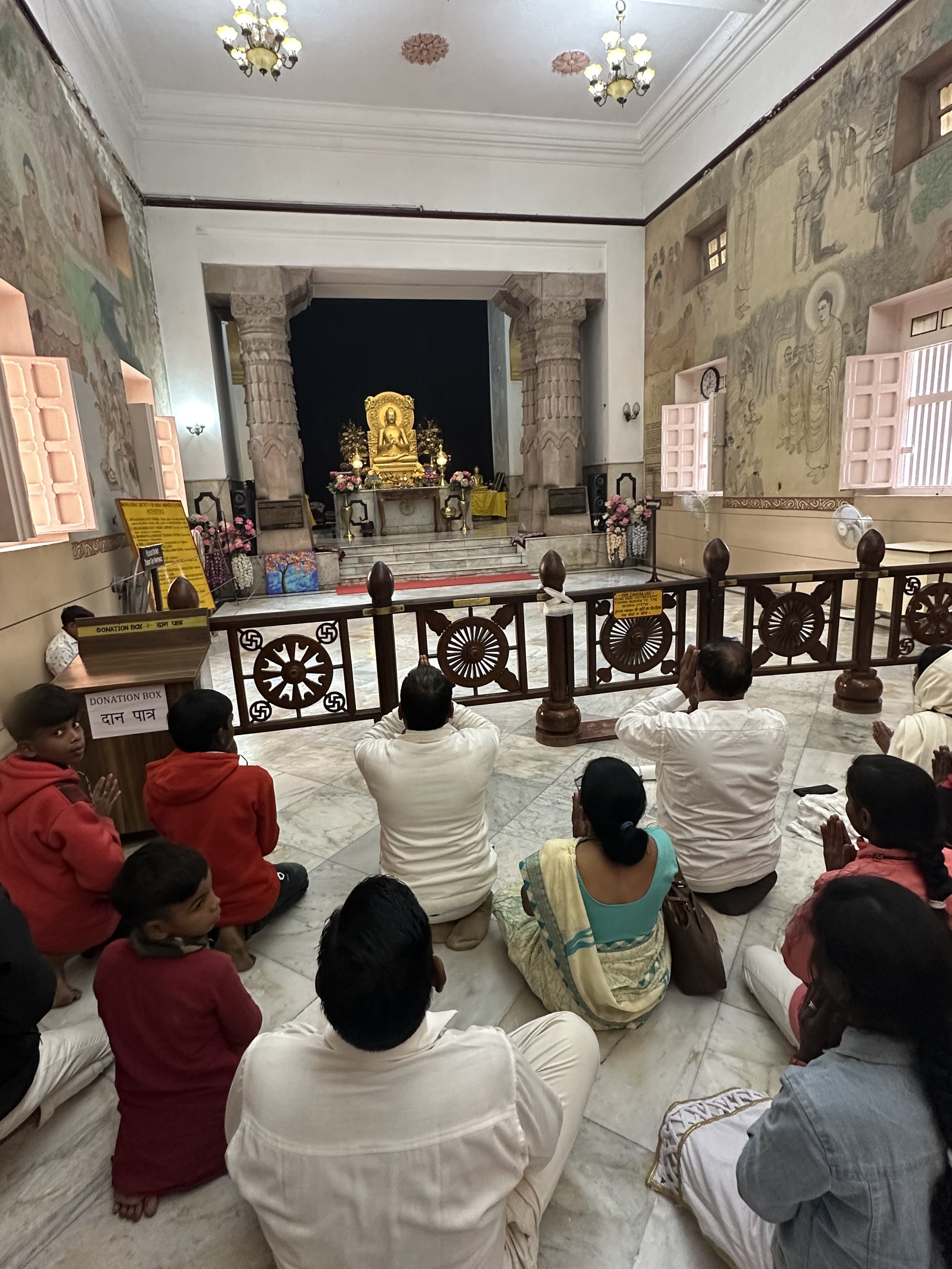The Baltic States April, 2024
“Freedom for the wolves has often meant death to the sheep.” - Isaiah Berlin, Latvian philosopher
Vilnius, Lithuania
In early Spring I made a short trip through the Baltic states. Sometimes a short stay is nice to get a feel for the location and mark it as a place you might want to return to and spend some time. Or conversely, check it off and be thankful you didn’t waste more of your time. I’ll state right off; I think I’ll try to come back to Lithuania and perhaps Riga. These are some really picturesque “old European” cities that have a lot to offer.
The Swedish Gate in Riga, Latvia
Town Hall Square in the very center of Tallinn, Estonia
Vilnius, Lithuania
The Baltic countries sort of fly under the radar as it relates to the European experience. They were some of the last to be organized into nations and then found themselves muscled and squeezed between their less than friendly large neighbors, Russia, Germany, and Sweden.
In fact, it wasn’t until 1200 A.D. that the Baltic tribes were subdued. The sleepy groups making up the Baltic region shared roots in ancestry and language. They were mostly farmers, physically strong, with no ambitions of conquering their neighbors. Peace loving and simple they were also, very unfortunately for them, Pagans. As Christianity was spreading across Europe, such regions presented opportunities for enlightenment and the profits that would follow. Enter the Northern Crusade. I had always thought the Crusades were just focused on the Holy Land, but lo and behold there was more to it. The Teutonic Knights, noble Crusaders sanctioned by the Pope (much like the Templars and Hospitallers), needed a home. So they invaded the Baltic. It took some time and very hard fighting, but decade by decade they took over much of what is today Lithuania, Latvia and Estonia.
Gediminas Tower sitting high above the center of Vilnius, Lithuania
The banks of the Nerus River in the center of Vilnius
Downtown Riga, Latvia
Riga, Latvia
Viru Gate Tallinn, Estonia
The long standing kingdom of the Teutonic Knights would eventually meet its own end (today they are just a small ceremonial organization) and their new lands would in turn, be gobbled up by the Prussians, the Swedes, the Austrians and eventually the Russians. But during these struggles over the 1500’s to the 1700’s a piece of the Baltic, that of Lithuania, took shape. For perspective, this small nation grew to encompass an area as large as what was once Soviet Europe. Eventually through a royal progression it merged with Poland to become the Polish Lithuanian Commonwealth. At its height in 1650, it was one of the largest countries in Europe and a world power. Ceaseless wars of conquest and poor fortune tilted them back on their heels, and their opportunistic neighbors again strangled and eventually consumed the proud state. It ceased to exist in the late 1700’s and was divided up between Prussia, and Russia; mostly the latter. Other than the short period between the two world wars, the ethnic groups were stateless for hundreds of years. Their populations and languages and cultures none the less remained very much in tact, and in spite of Russian efforts to “Russianize” them by mass deportations and resettlement efforts under Stalin, they retained their ethnic majorities and language. Even to this day.
Energy and Technology Museum Vilnius
Monastery of the Holy Trinity, Vilnius
In line with Tallinn's medieval appeal, the street vendors play the part
It was not until just 30 years ago with the fall of the Soviet Union that they regained their freedom and their place on the map. So now they find themselves like three little ducklings staring at the alligator’s mouth. The citizens are keenly aware of what their historic Russian overlords did to their ancestors and would no doubt do to them again given the chance. For these countries, NATO is everything.
So when a certain presidential candidate blurts out of his ass that he would invite Putin to walk into a member state should it not keep up its end, you can imagine the shiver that sends through their souls. By the way, these countries spend well more on military per GDP than the NATO target.
Vilnius
Presidential Palace Vilnius
I visited the Baltic’s major cities, that is Tallinn, Riga and Vilnius. The latter being my favorite. I found the people friendly and everyone I met seemed glad I was there. No squirt guns. Tallinn and Riga being on the coast can be accessed by many of the Baltic cruises that circle through the area. Vilnius is more in the center of Lithuania.
Visiting Riga, don’t miss the Museum of War, it’s located in an old tower that served as an armory. It chronicles the history of the area over centuries with as you’d expect a major anti Russian bias, even including exhibits on the Russian aggression in Ukraine. It’s not hard for the Latvians to identify with Ukraine’s plight.
The War Museum RIga
A Ukrainian Army jeep that didn't make it
In Vilnius the highlight is the central square in the heart of the city, it’s along the river and adjacent to a lofty castle that looks down on it. My favorite find however was the KGB museum. It is housed in a large building a kilometer or so walk from the center that served as their headquarters during the Soviet era. This was a communication and police headquarters as well as a prison. The tour paints a chilling memory of what the city endured under Soviet occupation, and after visiting you have a clear idea of the pain the population endured and won’t ever forget.
The cornerstones of the KGB building with the names of the Lithuanian patriots who lost their lives
The cell block in the KGB building basement
No love lost with Mr. Putin
Trying to stand in one of the tiny holding cells
A torture cell where prisoners were made to stand
Perhaps of all the long suffering imposed on Lithuania the greatest not surprisingly occurred during World War II, when the Germans invaded Russia in the summer of 1941, overrunning the Baltic in the process. At first there was a feeling of liberation by the population. They thought they could gain autonomy under German rule and many bought into the Nazi cause. This included hatred of the Jewish population numbering some 200,000. Central Europe was ripe with antisemitism even before the war and now inflamed with Nazi propaganda it exploded. Nearly every single Jewish man, woman and child were killed except a few thousand who escaped through visas to Curacao and Japan by the heroic efforts of some Dutch and Japanese aristocrats. Most were rounded up and marched to pre dug pits outside Vilnius in the Ponary forest where they were machined gunned and thrown into the pits. The German soldiers and aligned Lithuanian partisans carried out the massacre day after day without concealing their intentions. The victims were marched out of the city to the pits knowing their fate, encourage to die bravely. The stories of these killings, and how they were carried out sickened me even more than what I learned visiting Auschwitz. The massacre began shortly after the initial invasion and well before the Holocaust kicked off, leaving no doubt to the Nazi’s game plan, and their willingness to simply exterminate humans like you would spray for mosquitoes.
Perhaps the saddest photo I ever saw
The cobbled streets in the historical centers of Riga and Tallinn invite you to wander and explore. You can walk for hours amoung the old city walls, the towers and gates, stumbling into a small museum here and there. Strewn throughout the old centers, both along the major piazzas and the side streets are a number of restaurants and bars. Some quaint, some upscale. The food and drink I sought out was the local variety and I really enjoyed it. I even tried a shot of the local spirit in Riga called Balsam. It was their version of Malorts, the Chicago poison that we offer to visitors just to see the look on their face. This however is even worse, it’s like something you would use to mix oil paints. Throughout my walks of the historical centers I found the surroundings very clean, orderly and free of the graffiti that all too often sours me.
Augustin in Vilnius, great food
Mint Vinetu coffee shop in Vilnius
The Black Magic chocolate shop in Riga
Inside Black Magic
Folkklubs ala Pagrabs for a drink and music in downtown Riga
When there, the infamous Black Balsam
Olde Hansa Gild for lunch in Tallinn
How about some Borscht soup, one of my favorites
Cocktail Bar Alchemikas in Vilnius, true mixologists
I would imagine as the “go to” tourist hot spots of Europe get exhausted, these countries will get discovered. Sort of like Croatia or Northern Spain of recent. They have a lot going for them as tourist centers. A rich history, old forts, museums and beautiful almost medieval historical city centers with enjoyable restaurants and trendy bars. They are walkable, clean and seem safe. Hopping from one to the other requires a flight despite the relatively short distance, and sometimes isn’t even a direct one. I was limited to just visiting the three cities and didn’t get out into the countryside. In Lithuania I didn’t have time to visit the site of the massacres, but I will for sure next time I go.
Vilnius
Street art Vilnius
Vilnius
Yes I’ll go back, in the Summer or shoulder season. This part of the world can get dreary in the Winter and hopefully I’ll return before these cities become more popular. I have the feeling that they’re just a few TV shows or travel publications away from that fate. On the other hand, maybe if more Americans visit they’ll gain an appreciation for the fragile freedom of the Baltic countries and see NATO as more of a necessary investment in world piece and less of an opportunity to cut costs.
Macedonia March 29, 2024
“Heros and villains. Just see what you’ve done.” - B. Wilson/V. Parks
Mount Olympus
Alexander the Great. We are still in awe of the youthful leader, the supreme general. We admire his compassion to the conquered Persians and desire to unite the civilized world. Oliver Stone carefully researched his film and showed us the beautiful man in his white armor. It always amazes me how time, and in our own lives propaganda colors our view of the great men of history. No one would take issue with a school named after someone like Alexander the Great, or in more modern times Woodrow Wilson and Winston Churchill. Then we have the unquestioned villains like Attila the Hun, Genghis Kahn, and Columbus. In modern times Stalin and Hitler, whose names we speak only with caution. Or how about Putin and Netanyahu? I submit that if you plotted them on some grand chart of evil humanity, there is not all that much space between them. Is one a hero because he brought our side a to victory? Is one more evil because he caused incrementally more deaths in the millions? Wars waged by powerful leaders always seem to come out the same, any amount of destruction, pain and death can be either condemned for all time or in turn celebrated as the price of victory. But in reality war always is the same, whatever side you’re on. It starts with a portrayed noble cause and quickly degenerates to genocide and the murder of innocents. There is no righteous war, there is no heroic leader. We grind our moral teeth over how to feed the hungry, how to rescue the poor, and spread the wealth, and yet we flirt with the brink of war and begin a conflict with little sense of its guaranteed and enormous loss.
Ruins of the expansive Aigai Palace
The city of Aigai in northern Greece, the land of Macedonia, was the first capital and heart of the Macedonian Empire. Its ruins were lost to the ages but rediscovered and excavated starting in 1977 and now is a Unesco site. This is where Philip II met his end, and where his son Alexander was crowed king.
It was a mornings drive from Sofia Bulgaria to see it. The way in is poorly marked and the access roads are very rural. The local infrastructure at the site is poor. You need to do some walking and uphill at that. This is because the excavation and restoration of the entire archeological site is still very much a work in progress. None the less, the natural setting on a hillside, amoung the columns and blocks of the old palace makes a beautiful setting on a sunny day.
The theater where Phillip II was murdered
A short walk away is the city’s theater, which looks arena shaped. This is where Philip II, the mastermind of the Macedonian army and strategist who planned to conquer all of Persia met his fate, stabbed to death in his prime as he entered the theater to the cheers of the crowd. The intrigue of his murder was never settled and theories have been debated ever since. But never mind the motive, this act resulted in his young son stepping into his father’s place at the mere age of 20.
Being a young and unproven leader, he was soon put to the test by the now hostile neighbors and more importantly by Macedonia’s surrounding puppet Greek city states that saw a timely weakness. The great city of Thebes, ever impressed with itself, and underestimating the young king, decided this was the perfect opportunity to regain its independence. Freedom seeking, pro democratic patriots spoke openly swaying public support. The other city states made a start to help but one by one thought better of it. Athens, their immediate neighbor initially encouraged and supported them, but kept their soldiers at home. Insulted and ridiculed by the Thebans, Alexander non the less having brought a great army of 30,000 soldiers, initially positioned them outside the city gates in a spectacle. He hoped to prevent a battle and bring Thebes to its senses. The Thebans being a proud, athletic people were emboldened by their righteous cause. It was they with the moral high ground, the God’s were surely at their side.
They were all in. Now the facts, the statistics have a way of winning the day. Emotion and courage only go so far. The Macedonian army was larger, was much better trained, and employed the latest technology and tactics (the Phalanx developed by Philip II). Not to mention Alexander had demonstrated his battle prowess before, and he would as we know turn out to the potential “GOAT” of historic generals. It was a doomed contest. The Theban army fought courageously to exhaustion. They did everything to save their families inside the citadel. In the span of a day, Thebes was overwhelmed first in the field outside the walls, then in the city streets.
What stands out about this battle is that the Macedonians killed every soldier they could get their hands on, and any women, children, senior citizens, you name it they happened to encounter. The pure carnage finished only at nightfall, and then in the following days they proceeded to take what remained of the population, virtually every last Theban, into slavery. The city, its civilization, its culture all were erased. Alexander even had soldiers and slaves see to it that every building was burnt and its stones knocked down flat. Nothing remained, it was as complete a genocide as the world has ever seen.
His rationale is not hard to speculate on. He was pissed, he wanted to make an example to anyone else thinking of independence, etc. Maybe he even rationalized that the lives lost would ultimately save many more Greeks by securing his puppets with fear. Whatever; a city of 40,000 was crushed like a nuclear bomb hit it, and in those times, that was a large city. The second largest in Greece.
Compared to this great historic figure, this great ancient leader and conquerer, guys like Putin are just playground bullies. Alexander’s grand vision of first uniting the Greek peoples and then turning this into a world power can be contrasted to modern day conflicts such as the war in Ukraine. Consider too that the Ukrainians are as close in ethnicity, language and culture to Russia as Thebes was to Macedonia.
Maybe walking about the ruins and resting on stones from the ancient palace made me a bit philosophic. I admit I get overly agitated and annoyed with all the news and editorials everywhere that make emphatic and passionate judgements about our current world leaders. Often ignorantly comparing them to those of our relatively recent past without much perspective of who those leaders really were, the times they lived in, and what they were responsible for. So tear down a statue, rename a street, write a book about one great man and cautiously try to explain the devil in another. What does it improve?
Skopje is situated in a beautiful position to the surrounding mountains are valley
Back to Macedonia, the modern nation of Northern Macedonia is located just north in what is former Yugoslavia. After it recently achieved statehood, a dispute arose with the Greeks, who remain proud of the Macedonian Empires heritage. They didn’t like the new guys using the name. The “Northern” piece as added as a compromise. Continuing on my trip, I stopped in Skopje, the capital of Northern Macedonia.
The Old Bazaar area packed with stores and restaurants
Travce Gravce in the bazaare, one of the traditional dishes of Skopje, simple sausage and beens, but quite good
Hard to recall an uglier piece of architecture
Nestled in the midst of beautiful mountains with the Vardar River running through its center, it is a bit of a strange city. Ex-Soviet cities often suffer from ugly architecture, naked squares and a lack of parks. Skopje, perhaps feeling it’s historical association with it’s proximity to Greece, over time made an attempt to put up a monument or a statue just about anywhere it can fit one. The hodgepodge of varied cheap looking styles, the graffiti and the general bad artwork makes it look more like a Vegas casino or an amusement park. Too bad, because under all that is a culture and cuisine that wants to pop out. Maybe someday it will be a tourist destination worth visiting, but not today.
Norway Oct 27, 2023
“På plass ved kanonene. Nå skal vi slåss, gutter!” (man the guns. We’re going to fight boys) - Captain Willoch announces the battle of Narvik
Rare red and green Northern Lights seen from the ship
Norway is one of the countries best seen by ship seeing how it’s long and narrow with a beautiful coastline. It was my first trip to Norway, Candy had been to Oslo prior. This was our chance to traverse the North Sea, see the fjords and hopefully, if lucky enough, see the Northern Lights. We boarded the Cunard Queen Victoria and left Southampton spending our first two days at sea. The North Sea can be rough, and it was. Fortunately, it didn’t last too long. I took no medications along the way and was delighted to not feel any effects of the high waves. In my youth I would get terribly sea sick just crossing a bay or fishing in a calm Lake Michigan. I’d read somewhere that people can lose their sensitivity to motion sickness as they get older. Count me among them. One of the few things where your body improves with age.
Alesund
Our first stop was the southern Norway town of Alesund. This is a smaller city situated on an island at the mouth of several fjords. Like many Norwegian towns it was originally built of wood and in 1904 it burnt to the ground. Kaiser Wilhelm who vacationed often by royal yacht on the coast of Norway, was quick to send four ships full of materials to help rebuild it. The town’s appreciative citizens named a main street and dedicated a park and memorial to him. Today the stone architecture of the rebuilt town is a highlight. While in Alesund we took a boat ride south through the Storfjorden fjord. It was a great way to spend a couple hours just gliding through a quiet and natural setting. Here and there we saw small villages nestled to the shoreline below the steep mountainsides on both shores. Roads are still limited and many residents travel by their own boat or where possible a ferry.
Alesund
Storfjorden
The town of Bjørke at the far end of the fjord
Leaving Alesund we cruised north across the Arctic Circle and docked at the city of Tromso. The town center is small and there were some nice coffee shops and clothing stores. The sidewalks were icy so we didn’t wander too far. Later a bus ride through the hills made for some great views, but there weren’t any stops to take photos. This little urban area claims to be the northernmost city in the world. As we were only a few weeks away from the start of the polar night, the sun didn’t climb very far over the horizon. Tromso is also famous for a WWII story. The German battleship Tirpitz, sister ship to the Bismark, raided convoys from a nearby naval base up the northern coast. Damaged by air raids and unable to risk further sorties, she was anchored just off shore from Tromso to serve as a floating battery and protect against any allied invasion. Not long after, and very late in the war, high level RAF bombers would remove any threat, and sank the ship in its moorings. Mostly sold for scrap, portions of it still lie in the coastal waters for interested divers.
Tromso
Mid afternoon Tromso
Evening Tromso
From Tromso we made our way south to Narvik. To this point we’d still not seen so much as a smidge of the Northern Lights. Some of that was due to poor luck and some I think the presence of a near full moon. In addition the towns and ships lights didn’t help much. Before we left Tromso, there was a group excursion into the countryside at night to a dark sky location in the hope of catching a glimpse, but our shipmates told us there was nothing to be seen.
The iron ore business is still thriving at Narvik
Docked at Narvik
In Narvik we walked into town and visited the local history museum. Then there was a bus trip north into the countryside. Our destination was a another small museum that held examples of the Norwegian fishing boats, clothing and gear used over the centuries. Compared to the high tech ships we saw in port, it was amazing to see what these Viking blooded norsemen went through to make a catch and make a living. Later we took a night bus trip to catch the Northern Lights and it turned up empty, but we did see some nice stars standing outside in the cold.
Stopped at a small fishing village for a bite
The Northern Norwegian Boat Museum north of Narvik
Narvik has a more recent history. It was here in 1940 that a battle took place. You may have seen the movie on Netflix. In the Winter of 39/40, between the fall of Poland and the invasion of France, the world was watching Narvik. An important source of iron ore, not just to Germany but to England came from Kiruna in Sweden. The ore mines surrounding that area shipped this supply by rail to Narvik which was just a few miles west and the closest harbor. On a side note, all the main harbors in Norway are ice free year round due to the warmer ocean currents. That Spring, both sides had merchant ships in the busy harbor loading out with ore. Both sides wanted to control the supply. For the Germans, contrary to what we might have learned, the preference was for Norway to remain neutral. This would allow German ships to load out at Narvik and travel nearly all the way to Germany within the protection of neutral Norway’s territorial waters. Churchill being the “man of action” he was, decided to tip the balance. He mined the Norwegian waters off Narvik to impede the German’s path. This was actually an act of war against Norway. Hitler now seeing that he had to act, decided to invade Norway’s principal ports in a bold strike. However, the Germans, hoping to gain the cooperation of Norway arrived postured as “protectors” of Norway’s sovereignty. They wanted the ore and if possible some northern naval bases (thinking ahead to war with Russia), but there was nothing else strategic about it.
The Norwegians, with a few boats and a very small but brave army saw otherwise. They immediately refused. There would be no discussion. They drew from what they had and opened fire. Most of Norway’s ports collapsed to German marines and paratroopers. But Narvik was another story. With the arrival of the British navy, and then thousands of British and French soldiers, they fought on. They recaptured the town, then cut off and drove the German troops into the mountains. It was the first Allied victory of WWII. A hard fought and bloody one that lasted months. Then for some reason not clear to anyone, the British pulled out of Norway and gave Narvik back to the Germans. It remained in their hands until VE day. So this dramatic victory by the Allies went for nought, but today is still remembered with pride by the locals. The remains of German destroyers sunk in the harbor and the areas of heavy fighting are still marked. Those Norwegians we talked to, from bus drivers, to local guides knew the battle in great detail, all these years later.
A slice of the armor belt from the KMS Tirpitz preserved at Narvik War Museum
Remnants of the lost ships at Battle of Narvik displayed at Narvik’s excellent War Museum
Salvaged from the aft plate of a German destroyer that was sunk in the battle
Leaving Narvik we headed further south along the coast to our last port of call, Haugesund. Along the way there were a series of announcements on the ship’s PA. The Northern Lights were spotted. People rushed to the decks from dinner, cameras in tow. Even without a true dark sky we could see them. It turns out there was a major display going on in Europe, in fact they were even seen as far south as Italy. The luck that eluded us further north now reversed. We were in the right place at the right time and my iphone camera was up to the task. No tripod needed.
The lights are normally green, but the display was so significant that uncommon red and purple colors mixed in.
Haugesund had prospered and grew quickly as a center of the fishing industry. At one time herring were prevalent in the area, although today they are long gone and the petroleum industry has taken over. There are a number of beautiful old homes in town that were built by the wealthy owners of the fishing companies. We took a tour into the hills above the town. I think outside of the fjord cruise, it was the best excursion of the trip. The area around the city was once a Viking center and most believe it was from these shores that the famous Viking Rollo led raids to England and northern Europe. He would go on to establish Normandy. Also near here, there was an important sea battle fought offshore around 900 AD that was part of the earliest unification of Norway. Near a memorial to the battle, we climbed a small hill to see an old medieval stone cross. There are some 60 similar crosses in the area dating from when Christianity first found Norway. Their purpose is a not well established. Were they a place of worship while churches were built? Perhaps memorials to some event that took place at that spot. The guide said they believed they were placed along the coast to demonstrate to those sailing by that the location was inhabited by Christians.
Above Haugesund
The thousand year old stone cross named Krosshaugen.
From Haugesund we headed back to Southampton this time with calm seas. The trip checked off my list both the desire to see the Northern Lights and to finally visit Norway. I made note when we were in Tromso that they have direct flights to Svalbard island in the arctic where the Polar Bears roam. That might make for a nice adventure at some future date.
Egypt Sept 28, 2023
“From the heights of these pyramids, forty centuries look down upon us” - Napoleon Bonapart
The Romans and ancient Greeks marveled at the pyramids. They were as old to them then as the Colosseum is to us now. This perspective is a little hard to get your head around. It distorted my sense of what old really is. So while touring Egypt, every time we came upon a site that was only dated to the Ptolemy era or Roman times we tended to loose a little interest. After all we were there to see the “ancient” ruins. How strange it is to see these remnants of such a sophisticated civilization that endured so long (consider ancient Egypt existed as a nation longer than the time past since its fall ). More strange, is how today you can view paintings and sculptures that appear almost as pristine as if they were created just yesterday.
Artwork, not retouched, deep inside Nefertari’s tomb
Traveling to this place is not some comfortable luxury excursion. Even if you take the cushy route like we did via Viking cruise. We were very nervous about traveling to Egypt and so we opted for an escorted journey. Like a little kid put on a plane to see his aunt, we were met at the airport walking out from the gate area and then on our way home were escorted all the way through security. We were never on our own. Not being one who gravitates toward using guides and certainly avoids tour groups, I can’t argue for my logic other than to say anxiety is what it is. Yet looking back I never felt like I should have taken more of a go it alone approach.
The Nile downtown Cairo before it branches into the delta
Apartments under construction
Cairo is major urban sprawl, and driving through the city you pass its modern polished areas and its older third world poverty expanses. Regarding the later there is little concern for the importance of fine architecture and landscaping or shall we say street appeal. Most homes are designed to be nothing more than a place of refuge, and appear to be clinging to the landscape like barnacles on a pier. This approach however is very practical and efficient. You build a reinforced concrete building frame and leave the rebar sticking out of the top for when you need another floor. Then you buy the bricks as you can afford them so when the family grows and you have the materials, you expand. Certainly not the way we approach things, but given the economy and lending practices they face, it makes sense. Like most cities, Cairo has its levels of affluence. There are the really poor, then the working class neighborhoods and of course the wealthy areas with their adjacent and opulent malls and hotels. What it isn’t, is the third world dump you might have been led to believe. Anyway, I think two full days in Cairo is more than plenty. In total, we would wind up spending four there including nearby Giza.
Cairo viewed from the Qala’at Salāh ad-Dīn, Citadel of Saladin
The mosque of Muhamad Ali (the other guy) inside the Citadel of Saladin
Courtyard of the mosque
Inside the mosque of Muhamad Ali
I’m not going to chronicle the trip point to point, I’ll let the photos do that. As an overview I’ll describe the trip as basically having three parts; Cairo, the Nile cruise and the Luxor area. The beginning and end was spent at Cairo. In between we spent our time first seeing Luxor and then moving down the Nile south to Aswan and circling back, stopping at various points along the way. Our tour group was comprised of mostly Americans. Old ones. Funny how I feel a bit uncomfortable being around a bunch of old people moving slowly on and off tour buses, and forget entirely that I fit right in.
At the Egyptian Museum Cairo, this is the oldest Egyptian artwork in existence and celebrates the joining of the upper and lower Nile kingdoms.
The ancient game of Senet displayed at the Egyptian Museum, a precursor of Backgammon
Also at the museum, the sarcophagus of Akhememdon, the father of King Tut and not so well liked. His face and nameplate were removed soon after burial to prevent the gods from finding him and leading him into the afterlife.
It was the shoulder season, and yet it was so hot. Not Chicago hot, not Arizona hot, like Venus hot. Most days were over 110 degrees and the sun was brutal. I usually try and wear a hat if I’m outside in the sun for awhile and certainly sun screen. In Egypt, if you leave home without your hat you might as well have forgotten your pants. You cover up and scramble around looking for one. I routinely found myself walking a longer path, just to spend as much time as I could in the shade.
In front of the Djoser step pyramid, one of Egypt earliest attempts at the structures. Located at the Saqqara burial grounds just south of Giza.
Saqqara, just south of Giza
The art inside
The Great Pyramids of Giza
He doesn’t look happy to see me
There are sphinx everywhere in ancient Egypt, this obviously being the largest, perhaps the most weathered and worn.
The backdrop of nearby Cairo
Some perspective on the size of the stone blocks. At the base you can see the white limestone that once smoothly covered the exterior and shimmered in the sun. Most was long since stripped for building materials
After leaving Cairo we flew south to Luxor to board the ship. Our voyage would make its way south to the Aswan dam and back, and take most of the week. Like visiting castles or cathedrals in Europe, after a while the magnificence of the Egyptian temples and colossal works start to run together. They share a style that is both beautiful, and moving; yet after a while the sights seems to saturate you, making it hard remember what you saw where. There were a couple places that really stood out, and I’ll try and describe them in more detail. But before I do that, I want to touch on the experience of cruising the Nile.
The Nile
Between landscape paintings, old epic DeMile movies and museum displays you form an impression of this noble river. I fully expected to be disappointed. I was sure now it was smelly, cluttered with plastic and garbage like Chao Phraya River in Bangkok and busy with noisy barge traffic. It was none of that. The grand river was enchanting, at least the sections we traveled. I just enjoyed looking around as we passed by, watching the small boats go by and gazing at the weedy banks. Certainly nowhere in the world, at least that I can think of, does a river play such a prominent role in peoples lives, and it has for millennium. Egypt may be a big square on the map, but in reality it is all no more than a river and its banks. That’s it. The rest is desert. The greenery and farmland that runs along those banks at times is so narrow you can see the desert beyond from your boat.
Our River Boat
It’s a short flight to Luxor. Access on and off the boat was easy, it was small but comfortable and modern. The cruise began here with a tour of Luxor Temple and the Karnak Temple complex. Luxor or in ancient times Thebes, is situated on the east bank of the Nile and was once the heart of Egypt. At first the kingdom was centered at Memphis just south of Cairo and Giza, but later dynasties would move and build here.. Following the path of the sun and its parallel to life, the east side is where the population lived and the west bank was where it was buried. So the valley of the kings, like the pyramids are located on the west bank. The ruins around Thebes and its temple grounds are massive and we spent a good part and the best part of the trip there.
The Luxor Temple entrance. There were two of these 3000 year old obelisks, the one to the right of the entry was removed by the French and now stands in Paris at the Pace de la Concorde.
Luxor Temple and its colossal statues
Luxor Temple is striking, standing next to the Nile. Nearly lost, it was once covered in sand.
Inside the many still enclosed rooms of the Luxor temple
The Avenue of the Sphinxes stretches nearly two kilometers from Luxor Temple north to the Al Karnak temples. This is looking north toward Al Karnak.
The avenue was used for ceremonial processions including this piece which is a recreation
View to the Nile from Luxor Temple at sunset
On the living side of the Nile at Luxor, the two large temple complexes dominate the historical landscape. Luxor Temple to the south and the even larger grounds of Al Karnak temples north, joined by the Avenue of the Sphinxes. The various temples are surrounded by long open corridors and squares that are adorned with endless columns and statues. The various obelisks now seem randomly placed but that’s probably due to most (likely the best preserved) being pilfered by European powers over the centuries.
An obelisk at Al Karnak
Sphinx everywhere
Entrance to Al Karnak
Al Karnak
The Sacred Lake at Al Karnak
The Valley of the Kings and the nearby Valley of the Queens lies across the Nile from Luxor on the western bank and under the setting sun. We toured both. You are limited as to how many tombs you can tour on a ticket by park rules. The tombs are spread out and connected by dusty trails. The long ramp down into the small rooms is sometimes a bit tight. Some of the tombs are more extravagant, some more modest. Of course staying hidden and protected was paramount and only a few made the journey through time unmolested. The artworks and overall condition of the tombs longest hidden are magnificent. I made my way through as many as I could. Some you could nearly walk right in, others had lines.
Candy is in one of these balloons hovering over the Valley of the Kings at dawn
Valley of the Kings
Roads and paths through the valley lead to the tombs.
Inside Tut’s tomb, which is just a few rooms and rather small for his importance. Most of the artifacts and treasures from the tomb are in Cairo.
For now, Tut is under glass, still in his tomb. You would expect he’ll be moved to Cairo’s museums in the future.
Nefratari’s tomb is one of the most beautiful and best preserved. Remember Ann Baxter playing her in the Ten Commandments?
Situated between the valleys, and built back into the massive cliffs that surround it, lies the Hatshepsut Temple. Pharaoh Hatshepsut was not as famous as the well known queens Nefertiti or Cleopatra, yet she was one of Eqypt’s greatest rulers. Under her reign Egypt enjoyed a period of peace and prospertity, expanding trade and taking on some of it’s greatest building projects including Karnak. Hatshepsut managed to thrive in the male dominated world by characterizing herself in monuments and art as a male. Upon her death much of sculptures and depictions were destroyed by her successors who no doubt resented her gender. The Temple is acutally a mortuary and was built near her tomb to allow ongoing sacrifice to preserve her soul in the afterlife. The temple site was the scene of a terrorist attack in 1997 that killed 62 people, nearly all European tourists. The attack was particularly lethal due to how the temple area is situated which allows almost no escape. After this tragedy, the tourism business was nearly ruined for decades only reviving recently to be again diminished during covid. Today throughout Egypt’s great tourist sites there is extensive military presence and a clear indication that the Egyptians are going to go to great lengths to protect their tourist industry.
The cruise continued south to the Aswan dam, stopping on the way at various points along the shore and at islands for short tours. Given that the country is built around the Nile river, the Aswan dam construction had a massive impact on the lives of Egyptians. Control of the Nile floods protected their homes, stabilized harvests and provided energy. The original or low dam, was built by the British at the turn of the prior century. It was in the 1960’s that Egypt’s president Nassar realized the need for a much bigger and higher dam. First the American’s offered help but the deal fell through and it was the Soviet Union that financed the new dam which was completed in 1976. In the process, thousands of Nubian families were relocated, as were ancient historical sites. One of the major relocation projects was the Temple Philae complex, which was moved in its entirety to high ground on the isle of Agilkia in the middle of the Aswan reservoir.
Dendara Temple Complex
Dendera
Dendara
Dendara
The temple at Edfu
Edfu
Edfu
Edfu
Candy poses with Horus, the falcon god.
Notice the faces and hands have benn chipped away. This was very common at some temples and I was told that over time other religions found the depictions offensive and vandalized them.
Agilkia Isand and the Philae Temples
Philae Temple
At Aswan we took a smaller craft along the Nile to the top of the dam, then another into the southern reservoir to the visit the Philae Temple. On the way back to our boat we made a stop at the Aswan market for local shopping. A final stop was at a Nubian village, which was manicured and configured for the tourist economy but still had a charm and gave a look at life in what was once Egypt’s southern gate.
Young boys would paddle to catch up with our small sailing boat as we approached Aswan. Some sang songs others offered small gifts for whatever coins were available.
An old building used to raise water from the Nile.
This tired doggie is gazing north up the Nile from the top of the dam.
The Aswan Market
Got to sample the local coffee brew.
Aswan Market
Approaching the colorful Nubian Village
A tourist market in the village
The terrace of the new National Museum of Egyptian Civilization in Cairo
After disembarking our cruise where we started, we took a flight back to Cairo. There we toured the National Museum of Egyptian Civilization. The museum is brand new and still being furnished with treasures. Already it is home to nearly every important mummy ever recovered and they are in magnificent condition displayed carefully in a series of connected rooms. Their hair, teeth, skin and even in some cases wounds are eerily well preserved. Unfortunately no pictures were allowed.
On a final note, the day our trip concluded was October 8th. From the day before we began learning of the attacks in Israel. Sunday morning we knew it was bad, but wouldn’t understand the scope of the atrocity until we got home. Some of the guests on our cruise were leaving on flights that day to Tel Aviv and on to Jordan. No one seemed to be hesitating at least at that point. I for one was glad to be flying direct back to Rome. Having traveled to Israel the year prior we were reminded of just how quickly a destination can turn ugly. I guess you need to see what’s on your list as soon as you can. Things change.
On the way to Liverpool, Oct 20 2023
“Let me take you down…”
We started in London, visiting the museums, the Denmark Street music shops, and taking afternoon tea on Saville Row. We walked to Abbey Road studio with a slight detour past Paul McCartney’s house in St. Johns Wood. It was a cool wet day. I love London no matter the weather, it’s like New York but more beautiful. I think the city parks are unparalleled and the Victorian architecture makes everywhere you walk picturesque. Trouble is, it’s all just so damn stupid expensive.
Beers for our table by the fireplace at Victoria Pub
The one bargain for me is going to a neighborhood pub for some fish n’chips and a pint of cask bitter. Take in lunch with the friendly locals and get off the tourist paths. To that end, I recommend The Victoria Pub at 10a Strathearn Place just a few blocks from Paddington Station. If you wander around London you occasionally can stumble into (and out of) pubs like this just by chance. The food there is very good and the beer is perfect. London isn’t a new trip and we’d done it a few times, mostly “pre-blog”. Aside from the better restaurants and pubs (which I’ll take the time to share) it’s secrets aren’t hard to discover.
Abbey Road Studios
The world’s most famous cross walk
Paul’s house, still, in St. Johns Wood
The other little side trip of Britain we took in on our journey was Conwy in Wales. Which is just an hour or so train ride out of Liverpool on the north coast of Wales. It was our first visit to the welsh countryside and this was a small enchanting seaside village with a large castle looming above. Built in the 1200’s by Edward I, they say it’s one of the best examples of a medieval fortress in Wales. Spared from the wars and mostly in tact, it is large and easy to explore. We had a nice lunch in town and thoroughly walked the small grid of streets in just a few hours.
View from the castle
Now, that out of the way, the real focus of this trip and this blog post is centered on our finally making the pilgrimage to Liverpool. Yes, the sacred birthplace of the Beatles, the nest along the Mersey river that hatched not only the fab four, but Gerry and the Pacemakers, Cilla Black and of course served as the launching point for the British invasion.
We arrived by train from London at the Liverpool Lime Street station and stayed nearby at a Doubletree that was comfortable enough but mainly well located. It was a short walk to Mathew street and to the pier on the Mersey river. I can say straight out that if not for an appetite for music nostalgia, this city has little to offer. Just another well established industrial port.
On February 13th 1967, back when new music arrived in a little vinyl 45, the Beatles released a double A side record which was in itself unusual. Most extraordinary was that the two songs included were arguably each songwriters best. This record of Penny Lane and Strawberry Fields was intended to make a big impact. It had been six months since their last album, which in those days was an eternity. That combined with the fact they were no longer touring generated rumors of a break up, or at a minimum that their best days were behind them. In that setting, Brian Epstein wanted to make a statement and set things right before their next album Sgt. Pepper would arrive that Summer. These two new songs would explode onto the radio, and by the way neither would be on the coming album. Their management felt that it was sort of cheating their fans to include previously released music on a new studio album. Its incredible to me that they were that prolific, they had so many songs, that they could release several new albums a year and not even include the singles they made in between.
I remember hearing these songs the first time on a winter afternoon on WLS Chicago riding in the car on the way to my grandparents house on the South Side. It’s hard to describe to the next generation what their music meant to us in those days; had to be there I guess. My best attempt is to ask someone what song they ever heard that the first time played, they knew they’d just experienced something extraordinary, something that any new music would be measured against. Fresh, infectious, beautiful songs that you had to listen to again immediately. Every album they released had that impact, but on the 13th of February they reached a new level. These songs were of course about their home, their neighborhood. They were not just some new pop songs, they were art, painting the picture they wanted to share. Memories of two local suburban boys raised in a city not too unlike Chicago who were now conjuring up their emotions and memories.
Cilla Black statue in front of the original Cavern entrance
In Liverpool Beatles tourism is everywhere and everything. Shortly after John Lennon’s death the city realized what it had and has made its best marketing effort ever since. Our first morning there, we walked a few blocks down to the pier area and took a tour bus. The tour was one of many offered, covering a route out into the burbs and past the lad’s homes and neighborhoods. Now the bus line was nothing special but our guide was. He had first hand stories and was truly an authority on his subject. He talked about his mother seeing the Beatles over a hundred shows at the cavern club, her girlfriend Cilla Black a waitress there would get her in the door for free before she herself hit it big. He described at length the city as it was and how it now is, which to my surprise hadn’t changed all that much.
Seeing the bandmates childhood homes and neighborhoods you could imagine the times of their youth. Liverpool was recovering from the war, music was being discovered by the city’s school children and everywhere emerging in skiffle groups. Everyone wanted to experience and explore American rock and roll. These fledgling musicians could walk or take a bus to school and each other’s homes. Places like Penny Lane where connection points along the way and into the city.
Penny Lane
John’s playground
In our own youth we all had a park or field to play in. John’s was Strawberry Field, a short walk from his home. He and his friends would sneak into the private park and spend hours there. His Aunt Mimi, who raised him and who he called almost weekly the remainder of his life, would tell him he’d better stay out. It was private and he could get hung for sneaking in. He would reply to his aunt that it was only just for fun and besides, there was nothing to get hung about. Paul and John’s houses were only a mile apart. John grew up in a large beautiful home in the affluent part of town. The other three in small working class row houses.
John’s house, his bedroom behind the window upper left
Ringo’s working class street
Back in the city center we saw where Epstein’s record shop and office was. Just a block from the Cavern Club. Then across from the club on Mathew Street the spots where the boys would have a beer after the shows and grab a bite. I didn’t expect much of the renovated Cavern Club but was surprised to find it was essentially in the same spot, rebuilt with the same bricks and perhaps captured much of the feel of the original, albeit without the packed sweaty humanity and smoky air of it’s peak years.
A statue of Epstein in front of his then office
You can read every book and biography about the Beatles, but I think you don’t fully understand their world until you visit their origins. Even just a few days in Liverpool takes you back and brings it all familiar.
The Cafes of Vienna, April-May 2023
“I love the java jive and it loves me” - Oakand and Drake
What’s your favorite big city? Mine keeps evolving as I myself do, and these days I’ve come to love Vienna. To my view, this grand city does the best job with all those things you would hope cities would offer.
Vienna might not have the historical sites of Rome, the restaurants of New York, or the weather of San Diego, but taken as a whole it’s magnificent. The place is clean, civilized, feels safe and just looks beautiful in every direction. The museums are great, there is the music, the monuments, architecture, the parks and shopping. It’s small enough to walk around, and big enough to dilute the rising flow of tourists. But my favorite aspect of this city has to be the cafes. There is something about taking a table in a cafe that has been around for a hundred years and having a fine coffee and nice sinful pastry all the while surrounded by people who want to do the same thing you are. Just happy to be there, relaxed, and taking it all in.
I never covered Vienna in the blog, I guess it never came on as a new destination. Then the thought occurred that what I like best about the city might be the thing that needs some documentation.
So here we have it, my take on the best cafes in Vienna. Perhaps it will be useful to you if you find yourself there, and certainly if you have insights into locations I’ve missed or see things differently I hope you’ll comment. The cafes I chose for my review are all well established attractive institutions. The list is far from all inclusive, in particular options with modern decor or recently opened were right out.
All right then, here is the list: Cafe Central, Cafe Museum, Cafe Sacher, Kaffee Alt Wien, Cafe Landtmann, Cafe Sperl, Cafe Schwarzenberg, Cafe Hawelka, Cafe Eiles, and Cafe Frauenhuber. We’ll take them one by one and I’ll conclude by naming my favorites.
CAFE CENTRAL
No shortage of delights to enjoy with your coffee
The Cafe Central. You’ll find this gem in the middle of town, true to it’s name. The interior is spacious with high vaulted ceilings. Now I should point out straight off that every one of the cafes on my list I found to have great coffee, so there is nothing here to draw a distinction with. Some had better menus but for me this contest was all about the setting and the overall experience I enjoyed. Cafe Central gets good marks for being a large beautiful space with a nice selection of pastries. The only down side is that due to it’s location and reputation it can fill up quickly and spawn a line out front.
CAFE MUSEUM
Some Topfenstrudel perhaps
The Cafe Museum. This is a bit smaller and notably busy due to it’s position. It is located off Friedrichstrasse a few blocks from the Opera House. The original cafe dates back to 1899 and although it’s all nice enough, a renovation in the last twenty years gives it a newer feel that I wasn’t too excited about. Nearly all these cafes have a history as a hang out for someone famous. This locale was reportedly a favorite of Gustav Klimt an artist I certainly admire.
CAFE SACHER
The famous Sachertort, a rich thick chocolate cake served with whipped cream
The Cafe Sacher. There was a long line when I visited, it was a Sunday and although early in the travel season it still drew a crowd. I almost gave up on it, but I’m glad I didn’t. Once inside the cafe, there is nothing rushed or touristy about it. It was very elegant and relaxing, and the wait staff were very professional and let you take your time. The cafe is famous for the Sacher cake, a rich chocolate cake served by the slice. It’s great, but although it was invented here, many other spots around Vienna serve the same thing.
KAFFEE ALT WIEN
The Kaffee Alt Wien. This little cafe in the center of town is wallpapered with colorful posters and had a unique feel, sort of artsy and hip. It wasn’t packed and you had no trouble just walking in and sitting at a table. I think it’s a nice choice if you’re in the neighborhood, but I wouldn’t walk out of my way to visit.
CAFE LANDTMANN
The Cafe Landtmann. Located on the Universitatsring Avenue, a broad boulevard that cicles the historic area and sports a nice bike path, this large cafe is across from the Rathause and University of Vienna. It’s popular but has ample seating. Best of all is the outdoor area which looks out into the Rathausplatz and the busy avenue. A beautiful setting in the open air, and for people watching. Unfortunately this visit it was a rainy day and we sat inside, so the photos don’t really demonstrate how beautiful it can be.
CAFE SPERL
Viennese pancake, more like a crepe and terrific!
The old pool tables at Sperl
The Cafe Sperl. This cafe is a bit off the beaten path, located in more of neighborhood setting southwest of the museums. Still an easy walk from the transit lines and the main tourist area. More of a locals spot, it has a vintage feel with high arched windows and a lofty ceiling. Oddly there are some pool tables on the one side that don’t get much use, but the cafe has been in place since the 1800’s and had it’s share of important regulars. One being the Archduke Ferdinand. It seems although renovated periodically they do well to maintain is original ambiance. There is a small seating area outside, but it’s charm is found to the left of the entry at a table by the window.
CAFE SCHWARZENEURG
The Cafe Schwarzenberg. Located on the the Ringstrasse, is easy to reach from the tram and not far from the Opera house. Dating back to the 1860’s it’s seen a lot and although it took it’s share of abuse in WW2, it seems well maintained and retains much of it’s original grace. Being in a busy section of town it fills up but not to the point of generating a long line like Central or Sacher.
CAFE HAWELKA
The Cafe Hawelka. A smaller cafe in the city center, it is neither one of the oldest or prettiest on the list. Claim to fame here is a long history of being a favorite of local artists. Frankly it just rounds out the top ten.
CAFE EILES
Some tea, as you can only do so much Apple Strudel and coffee in one day
The Cafe Eiles. This is another neighborhood cafe. It was one of the first I sought out when I initially visited a few years back. Situated a few blocks outside the city’s tourist center you’ll find it behind the busy Renner-Ring, the Parlament and Rathaus buildings and situated on a corner. It’s not that busy so you shouldn’t find a line outside. I love that it has a local feel, like a place only frequented by those who live and work in the area. It’s very old but the management is newer and energetic. This cafe just seems comfortable, welcoming and has the same historic feel of the best cafes in the city. Get an upholstered seat by the window and blend in.
CAFE FRAUENHUBER
The Cafe Frauenhuber. This cafe may be the oldest in the city. It doesn’t excel in any one aspect, and may not be your first choice but it covers all the bases and is worth a visit. It has a pretty street view with a small outdoor seating area, there are the old vaulted ceilings and of course a rich heritage that spans hundreds of years.
The most elegant Cafe Sacher
So in summary what are my recommendations?
For an outdoor coffee on a nice day, it’s Cafe Landtmann hands down.
For a touch of elegance if you catch it in the off season, Cafe Sacher.
For it’s impressive space and furnishings, Cafe Central.
The best overall? I like a cafe that embraces the ambiance, history and neighborhood feel all at once, and my favorite is Cafe Eiles. It is as they say, easy to find and hard to beat. With a close second to Cafe Sperl as it shares the same qualities, it’s just a bit more of a walk.
Sarajevo, April 9 2023
“One day the great European War will come out of some damn foolish thing in the Balkans” - Otto von Bismark
Returning to Italy this Spring I found a cheap flight to Munich and instead of heading straight to Sirolo, why not take the opportunity to cover some new ground. It was a short detour, first to Vienna, then Sarajevo and finally to Belgrade. I prefer to travel by train, but that wasn’t possible as although there are trains here, few cross the borders. Fortunately the flights were direct, short and inexpensive.
Main hall of the Military Museum of Vienna
From Munich I headed to Vienna by train, which is a great launchpad for flights into the Balkans. Near the main station is the Military Museum, the former national armory is a beautiful museum that covers the full history of the Austrian empire. Arriving next in Sarajevo I stayed in the old town, the cab ride was easy and inexpensive. In fact I found prices to be very reasonable overall. The old town is mainly a walking district with stone streets that twist past coffee shops, restaurants and little tourist stores. This historical center is not very big and follows along the Miljacka river. You don’t need anything but comfortable shoes to get around and I felt at ease walking everywhere.
Baščaršija Mosque
Traveling into the former Yugoslavia you quickly notice the mix of cultures. Although the population share a Southern Slavic ethnicity, things fragment quickly from there. Divisions are old and complex. There are Serbs, Croats, Bosnians, Albanians, and further south Montenegrin and Macedonian. Layered on top of that is the religious mosaic, Muslims, Catholics and Orthodox Christians. Some parts of this tapestry are more plural but many are concentrated on one group or another and those pockets are interspersed. Then there is the influence of the Turks who ruled most of the territory from the 1400’s until they were driven out only less than a hundred years ago. A long rule that left roots not just in religion, but in architecture and cuisine.
The Sebilj or public fountains installed by the Turks. Hundreds once covered the city as a water source for it’s residence, now only this one remains.
Gravur, one of the great little cafes on the square
At the turn of the last century as Turkish influence was shriveling, modern Bosnia, Slovenia and Croatia became ruled by the Austrian Hungarian empire. During this time the Serbs had partially carved out and restored their nationality, but the other groups fell under Austria’s might. In those conditions you would have expected revolutionaries, and anarchists to be prevalent and they were. In some cases they were well organized, and much like today, nations played sponsors behind the scenes. Unlike today, assassinations were all too common, and one in particular triggered a cataclysm.
The shallow Miljacka River
Just a short walk from my hotel, is where on June 14th, 1914, Franz Ferdinand and his wife Sophie were assassinated. The spot is like any other street corner except for the plaque and markings in the pavement outlining where the assassin stood facing their motorcade.
The story of this crime is tragic on several levels. First there is the poor Archduke who made the trip against good advice, in part because it was a rare opportunity for him to make a glamorous appearance with his wife Sophie. In Vienna his uncle the Emperor Franz Joseph (angered that he chose a wife outside the dynasty) would not allow her a proper title or to be present at his side in official events where she was forced to follow well behind him. However here in Sarajevo and on military duty, those rules didn’t apply and the trip was timed with their wedding anniversary. A splendid occasion where he could proudly display her at his side and where they could be treated as royals together.
The site of the assassination looking from across the street toward where Princip stood
From where Princip stood
Just moments before the assassination. Note the front wheels beginning the mistaken turn.
Same shot today
Next we have the assassin Gavrilo Princip. A quiet lad who led a painful youth in poverty, struggling to find meaning and direction. That is until he unlocked his fervent devotion to the Serbian cause. He was just a boy and he knew well that he was suffering from tuberculosis. Fate would place him as a pawn in the center of this Balkan chess board.
Of course the greatest tragedy of this day was that it marks the very first event in a long chain of bad news that would ultimately last decades. An excuse for the initial war that would rage for four years, kill eighteen million people and after a short pause bring us the final act with WWII. Now you can’t blame poor Princip for all that. Europe was wound very tight and moving on a deliberate path to a major conflict. It was likely only a matter of time before something snapped.
The Archduke’s preserved clothing in Vienna
That day saw an odd and bizarre series of events. Princip was a member of Young Bosnia, a Serbian gang intended on assassination. In the morning, with the motorcade leaving the train station, this gang took positions along the main road and first attempted to bomb the Archduke’s car which swerved deflecting the grenade to the car behind, seriously injuring it’s escort. Staying on route and continuing a few blocks further to the city hall, the angry Archduke dressed down the Mayor, but oddly decided to go right ahead with his plans. The only adjustment being a trip past the hospital to check on his wounded escort. On the way, in a moment of confusion, the royal’s car turned off the main drag and the officer in charge seeing the driver made an error shouted to stop and backup. Now these vintage cars required some coaxing to get into reverse, and while temporarily stalled just inside the street corner, who should be standing by but Mr. Princip. Some say he was buying a sandwich at the corner deli, but that’s doubtful. Without hesitation he fired two shots at the car not more than five feet away from him. One bullet pierced the sidewall and struck Sophie in the abdomen. The other struck the side of the Archduke’s neck just severing his carotic artery. Both bullets were fatal within a few minutes. Princip was quickly captured. After a grand trial he was jailed for life, as he was too young to be executed, and died in prison a few years later. He never showed remorse for his work, only explaining at his trial that he had no intention to kill Sophie.
The car is preserved as is the bullet’s hole that went on to kill Duchess
Today the car, the Archduke and the Duchess’s clothes, the murder weapon and other belonging are on display at the Military Museum of Vienna. There is an entire room devoted to the incident.
Now I’ll admit that I find the Serbs a different breed of folks. They are tall, good looking, headstrong and I understand can be a bit confrontational. So that when they erected a monument to Mr. Princip in a park in the center of Belgrade as recently as 2015, it doesn’t strike me as too much of a shock. Many Serbs see him, and always have, as a sort Patrick Henry to the cause. None the less, I for one find it ugly and bizzare to dedicate a statue to him or any assassin. It’s like building a statue to Lee Harvey Oswald, and at least he didn’t spark a world war.
Princip’s monument in Belgrade. The pigeon was no doubt Bosnian.
The other major historical chapter for Sarajevo is how it survived a nearly four year siege in 1992 by Bosnian Serbs during the Bosnian War. Closely surrounded by snipers in the nearby hills people endured one of the longest sieges in modern history. Cutoff from supplies they managed to survive digging tunnels under the enemy lines. For periods as long as six months they were without water and electricity. Today the bullet holes are still evident on many buildings, and you can just imagine the daily peril of people racing across streets dogging gunfire. In the old center there is a small museum tucked away on a side street that documents the war’s atrocities. In a short visit there you’re drawn close to sickening accounts, photos and memorabilia. Painful more so now with the parallels taking place in Ukraine.
Damage remaining from 1992
From Sarajevo I took a very short flight to Belgrade where I stayed in the cobblestoned old town. The area is lined with cool bars and restaurants. Belgrade is interesting but not extraordinary in any sense. The grafitti there is worse than anywhere I’ve seen and smoking is allowed everywhere (as it is in Sarajevo), so visiting is best done in Summer months when you can sit outside. The fortress in the city center is a large, centuries old landmark that is well worth a visit. It has an interesting war museum with great relics of old tanks and weapons. A short stay and I flew on to Sirolo with a Vienna connection.
The ancient fortress in Belgrade
Belgrade’s hip section
From what I learned on this little jaunt, it’s hard to believe that the countries who now comprise the former Yugoslavia will remain at peace. There are so many generations of trouble, pain and bad blood that it seems like it would take a long time for it to all fade away. The ethnic tapestry, the divisive cultures and religious tensions haven’t had much time to heal. I just hope various drives toward EU membership will give people more prosperity and a better life in common.
Vietnam, February 26 2023
“We are here to help the Vietnamese, because inside every gook there is an American trying to get out” - Colonel in Full Metal Jacket
When I was twelve, I think I knew more about the geography of Vietnam than I did my home state of Illinois. Every night came the news. The maps, arrows, locations of battles all captured my attention. The body counts, the video clips that I can still see if I close my eyes, burning monks, napalmed civilians, and the infamous shocking, pistol to the temple street execution. We debated the war in grade school and there we split the argument, just like the rest of the country. I wasn’t sure who to listen to. Back then newscasters kept their opinions mostly to themselves. I didn’t like Jane Fonda much (I hadn’t see Barbarella yet), and then there was John Wayne doing his best to show the war as WW2 all over again. I guess for the most part I saw the war as America doing more of what made us a great power, and it wasn’t until probably John Lennon’s influence that I came to think otherwise. Gradually the mistake became very obvious to me.
The same car Quang Durc drove to Saigon to set himself on fire
I still remember sitting on the living room floor and watching the lottery on TV with my brother Vic. It was all winding down then, thank God, and we weren’t as scared of the draw as we might have been. We would miss out on the free trip to SE Asia.
Point is, it all made quite an impression at an impressionable age, and I’ve always wanted to visit the far off scene of the crime. For me there was really no better way to do that than by cruise ship. That’s because Vietnam still has some really bad infrastructure. A train from Hanoi to Ho Chi Minh City is painfully slow. The traffic is just an all day jam and a bee hive of all types of vehicles, prominently motor bikes which seem to be swarming everywhere. Yes, a cruise made sense and booking a year in advance on the heels of covid got us a great price on a luxury line, Silversea. The ship would sail for nine days from Hong Kong to Singapore making three stops in Vietnam.
Hong Kong
Bamboo scaffolding, strong stuff
Hong Kong didn’t disappoint, it’s impressive. We had some good dinners, took the famous ferry ride, rode the tram up to “The Peak” and appreciated some great views. Taking some long walks I saw a city that looked tranquil and busy, with no signs of discontent or protest. Maybe they were wearing down, or maybe the media made more of it than it was.
Hong Kong skyline from '“The Peak”
Dinner Hong Kong
Embarking and disembarking on Silversea was pretty easy compared to other cruises, the ship is not that big. In total we carried less than 400 passengers and everything about the cruise was truly first class. The service didn’t miss and the food was more varied and overall better than on any cruise I ever experienced. This ship is more about food and drinks and less about entertainment. Although the shows they did put on were quite good and the handful of singers they brought along provided for some nice evenings either in the theater or spread into the various clubs and bars around the ship.
Our ship, the Silver Spirit preparing to depart
Ha Long Bay at sunrise
After a day at sea, our first stop was Ha Long Bay, we arrived at sunrise and not by coincidence. The islets that decorate the bay, nearly two thousand of them, are like limestone sculptures that look surreal in the morning sunlight. We must have spent over an hour passing through the tiny islands before we docked. Our first excursion was a harbor cruise on a junk boat which made one stop at a limestone cave on one of the bigger islands. There were signs noting that plastic containers were strictly prohibited, as the government is making what appears to be a difficult and late effort to stem water pollution. I wish them luck. Like most mainland Asian coastal cities the water and air quality is tragic.
Later, I headed into town with a few new friends from California to check out what turned out to be a very pretty town center and a sprawling outdoor market. It all was fascinating and tourist free, and as diverse and expansive a market as I’ve seen. There I had my first Vietnamese coffee. Made with condensed milk and served over ice it was sweet, refreshing and although it won’t replace my morning cappuccino, I really enjoyed it.
Vietnamese coffee
Utilities are a bit complicated in Vietnam
Back to sea, our next stop was Da Nang. We actually docked just up the coast and from there and took a bus for a tour of the city of Hue. Both these names, Da Nang and Hue, were large in my memory. In Hue we toured the historic center, the Imperial City. Hue was the site of one the war’s major battles. During the Tet Offensive several Viet Cong divisions quickly overran the under strength South Vietnamese garrison there. US marines would take it back, house by house (you may recall the scenes from Full Metal Jacket) and finally re-hoist a flag on the same pole that stands above the fortress grounds we toured. It was a bloody fight. It ended as another American tactical victory and yet a strategic disaster. The battle did a lot to demoralize the American public’s faith that the war might ever end in victory. As we toured, bullet holes and shell damaged walls still display the evidence.
Imperial City in Hue
Our final port of call in Vietnam was a two day stop at Ho Chi Minh City, Saigon to us Americans. We arrived mid day and that same afternoon took in a bus tour of the city. It was as congested and overrun with motorbikes as you would imagine. A busy town that is a mix of colonial architecture, historic buildings and a good deal of new construction. The tour included visiting a large indoor market that sold everything from Rolex watches to soup. The many street food stands looked appetizing but I decided to play it safe.
The old post office in Ho Chi Minh City
Inside the post office, the man is everywhere
Rex Hotel, home to the rooftop “Five O’clock Follies” press conferences during the war
Weasel coffee? Not an urban legend, beans digested by civits before being roasted
Touring the city further, we made a stop at the Reunification Palace. This large building was constructed in the 1960’s and served as the seat of government for South Vietnam. Rooms here hosted visits and conferences with American dignitaries like Henry Kissinger. Underneath the building were bunkers used during the war for communications and war rooms. When Saigon fell, tanks pushed through the front gate capturing the building, and those same tanks stand on display to greet the tourists as they arrive.
Reunification Palace
One of the tanks that “liberated” Saigon
While Candy took in a street food tour, I headed for the Chu Chi tunnels just northwest of the city. This was an elaborate system of underground works spanning 75 miles and built over several decades and wars. The clay soil is like hard rock, making the tunnel’s construction a monumental effort and its destruction nearly impossible. Although they were damaged extensively by modern US weapons in repeated efforts, they were a constant open wound along the battle front. The vast area was covered with booby traps, ambush holes, and a network that allowed sheltered movement throughout the area and right under American troops. Touring the works it became clear to me just what kind of adversary we were dealing with during the war, and why we couldn’t win it the way we chose to fight it. Everywhere on the tour was the evidence that the Vietnamese soldiers were utterly dedicated to their effort, no hardship, lack of food, lack of materials, no amount of pain could deter them. As long as they could breathe, they were working to kill one more American soldier. At Chu Chi you get the sense of how insane it all was. It seems so impossible in today’s American society that you could randomly pluck young American boys from their homes, cancel their plans and dreams while shoving them into this cruel environment, and for what? Nothing less than a war crime against our own youth.
A fellow tourist seeing if he can fit into the tunnel entrance
A booby trap, that’s not the original astroturf
An unmodified tunnel I tried out. It’s incredibly narrow
A US tank, left where it died
There were many displays and demonstrations of booby traps
This tunnel was a 100 meter section widened for passage, and still a challenge to get through
Then after this sad tour, the next day we visited the Saigon war museum. Exhibits show a decent display of American equipment but the museum is mostly photographs of war atrocities (just the American ones) and paints a clearly one sided portrait of the war. Now I’m quick to criticize the US historical record, and I have no illusions of our mistakes and long history of killing innocents while waging unnecessary wars. I don’t see us as much different from any other country that waged a bloody war. They are all bad, and every nation that participated is to various degrees a guilty party. However seeing this museum left me angry and disappointed, especially in depictions of the US home front. They took a lot of space to show how the world supported them with anti war protests and demonstrations, but grossly understated those same sorts of efforts on the campuses and the streets of America. In an entire museum floor of such displays, the portion that showed our resistance was maybe eight feet wide. Maybe it’s like a family thing. I don’t have any problem being critical of the US, but when someone from another country does it, I just want to fight them then and there. I’m glad the museum came on my last day in Vietnam.
Outside the war museum
A whole floor on the subject
The little piece to acknowledge our anti-war efforts
Back to Saigon, the city is expansive and rapidly growing. I think overall the country is following the same path as China to economic prosperity and will be a force in the coming decades. I was left with an impression that the population here is focused on work, on education and improving the lives of their future generations. I wish them luck and hope they will continue to move toward ties with the West and away from China. We might have a leg up actually, the war with the US lasted a decade, yet their conflicts with China have spanned centuries. There is no love lost between them.
The Hyatt Bali
The ship ended the cruise in Singapore, a city I had heard so much about. On arrival it was off to the airport to spend a couple days in Bali. A short visit as we were relatively close and wanted to get a sense of what all the bucket list fuss is about. We didn’t stay far from the airport but it was still a 20 minute cab ride through the island traffic.
Hyatt’s private beach
Sunrise on the Bali beach
We stayed at the Hyatt Bali on the eastern shore. A large beautiful resort with an expansive pool and a private beachfront. Along the waterfront a long paved path served as a sort of boardwalk and you can trek a good distance past restaurants, bars and hotels. The view of the sea and the Agung volcano and a large island just offshore is captivating, especially at sunrise. No tours here, just good food, relaxation and the obligatory poolside Pina colada. Then back to Singapore where we stayed a few more days and took in the city.
Gardens by the Bay in Singapore
Staying the last few days in Singapore, I just wanted a Hilton near the center, and the hotel wound up placing us in the middle of what felt like the most densely packed part of the city. The large neighborhood looked more like India than well India. Next time we’re staying at Raffles Hotel where we stopped for lunch, centrally located and just beautiful. Our Hilton neighborhood has lot of nice restaurants close by but getting a cab to go anywhere was a challenge.
Singapore is a pretty cosmopolitan place with large ethnic neighborhoods, diverse religions/cultures and a thriving downtown. It’s pretty clean, orderly, wealthy and growing. Everywhere I looked there was a new building going up or a road being improved. I was a little apprehensive about their strict laws that cover minor mistakes like chewing gum, jaywalking or tossing a cigarette butt (non of which applied to me—well except jaywalking), but I didn’t feel uncomfortable anywhere. The parks are just beautiful, and it’s one city where you want to take time to just walk through them where you can. The residents love to picnic and they seem to have taken the pastime to new heights.
Singapore sling, where it was invented
Waiting for a cab at the beautiful Raffles Hotel
Typical sidewalk in Little India section
I made a visit to the old underground British command center named the Battlebox which is situated in a hilltop park that once was a colonial fort, Fort Canning. The underground works are well preserved and the fortified bunkers reminded me of the Churchill war rooms in London. Unfortunately I wasn’t allowed to take pictures, but I can tell you it is very well preserved and I felt as if I was stepping back in time. While I was there I took the time to read about Singapore’s history during the second world war.
Entrance to the Battlebox
Old fortress gate at the park
Oops, I noticed the signs as I was reviewing my pics
Picnicking in the park
There is quite a story there. Shortly after Pearl Harbor, the Japanese moved into the Philippines, Indonesia and Malaysia all at once. In most places there wasn’t much to stop them. However, Singapore had a large British force stationed there. Situated on a large island, protected by coastal batteries, a major naval base and some 85,000 allied troops, it stood strong. The city was a critical piece in the British Empire and Churchill was adamant that it needed to be held at all costs, more specifically to the last man. A force of 36,000 Japanese moved first into the Malaysian peninsula and then south to attack Singapore across the Straits of Johor. In what was the worst defeat in the history of the United Kingdom, some 5,000 defenders were killed and 80,000 taken captive. The British military gallantry of WWII so celebrated in film didn’t make an appearance and they were outmaneuvered, outfought and undressed by a Japanese force half their size. Percival, the British commander who oversaw the debacle was never court marshaled and even was present with MacArthur at the Japanese surrender. Sadly the fall of Singapore was all the more tragic considering the occupier’s brutal reputation, and the POW’s didn’t fair well. Britain would reclaim the city and hold it until the 1963 when Malaysia was given independence. Singapore being a bit unique then broke off on it’s own, becoming one of the worlds smaller states that punches way above it’s weight.
The trip ended with our early arrival at the Singapore airport for a direct flight to San Francisco and then on to Chicago. There was talk on the cruise that the airport was a marvel, but we didn’t take much note. Like it’s an airport, how interesting can that be. Well, the Singapore airport is incredible, if you should find yourself there, it’s worth missing your flight to take time to see the humongous mall that surrounds a four story man made waterfall. Fortunately we had some extra time to take in lunch and even tour the mall besides. Finally, we were more than ready for our flight, all 17 hours to San Francisco.
South America, Jan 12 2023
Who is the gaucho amigo? - Steely Dan
Fly fishing and golf share some common attributes. Both coax you into the great outdoors, both require time and money, and both can be frustrating as hell. I gave up the latter some years ago. I found the only thing I really liked about golf was walking the fairway and having a beer with my friends afterwards. The golfing part, well it just wasn’t fun for me. I quite honestly would rather be chopping wood in my backyard, in the cold rain, with a dull ax, naked, it goes on.
Fly fishing on the other hand I somehow enjoy. I’m no better at casting than swinging a club, but it just doesn’t seem to matter. With this sport you find yourself not just outdoors, but immersed in nature. You can be standing in a stream without any sign of humans and feel part of what’s going on. Fish trying to feed and avoid danger, birds strafing about from hawks to heron, and insects following their life cycle that begins and ends in the waters of the stream. Unlike a golf course, man made and static, the stream transforms and fights back. Fish evade, waters pull at your legs and the insects can rudely harass you. There’s a game to play. What type of fly will work today? How do I get it to behave like a real one? Where are the fish hiding in the heat, and how do I use the wind?
Catching fish is nice, but it’s a small part of the experience, at least for me. I think of fly fishing as more of a great way to spend time with your friends. You compete against the environment and not each other. As you travel from spot to spot you talk about all matter of subjects, laugh at yourselves and make an earnest effort to make each others experience enjoyable.
My first fish of the trip, many more to go
Now if you’re lucky enough to have friends that are well into this sport and willing to entice you along to more exotic destinations, then all the better.
Patagonia is one of the more remote and beautiful spots on the globe. It’s name given by Magellan’s entourage who described the natives, the Patagón, as giants. Most of the expanse of Patagonia lies further south than either Australia or South Africa, and as you might expect it’s no easy commute. A fourteen hour flight via Houston to Santiago, another three hour flight to Balmaceda, followed by a five hour drive to the lodge, half of which is over unpaved backroads.
Dinner on arrival at Santiago with Curtis and Dave
The road trip in was a bit tight
The lodge sits in the middle of a 360,000 acre ranch near the Argentine border. For perspective that’s about half the size of the state of Rhode Island. The ranch is on the leeward, arid side of the mountain spine of the Andes. As we drove in from the airport, we traveled through the rainforest up the coast and then crossed the divide into the drier valley pastures of the ranch. The ranch itself is laced with streams and spotted with numerous mountain lakes. The only residents include some 30 Gauchos, 45,000 sheep and 12,000 cattle. You can drive for hours and not see any signs of humans beyond an occasional fence in place to help control the grazing. A vast open landscape framed by the Andes, blanketed with wide valleys and waiting to be challenged by only eight of us fishermen. No one else allowed, and in pairs with a guide we set out each day to have a go.
The rainforest on the western side of Andes
The arid eastern side
As recently as 21,000 years ago, all of what is now Chile and most of Argentina was compressed under a mantle of ice. The glaciers would gradually recede and now the Southern Patagonia Ice Field is all the remains. Still today, the field is one of the largest non polar ice fields in existence. A highlight of which is the Perito Moreno glacier which you can see up close by boat tour, but that’s another trip. When the glaciers receded the Andes mountains were scoured, plucked and reshaped into he present terrain.
As we drove to our fishing spots, we were treated to diverse geologic sights. Moraines of various types, giant U shaped valleys framed by the sides of mountains cut neatly as if by a giant knife. We didn’t hike the mountainsides but were told the rocks are extremely sharp and their obsidian peaks form a strange and beautiful horizon.
All dressed up for the day ahead
Setting out in the morning
As you’d expect throughout this big ranch wildlife coexists with the ranchers, albiet with some difficulty as it includes some formidable predators. Occasionally pumas are spotted, and more often foxes that known to be as big as large dogs. They can kill sheep hunting alone. There are numerous birds, flamingos, heron, giant condors and hawks.
The ranch is called Estancia de Los Rios, and the lodge was created a few years back with an agreement between the ranch owner and a fly fisherman friend who together intended to take full advantage of the area’s potential. The ranch owners agreed to build the lodge, then lease it to the lodge management and include exclusive fishing rights. The lodge itself is a modern but rustic building with six guest rooms, an expansive dining area, and a large comfortable den that is built around a wood fireplace. Three meals a day, all prepared by a talented chef, local wines and of course Pisco cocktails. These Chilean cocktails, made with a type of local brandy look like a foo foo drink (maybe a Grasshopper), but are surprisingly refreshing and addictive. One was waiting for us on our return each day.
Lodge dinning room
A great spot to tell fish stories
Round of Pisco Sours
There were optional overnight excursions included as well. One was a three hour horseback ride to an overnight campsite under the stars. Another (which I went on) was an overnight at a small cabin built next to a stream. Either way you couldn’t go wrong and everyone decided on a night at one option or the other.
The tranquility of the cabin setting
One of our fabulous lunches
We fished different water every day, and were fortunate to enjoy unseasonably warm and clear weather. Our last night included a dinner with the entire staff where a complete lamb was barbecued on a spit in a special round dinner hall constructed for just the purpose.
The larger trout could be found in the glacial lakes
It was as good as it looks
Since we were traveling a long way, we originally wanted to see about including another stop on the way back. So we carefully planned a three day extension of our trip so we could see Machu Picchu. Everything was in place when the news broke over the holidays that Peru had erupted into demonstrations and the park was temporarily closed. In a judgement call right before our hotel became non-cancellable, we backed out.
A detour to Brazil, the Mercure Hotel
In an effort to make the most of the mess of flight credits and connections home that remained we looked for alternatives. Dave and Curtis headed to Argentina, adding on a few days fishing for some river monsters, Dorado and Piranha. Having been to Argentina prior, I decided to take the opportunity to see Brazil, which was high on my list but not on Candy’s. I reached out to a Brazilian friend about where to visit with just the few days available. In conversation, I realized Brazil’s cities can be a bit precarious for a naive wanderer like myself. I decided to head to Salvador, where I’m lucky enough to know people. Now informed on where to go and where to avoid, I felt more comfortable. Camile took me on an afternoon tour of the old city and following that we all met at a local spot, the Porò Restaurant for cocktails and dinner. The food was great and the drinks even better.
Great lunch spot Casa de Tereza
Salvador or better said Salvador de Bahia, is the region’s capital and dates to the 1500’s, it is one of South America’s oldest cities and the first capital of Brazil. The city has a heavy African ethnic and cultural influence that shapes is population, it’s cuisine, it’s music and dance. Its people are a well blended fusion of European, African and to a lessor extent native Indian groups over hundreds of years of interracial marriage. The city is busy, vibrant and in every direction seems to look out on the ocean. I felt safe but the number of security personnel at the hotels, restaurants and the ever present military police gave one pause. Also, for the record, English speakers in Salvador are a rarity.
MJ shot a music video in the historic center and made an impression that hasn’t faded
Dinner with Hielo, and Camile
Reflecting on this trip and further back to the one Candy and I took to Argentina a few years back, I think of just how much culture, wild nature and diversity exits south of us. Something to think about as you go about your dull dark winter weeks up in the northern hemisphere. Why wait for an August vacation? Within the gap of a few time zones lies a vast beautiful continent at it’s Summer peak.
India, Nov 18, 2022
The miracle of life, the third world - Monty Python
India has been a travel priority for quite awhile. It took a few years and some false starts but we finally got there. I like to craft my own travel script but this one felt overwhelming and complicated. Since I’m not fond of the tour bus style of travel, we weren’t quite sure how to move forward. Wandering around on the web, I happened on the idea of a train tour. We love trains and this seemed like a fun way to keep the trip safe and simple. India is, as we all know, the third world on an enormous scale. A large country that’s home to well over a billion people, the vast majority living in an impoverished, and mostly polluted environment, and yet it’s just spectacular. The India we saw had unique, expansive landscapes, towering temples as if from some fantasy, and urban areas that swarm and steam.
One of the two unique dining cars on the express
We came up with three luxury train options, and after reading a lot of reviews, finally settled on the Maharaja Express. Starting with a direct flight from Chicago and a one night stay in New Delhi it was all train from there. You journey for a week between Unesco sights, sleeping onboard every night, dining in luxurious vintage railcars for all your meals with the exception of only a few occasions hosted during the tours. Everything is included in a wonderful week of cruising over northern India. All under the care of our attentive, wonderful tour hosts.
Welcome Aboard!
There were about thirty five guests on the train and we seemed outnumbered by the enthusiastic and dedicated staff. Nineteen cars long, and all for just the handful of us. Two dining cars, two lounge/bar cars, and an entire car devoted to the kitchen. The food was great, and considering it was all prepared on the train it was phenomenal. There were a nice range of options on the menu, but I stuck with the Indian cuisine the entire trip.
Rolling through New Delhi over brunch
We set out from New Delhi in the morning, and I couldn’t wait to get out of there. The air pollution is oppressive and left everyone with a cough. Although the air quality improved as we headed into the countryside, it never really cleared up to the level most of us are accustomed. On our way out of town we sliced deep through the city exposing the poverty and difficult life of most of it’s residents. Cinder block buildings, no plumbing, blankets for doors and campfires here and there. As we rolled along, the disparity all too evident between the “haves” and “have nots” made your heart sink. Like a movie where a medieval king on a jeweled palanquin is carried through the slums of his kingdom. I felt an uncomfortable sense of my good fortune to have been born in the right zip code.
Yet, people everywhere were welcoming and seemed delighted to have us to look at. Folks without much to their name, were busy, dressed well, and to my eye looked after themselves and their neighbors. Strange sights. A man getting his haircut by a barber standing near his ramshackle home with people all about. Children playing on the railroad tracks with their toys. We must have passed and seen hundreds of thousands of people. No one fighting, no one arguing, no one angry or scary looking. Along the way we even encountered some locals that wanted a picture with us white Imperialists, like we were movie stars. Happiness maybe had little to do with which side of the glass window you were looking through..
Amer Fort at night
Inlaid designs were a common site in temples, many using precious jewels
The train crept along most of the time, occasionally breaking in to a sprint and that usually at night. Our first stop was Jaipur. We arrived there later than planned and adjusted our itinerary to see the Amer Fort that evening instead of the next day. Despite being beautifully lit at night, I’m not sure if the palace isn’t best experienced by daylight. Regardless, it’s magnificent and massive. We traveled from courtyard to courtyard. The most interesting of them being the fourth courtyard, built for the many queens the Raja called his family. It was designed so these kept women and their entourages could live together and socialize in the open courtyard, yet afford complete privacy for the king. In the evening he could move by secret passages to any of the apartments for the hookup of his choosing. The queens always prepared just in case the horny bastard should happen by. His concubines never knowing who he saw that night, keeping jealousy to a minimum. As Mel Brooks said, “It’s good to be the king”.
Red carpet arrivals at destinations were the rule.
City Palace Jaipur
The next morning we toured the city palace in Jaipur, which is still home to the local royal family. All the palaces we saw were incredible works of art and after a while they almost blended together and overwhelmed us. Yet, there were several that stood out, more on that later. One of the highlights of the city palace were the giant silver jars that were used to carry water for the Raja when he traveled to England for the funeral of Edward VII. He was never without his “bottled” drinking water from the river Ganges (no thanks).
One of the two giant silver water vases
The next day was a little safari to Ranthambore National Park, our jeep crawling through the park trails in search of Tigers and other wildlife. The park is beautiful on it’s own, and although we didn’t spot one of the some eighty Tigers who live there, we did get close up views of the deer and bird life. This was once a royal hunting ground now put to better use as a reserve. We learned the work to protect and restore the Tigers in India has been quite successful.
Our Ranthambore safari starts with some wild peacocks
No need for a defroster
One of a kind gate
No tigers found this day, just beautiful surroundings
Later that day we visited Fatehpur Sikri on our arrival in Agra. This Unesco site was my second favorite site on the trip. This city was built in red sand stone and is in fantastic shape despite its age. It was built in 1571 and completely abandoned only twenty years later. They overestimated the ability to supply water, and realizing they couldn’t keep up, simply left. After that it was rumored to be haunted, so people stayed away, thus preserving it.
One of Fatehpur Sikri’s many buildings
A sophisticated water collection system and cistern wasn’t enough to save the city
Early the next morning came the Taj Mahal, just seeing it was worth the whole trip. We visited at sunrise to witness the first rays hit the white marble. It was awe inspiring. I don’t think I have ever seen a work of architecture anywhere that rivals it. The grounds butt up against a major river and include reflecting pools and a number of fine buildings all set symmetrically about the palace. But it’s not a palace, it’s a mausoleum, all built to hold the grave of a queen and later the Raja himself, who by all accounts outdid himself and even during his time was accused of going too far with his check book. I couldn’t believe the age of the building, because it’s in perfect condition.
First sight as you walk into the courtyard
It hardly seems real
Every inch a work of art
Its unmolested survival is due in part to the use of a multi religious mix of writings and art that adorns the building rendering it sacred to all it’s invaders. The architect is unknown for certain, but is believed to be Sedefkar Mehmed Agha, the same man who built the Blue Mosque in Istanbul. We remember our tour guide in Istanbul gushing praise of his genius. I won’t try and describe the engineering that protects and holds the Taj Mahal stable all these years, but suffice to say it is simply a marvel of human engineering. After the tour we had an outdoor lunch nearby complete with Ravi Shankar style tunes and fine champagne. A memorable experience with great food, sunshine, a gentle breeze, and the Taj Mahal overlooking our little luncheon.
Champagne and lunch
Just one more view
Thursday was a trip to the old town of Orchha to visit its ancient palace and then head off to a small village nearby. We traveled from the station first by bus to the palace and then made the rest of the journey by tuk-tuk. A swarm of the motorcycle powered tricycle cabs kicking up dust as we all set out. Our driver managed to get lost several times but we finally joined the group. The idea here was to give us a feel for daily life in India in the rural villages, which I’ll say was nicely done and very interesting. It was however by all accounts a bit staged. I think we were able to see more of how people really live on our detours.
Palace at Orchha
Orchha
Elementary school class in session
Cows rule
Retail establishment
We then drove to see the expansive grounds that hold the many temples of Khajuraho, another ancient and fine example of Hindu, Mughal, and Buddhist architecture. By this time we were bit overwhelmed by all the magnificent temples and sat out much of the exhausting walking lecture that ensued. Now these temples dating to the 9th century did have some peculiar artwork that spoke for itself. It had to be the oldest pornography found in the world. Actually all the hundreds of relief sculptures adorning the temple walls were meant to depict everyday life at the time, so imagine that. You can see a few more explicit artwork examples in the gallery.
Studio 54 way back when
Finally on Friday we made our last stop at Varanasi, or is it Kashi or Banaras? This is one of the oldest and most sacred cities in India, and a major pilgrimage site. This was the only stop where we were accompanied by an armed escort. We had a squad with us armed with automatic weapons. As we got off the bus here and there walking through the crowds, I noticed there were no other western tourists to be seen. It was the first and only time I felt a bit vulnerable despite our escort.
Here in Varanasi we saw the ancient Buddhist temples and sites where Buddha himself first began his preaching. But the highlight of the tour came after sunset when we set out on the river Ganges, our boat tour passing large religious ceremonies and cremation sites. It is believed that if you die here, and have your ashes spread on the river Ganges you will enter nirvana as the river flows to heaven. Modern navigation has done little to dispel the idea. On our boat tour we passed no less than two dozen cremations going on at different stages. Families praying along side and doing ritual bathing in the river. Further downstream thousands were gathered on the shore and in boats for a large religious celebration that included a number of priests praying in unison followed by some type of ritual anointing. It’s was all a true “where the hell am I” experience, the sort of cultural revelation we all long for in our travels. Then we made our way back to the train for one last nightcap as we sped to back to the New Delhi station where it all began. The next day we disembarked the train and headed straight to the airport for a long flight home.
Setting out on the Ganges River
India is at once inspiring and depressing. So many people living on top of each other. Somehow sharing limited resources. A country with several languages, religions and ethnic groups. One guest with us who was from the south of India told me he understands less of the language in the Dehli area than I do, English being the only language that spans the whole country. There is so much to experience there; so many beautiful Unesco sites, the great food, the diverse culture. In contrast there is bad air, and litter spread on a scale like I’ve never seen. In places in fields and along the right of ways there might be a wide layer of plastic and trash nearly a foot deep. People, men specifically, pissing wherever they choose. Stray dogs everywhere and cows that act like they own it all. One cow suddenly went after one of our new friends from Yorkshire and gave her a severe bruise. We speculated she wore the wrong color blouse. Then again maybe the cows hold some grudge against the Brits. Kidding aside, it was a bit scary. Speaking of the British, in my view one can’t help but feel their long occupation left an influence that today is still an integral part of what India is, from the language to game of Cricket.
I think India is a place I would recommend to everyone to experience and I enjoyed the trip immensely, but for me one week on a train was just perfect and just enough.


















